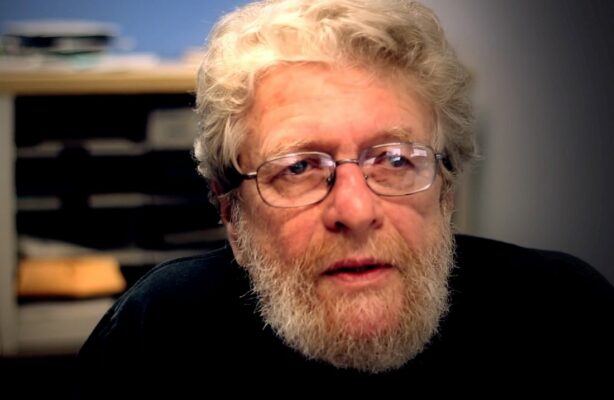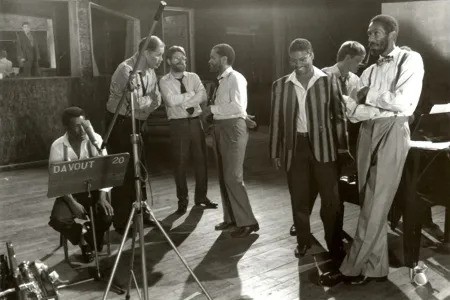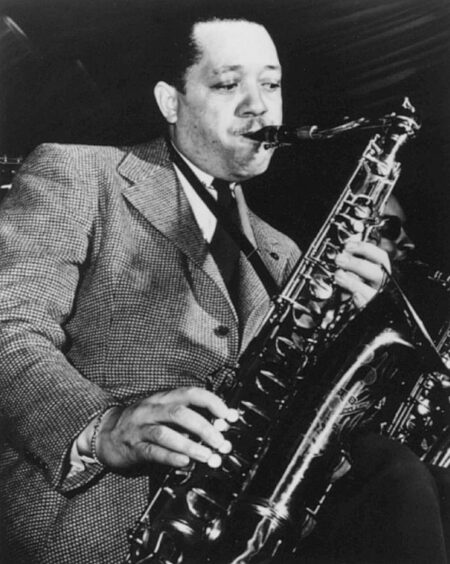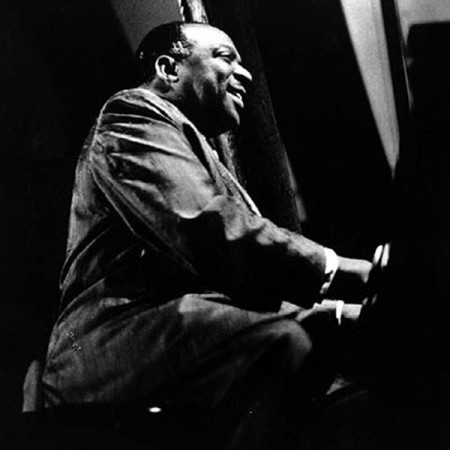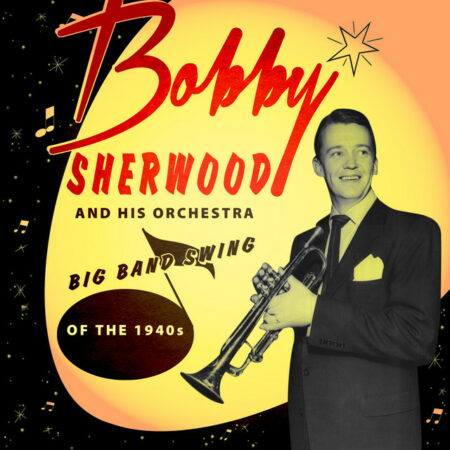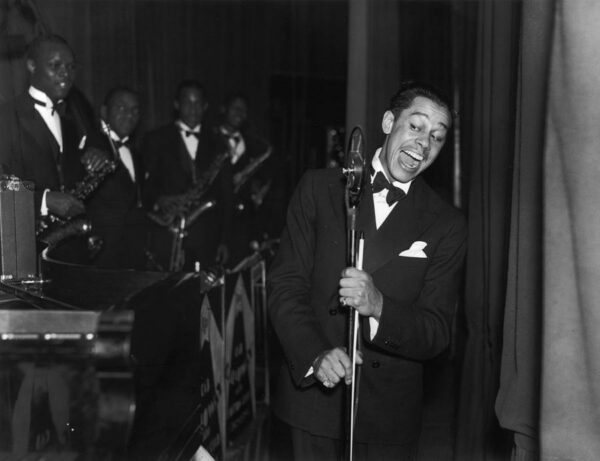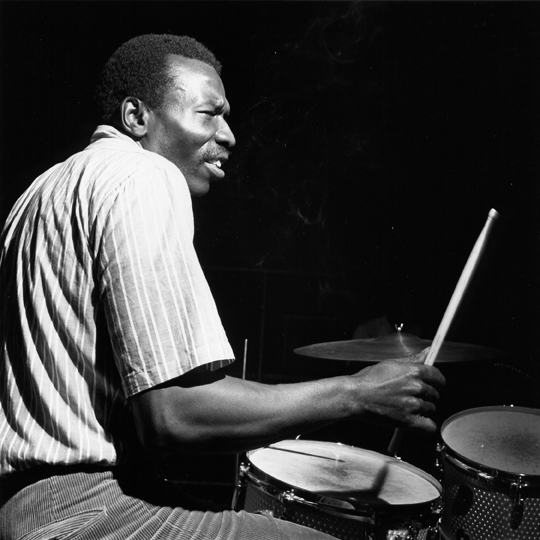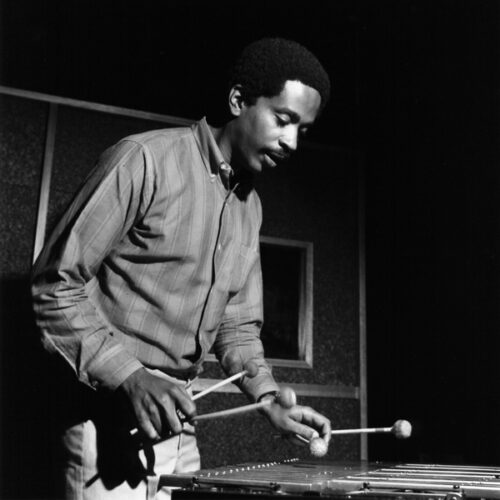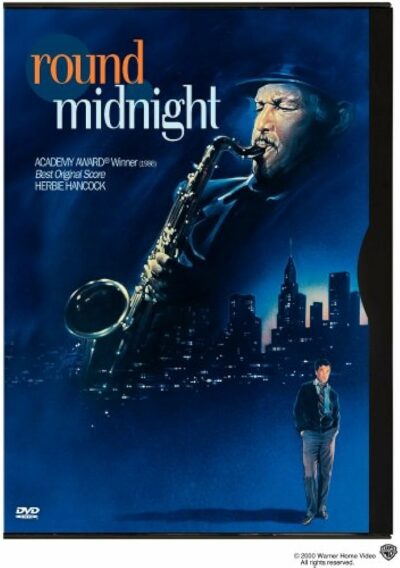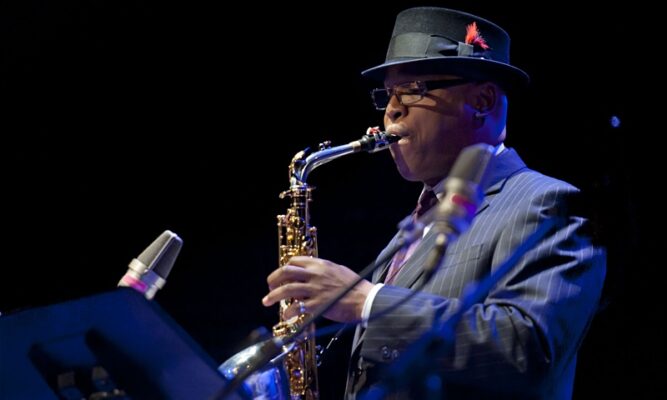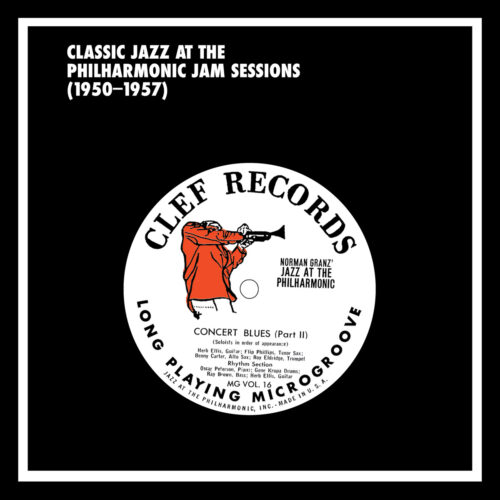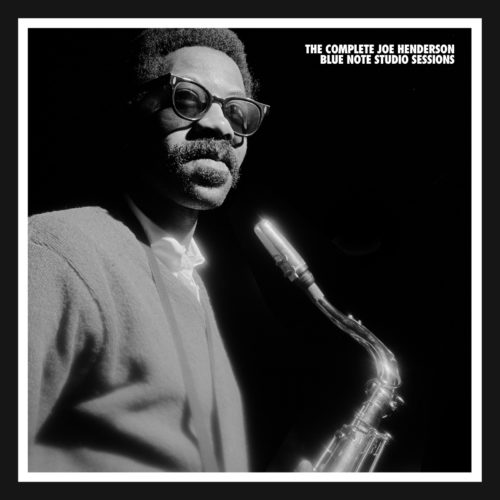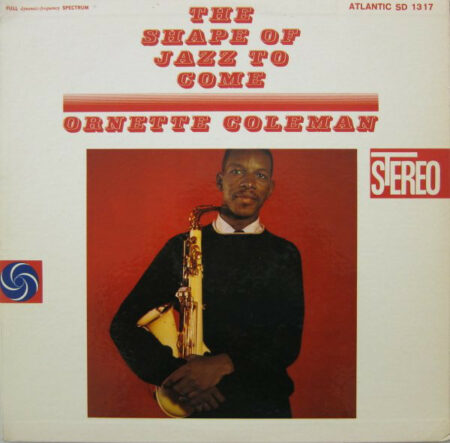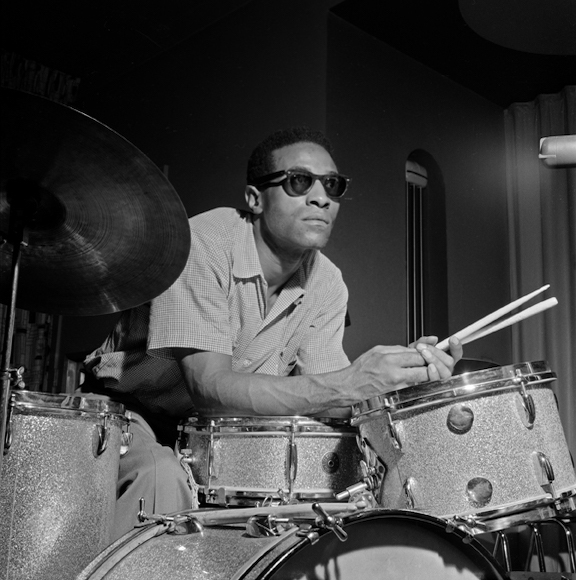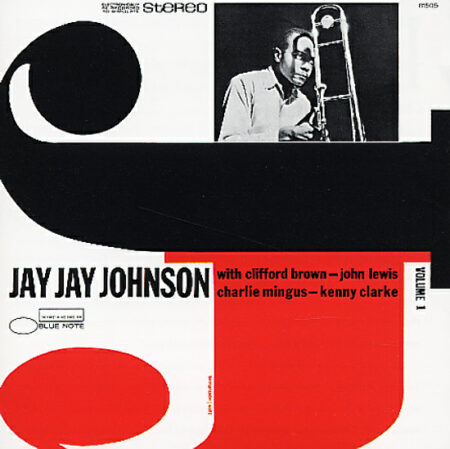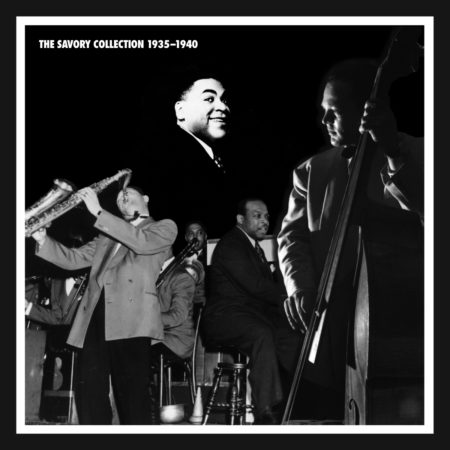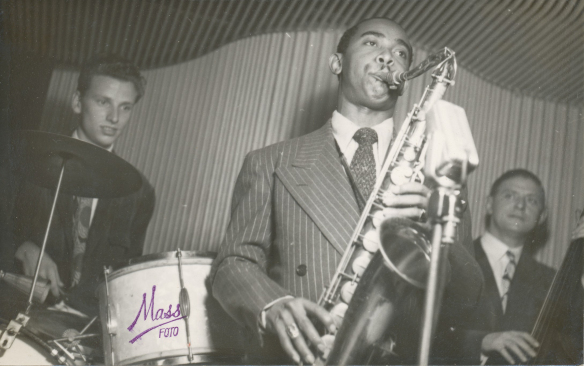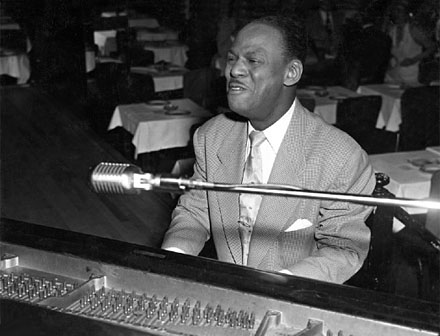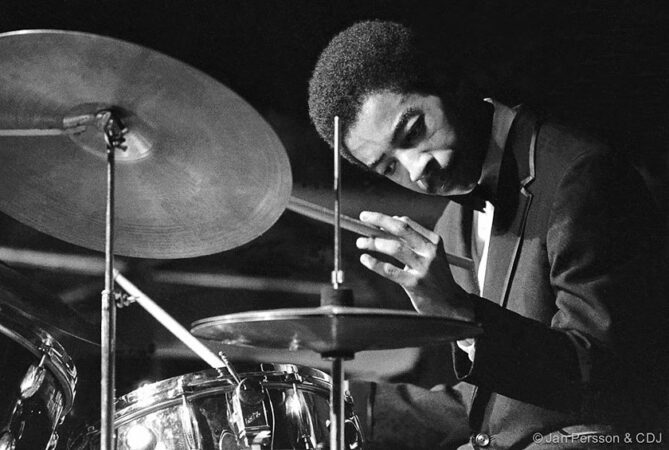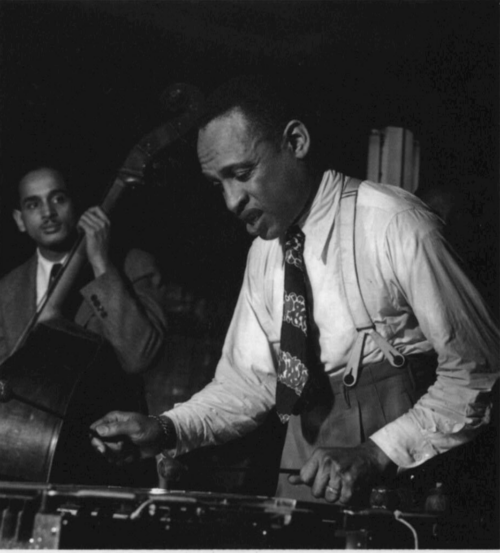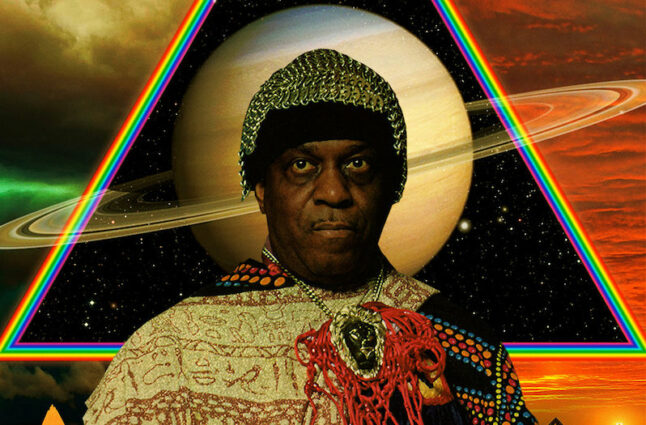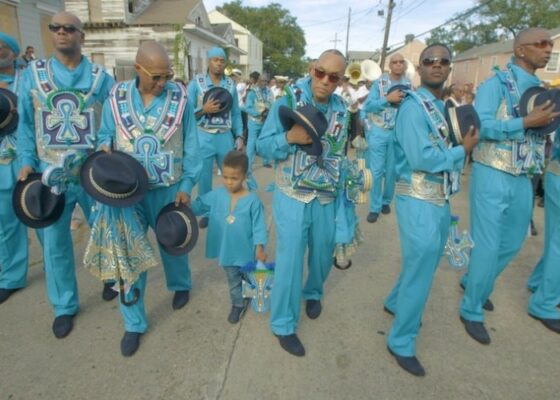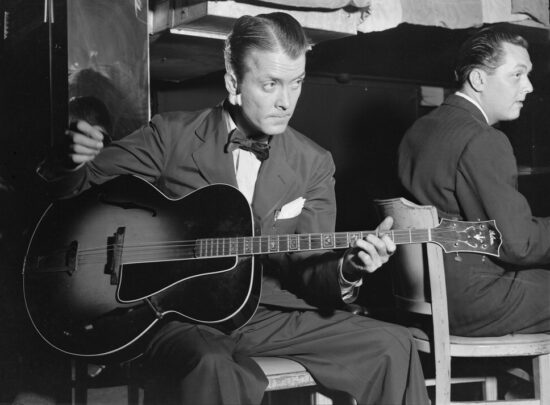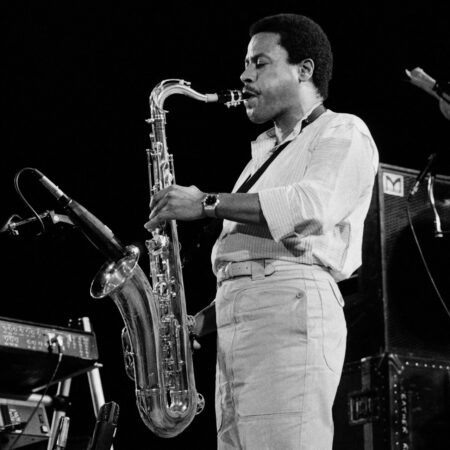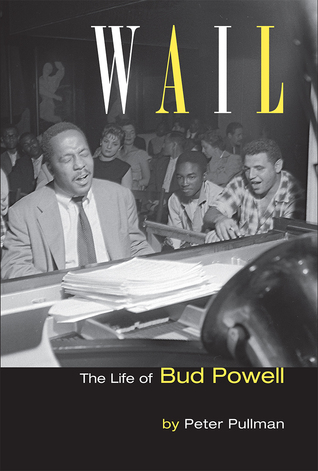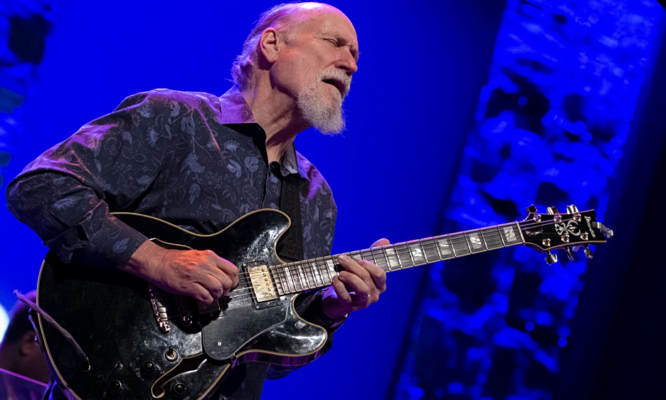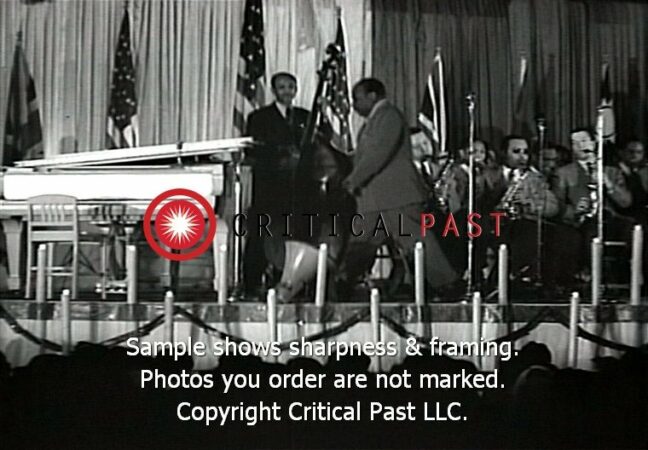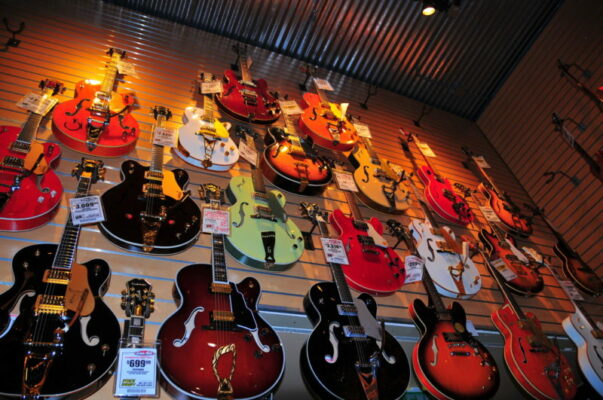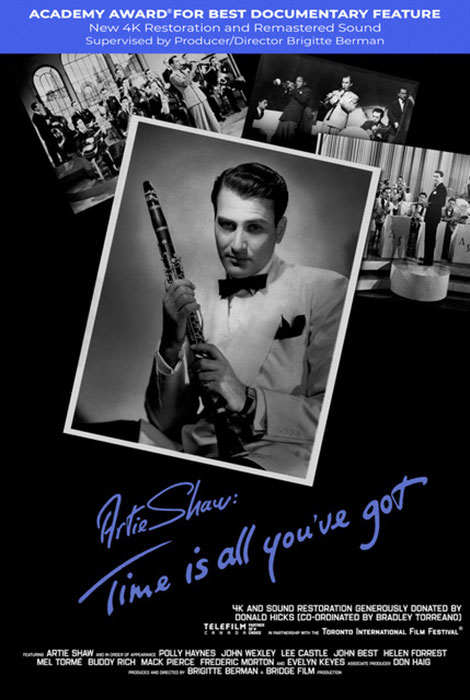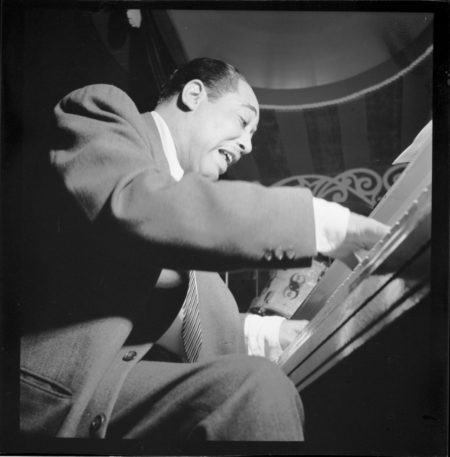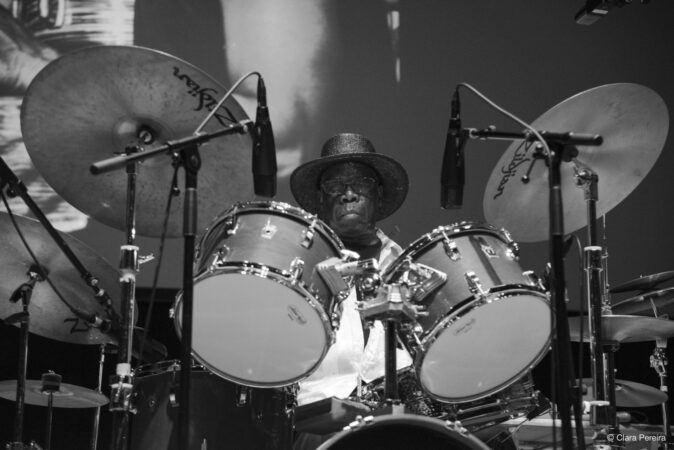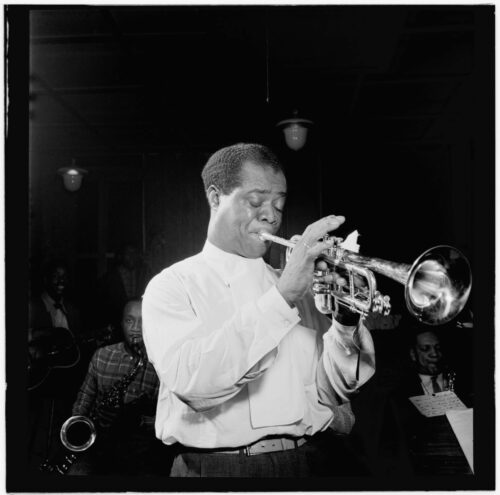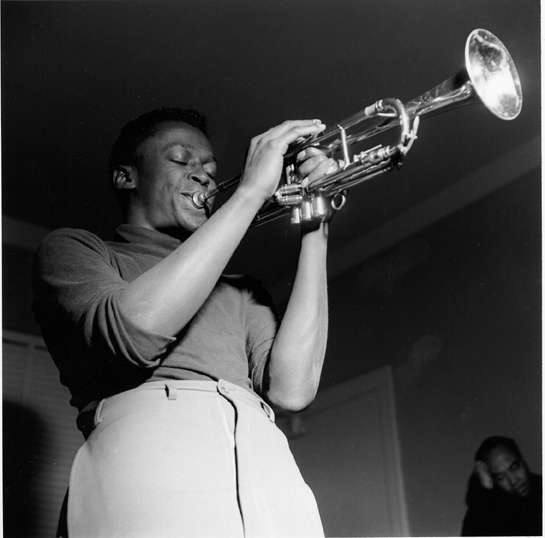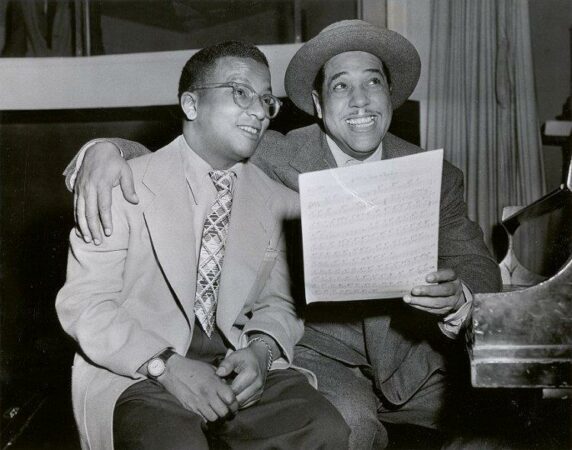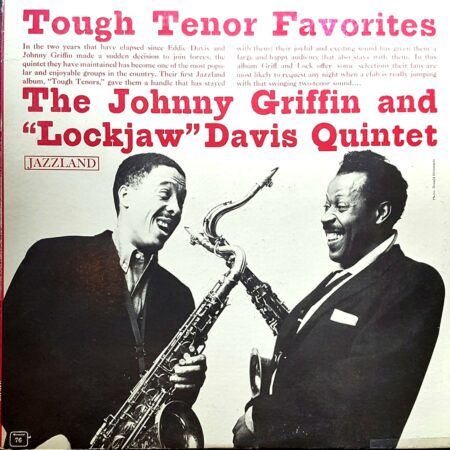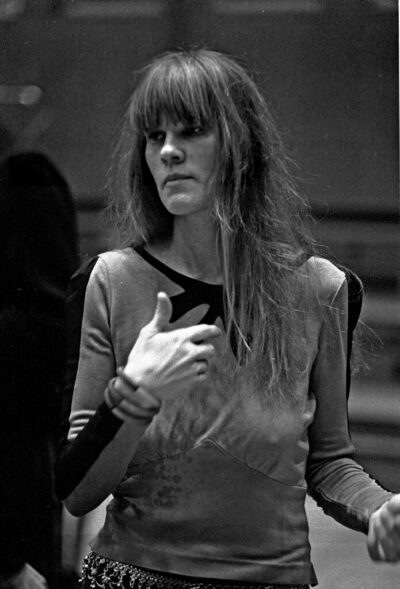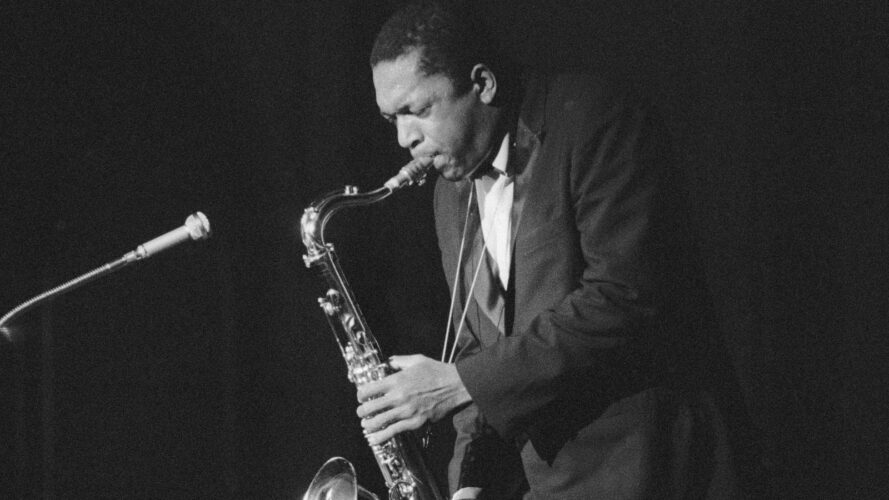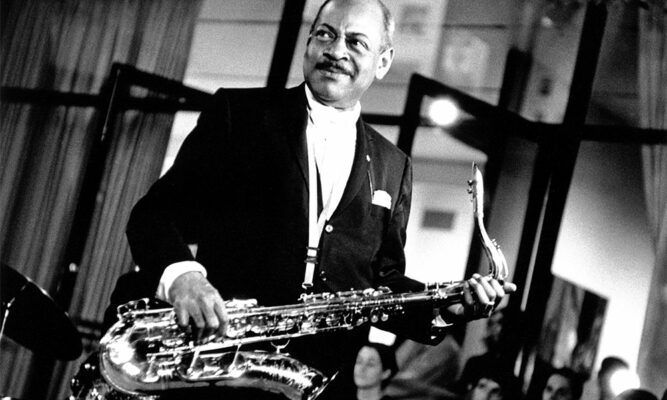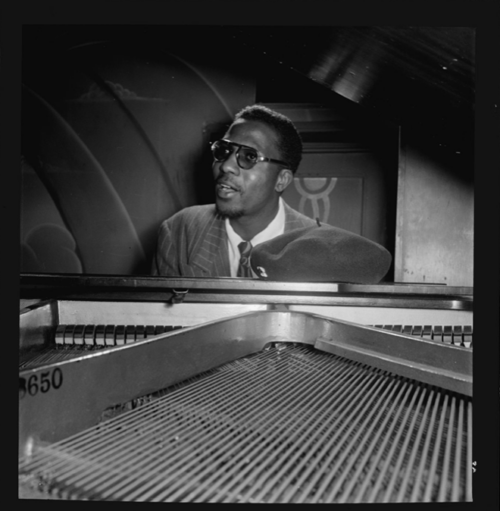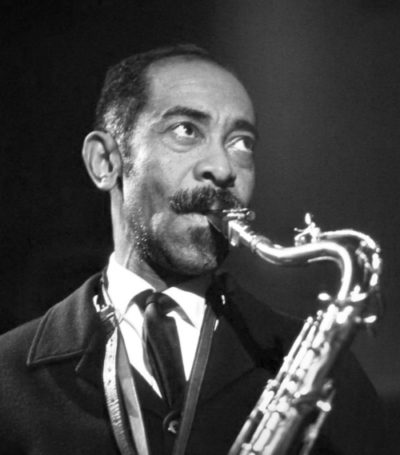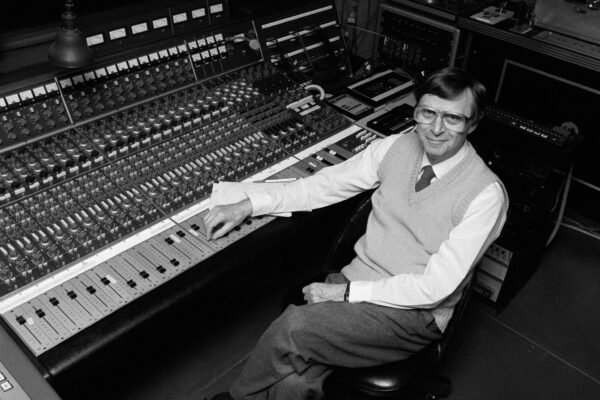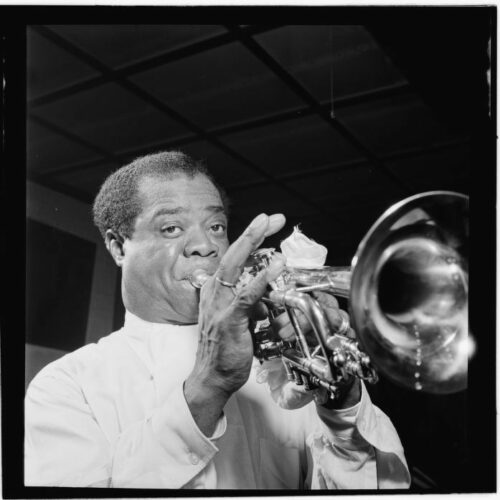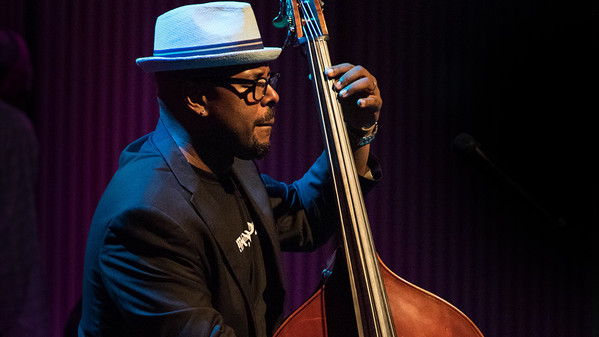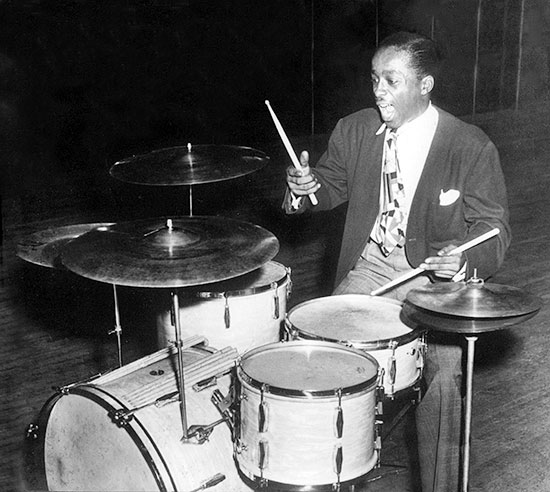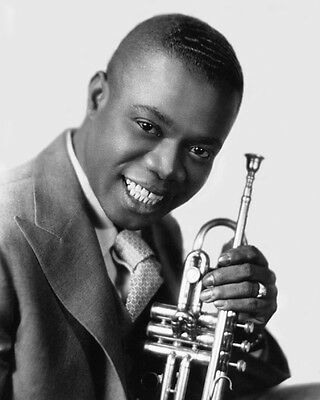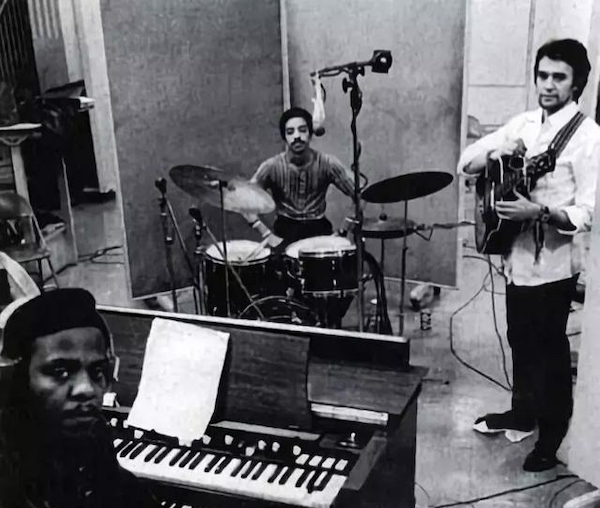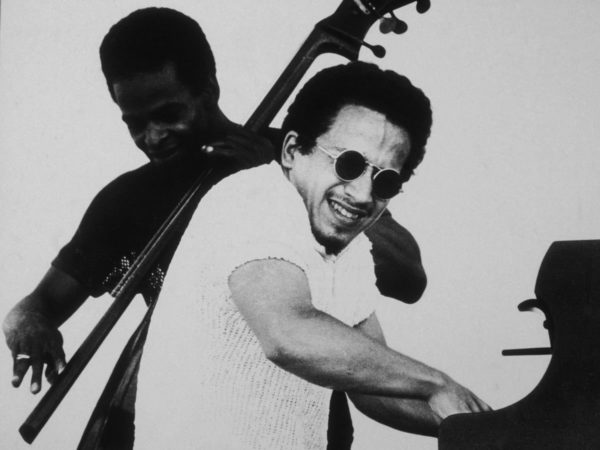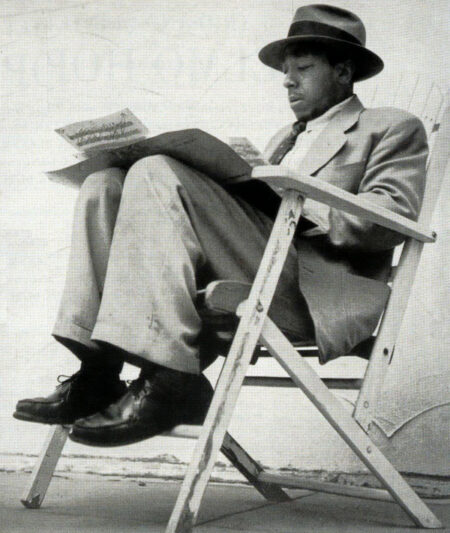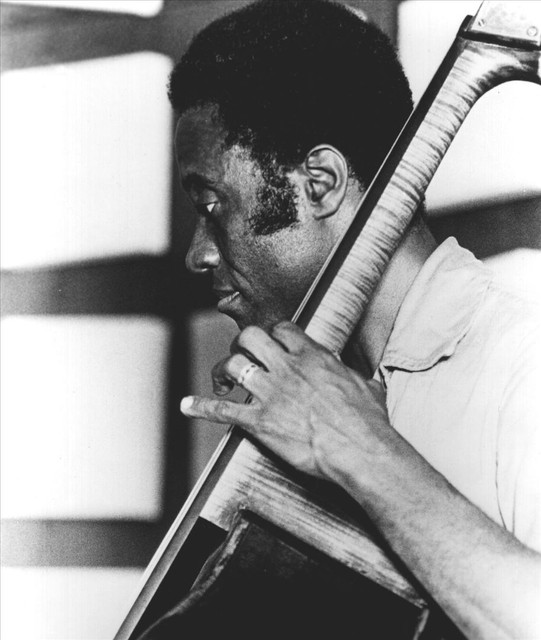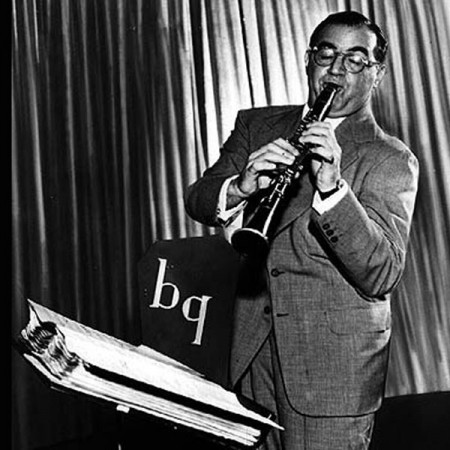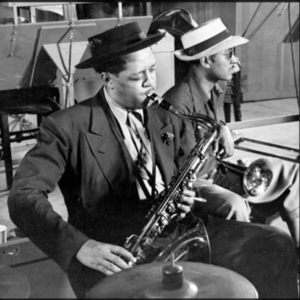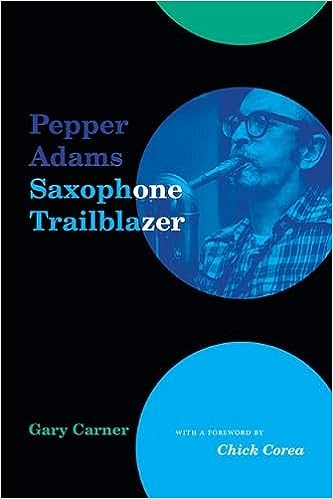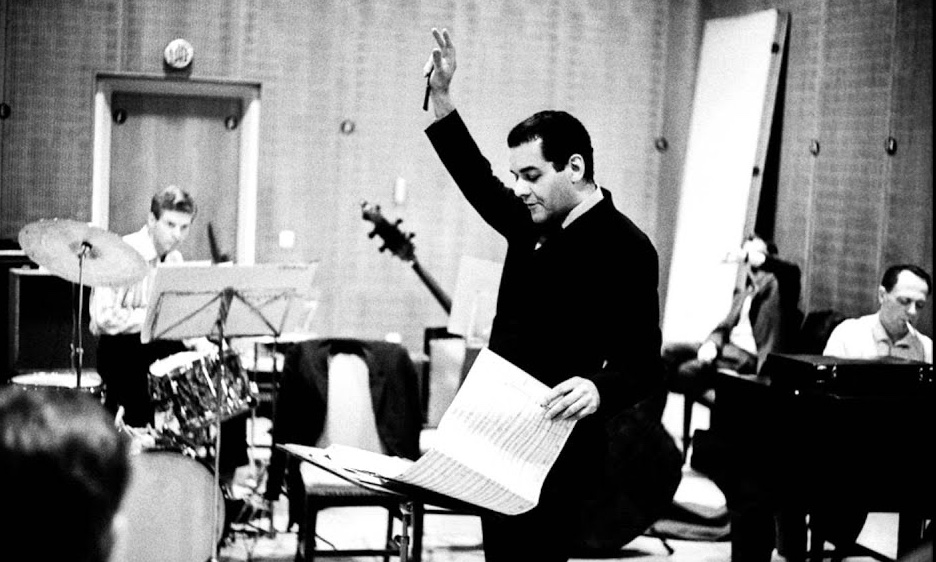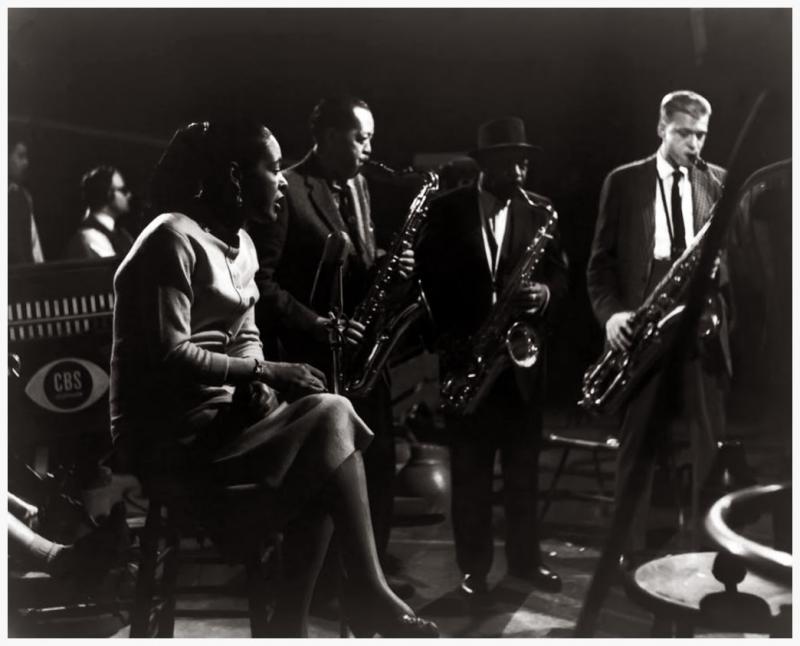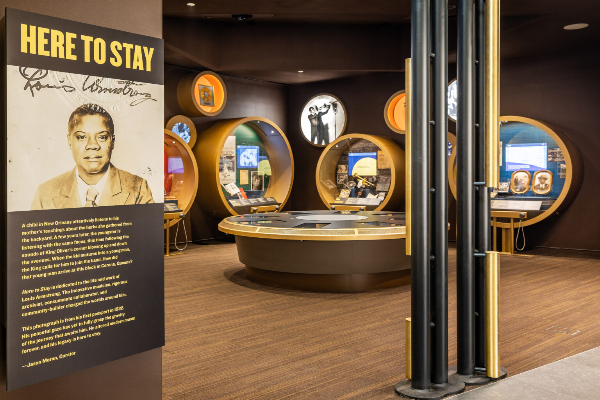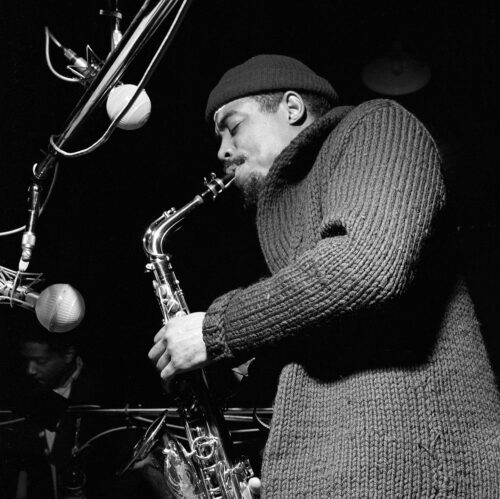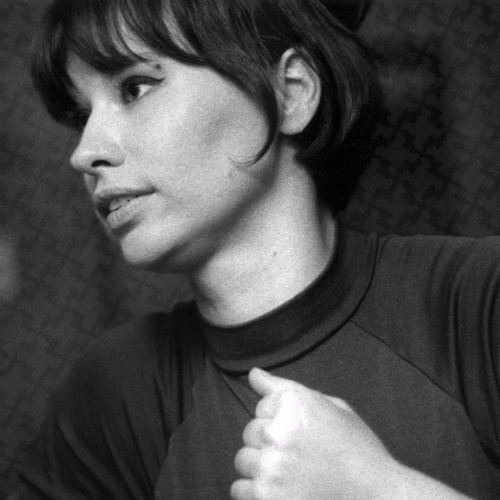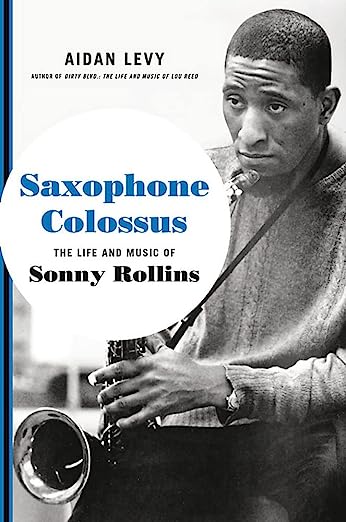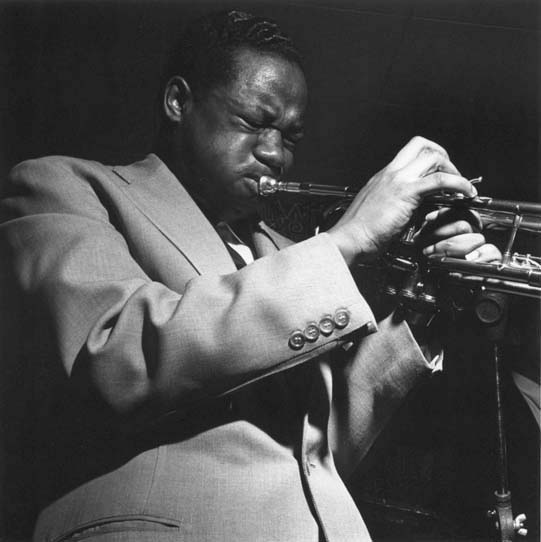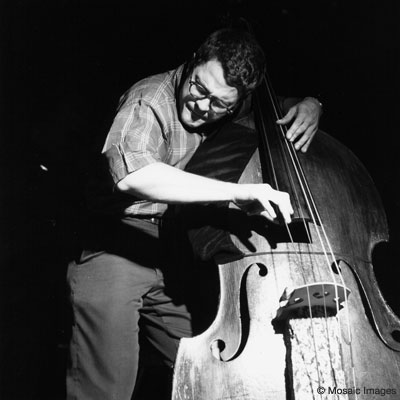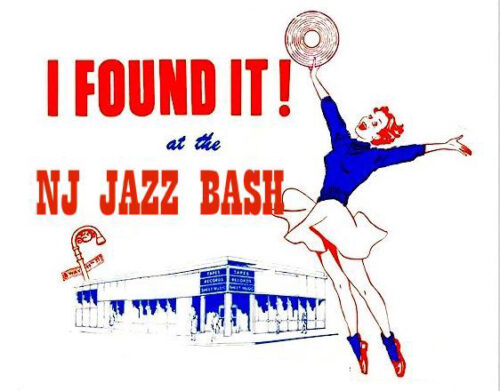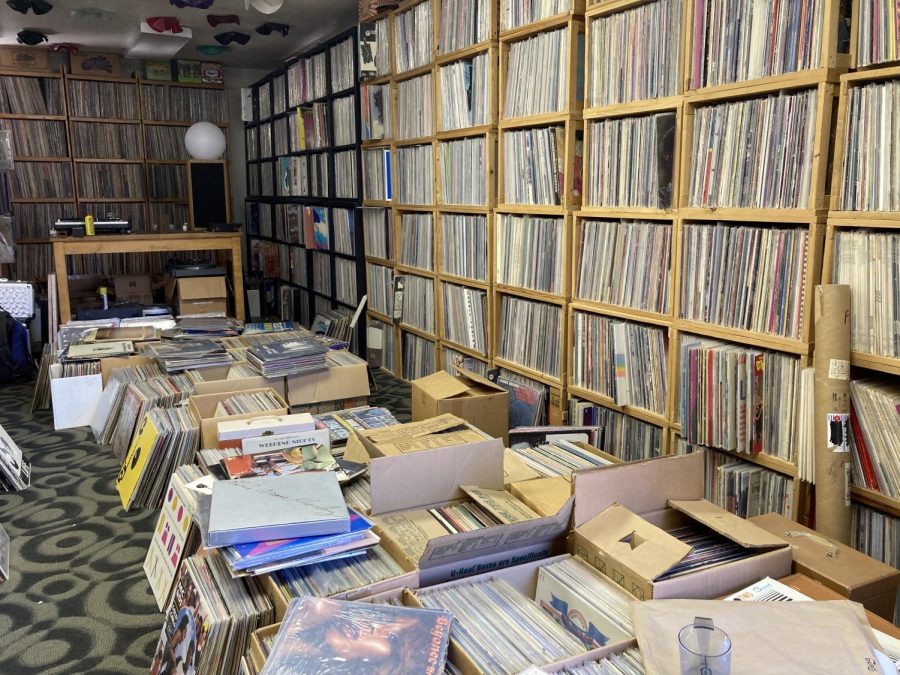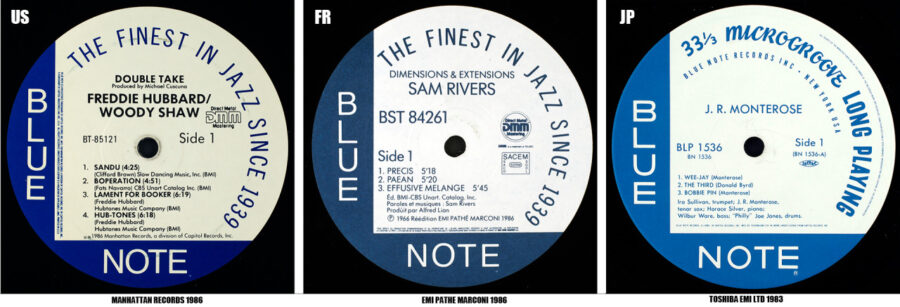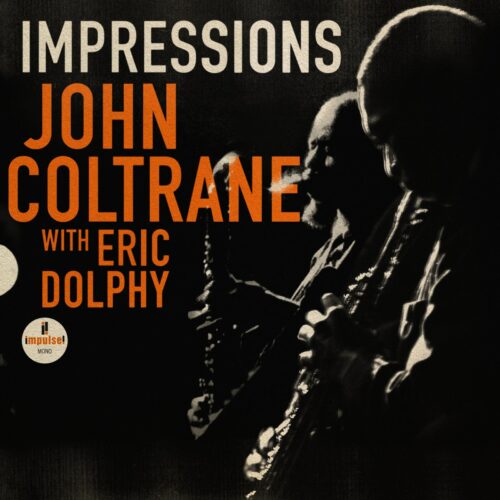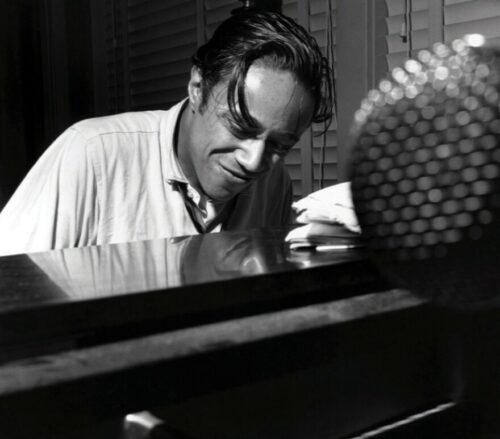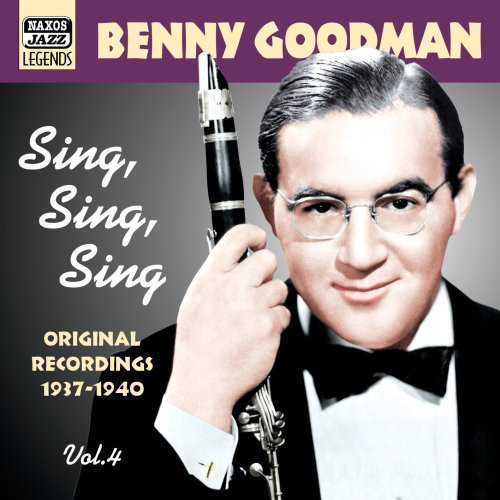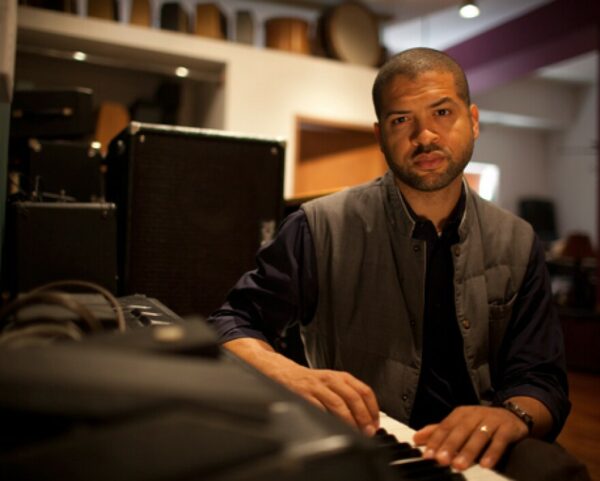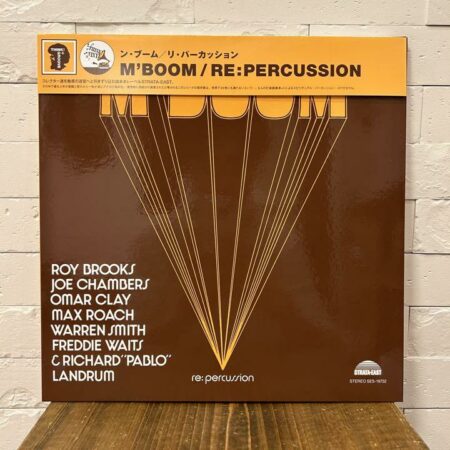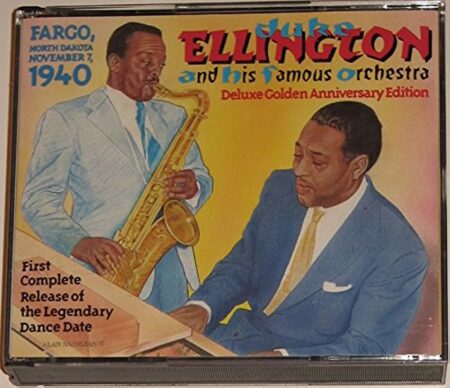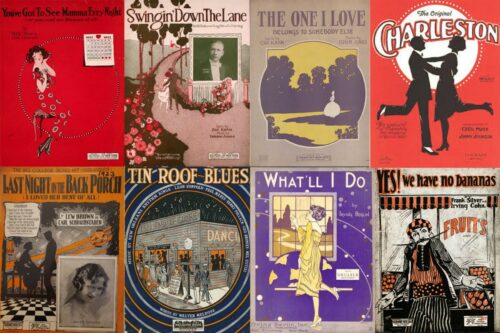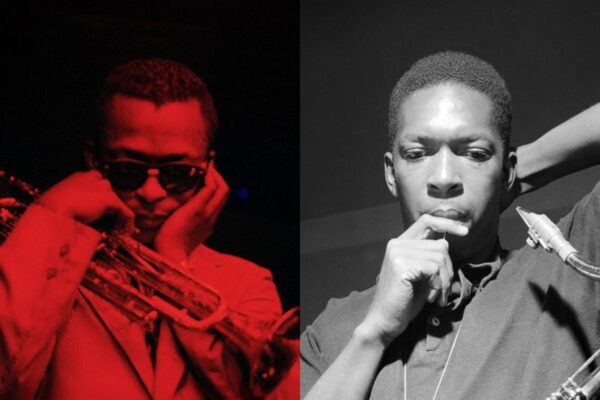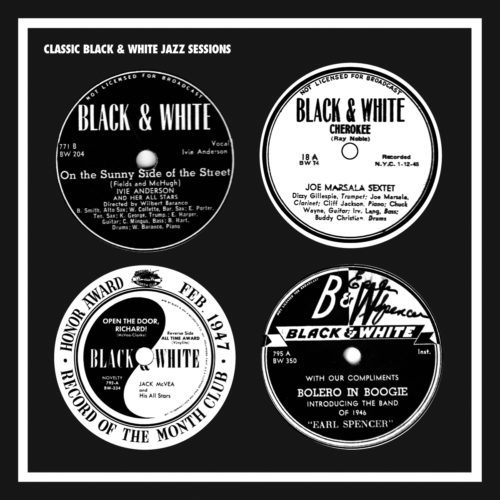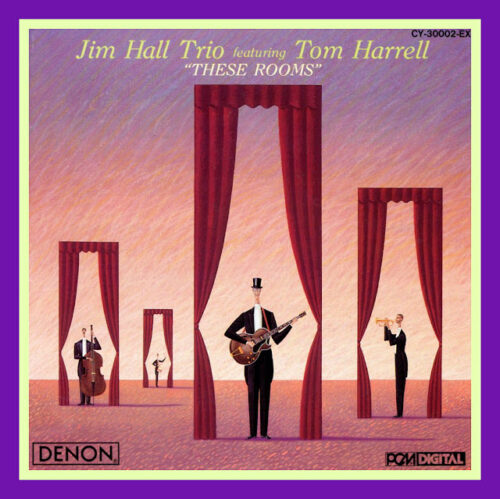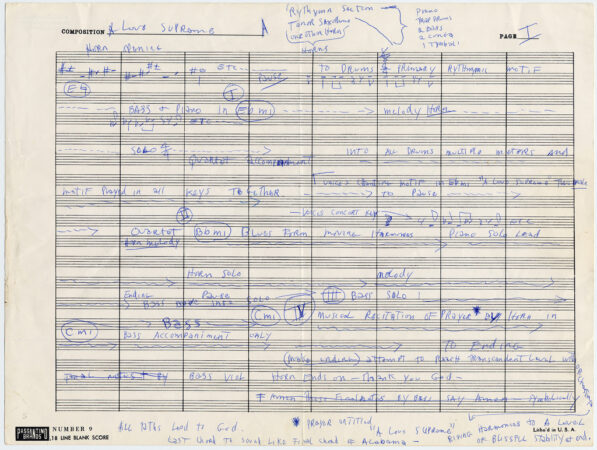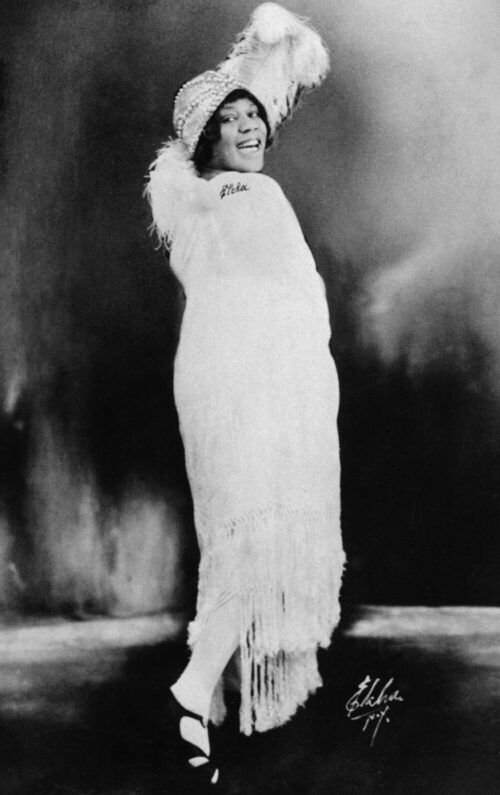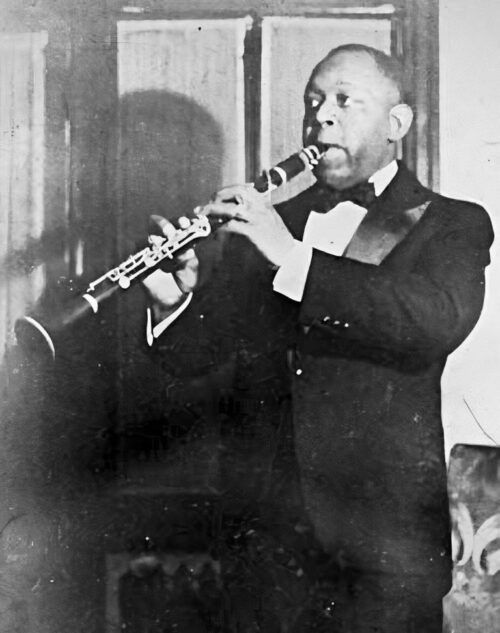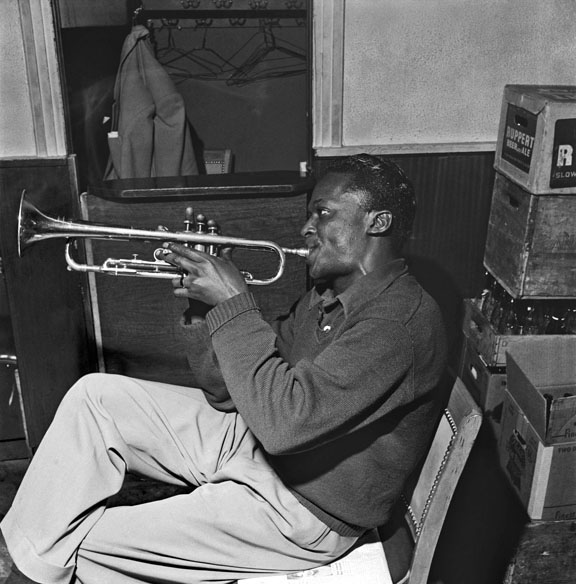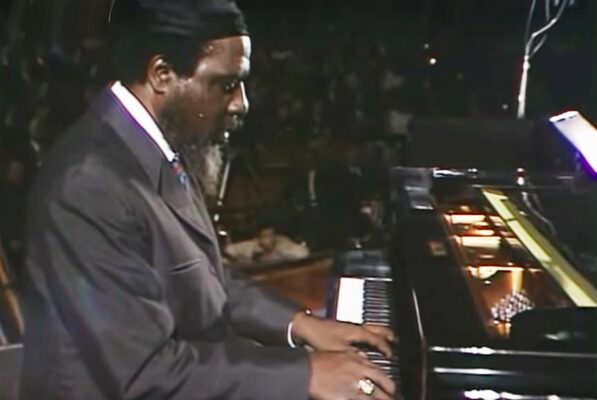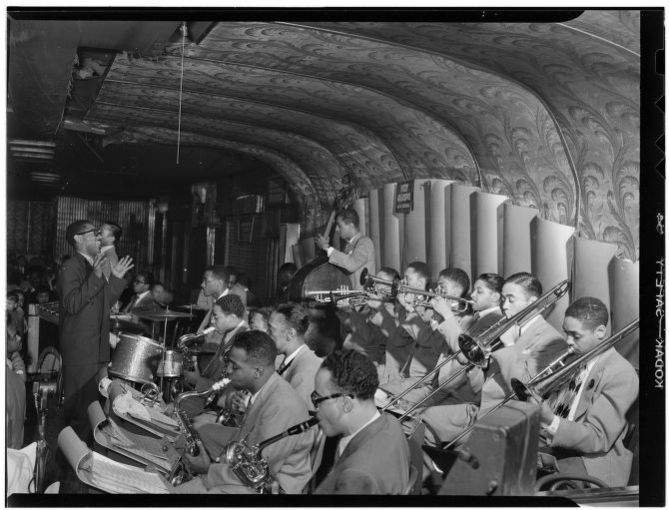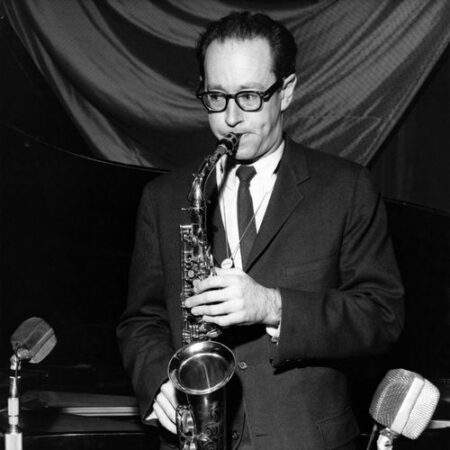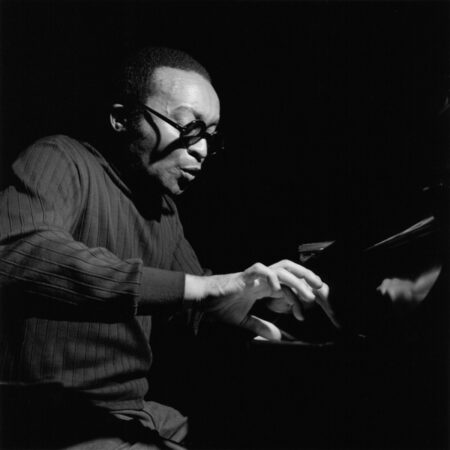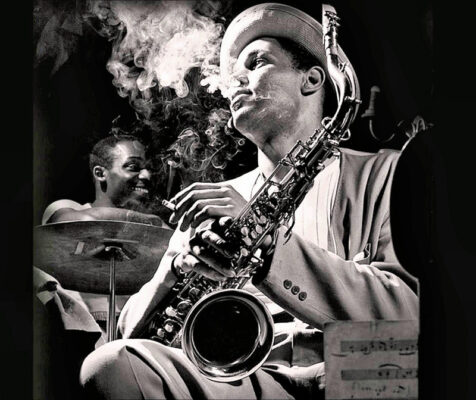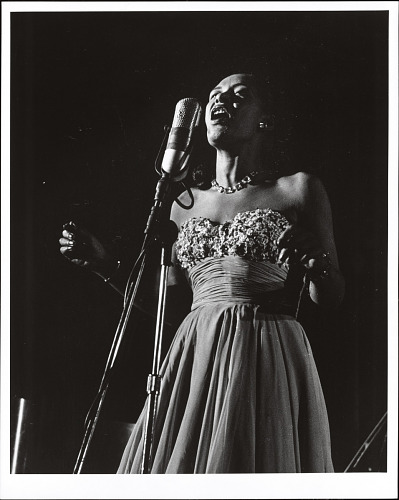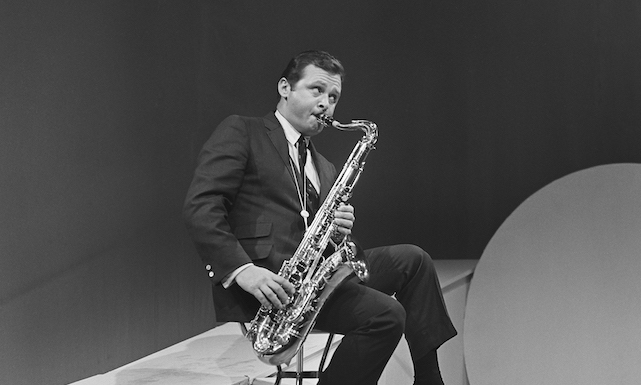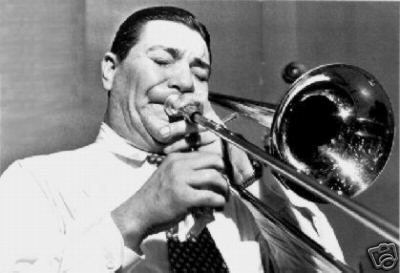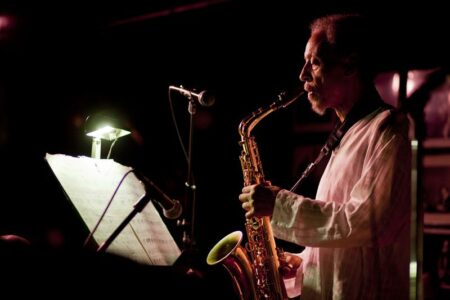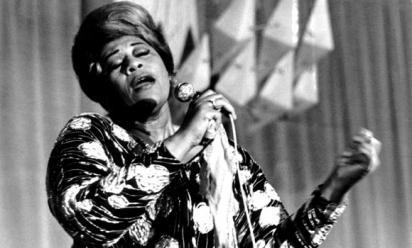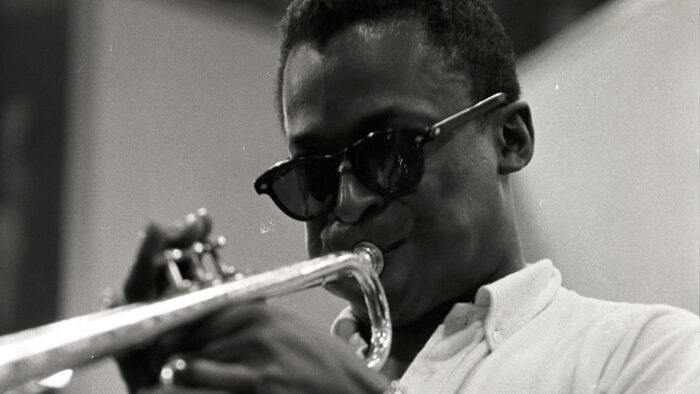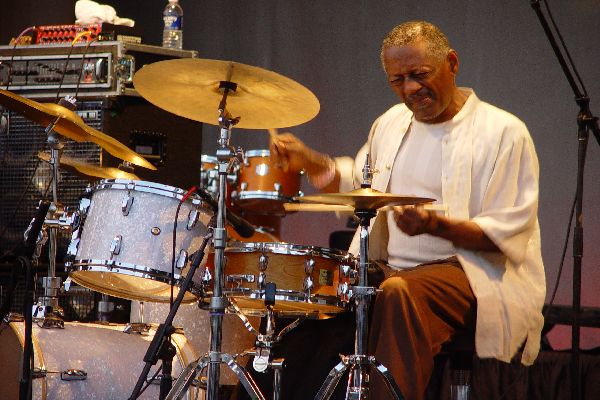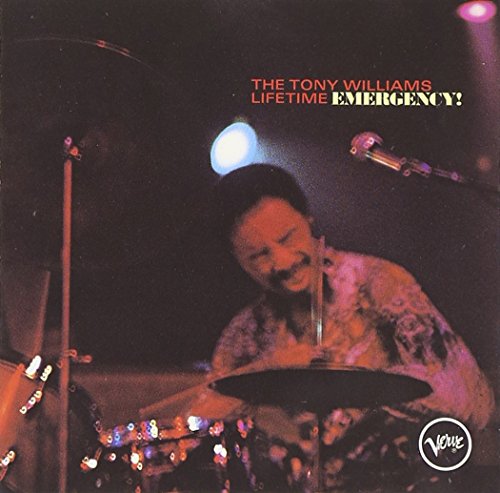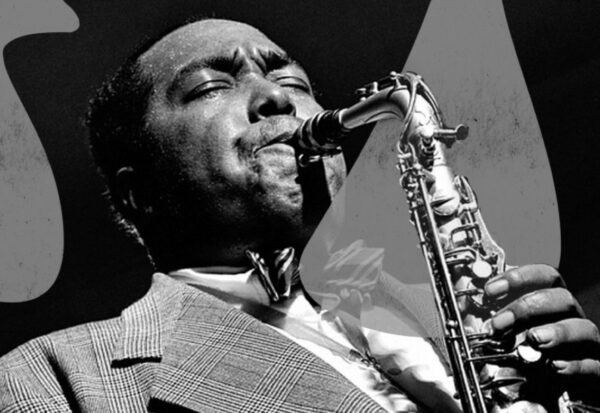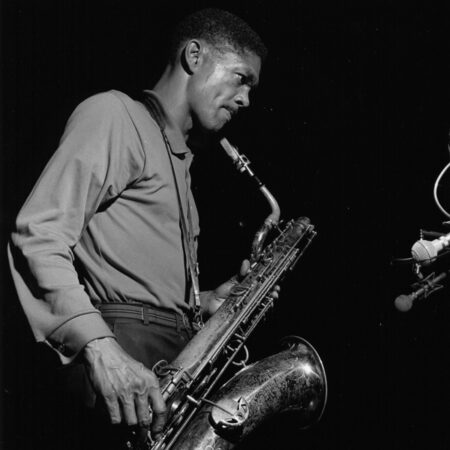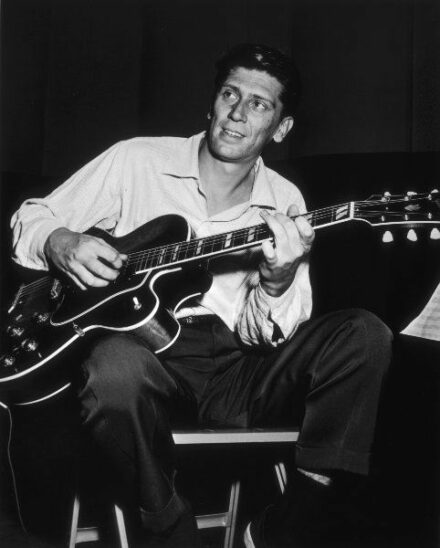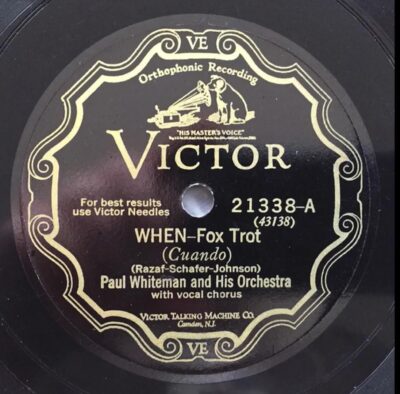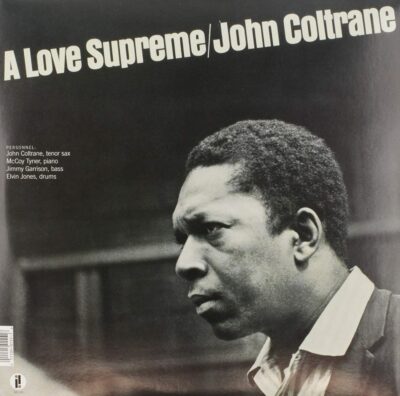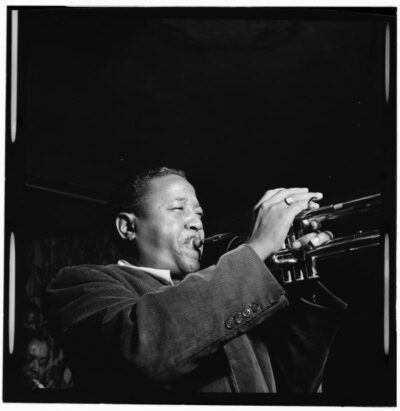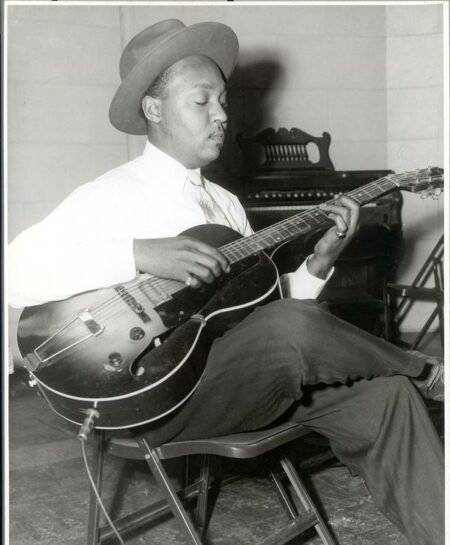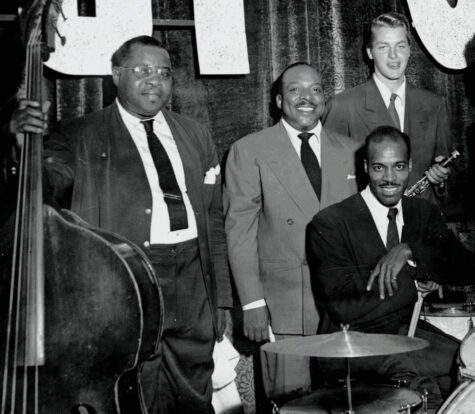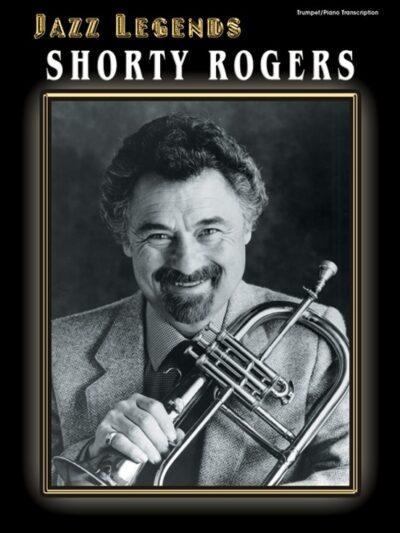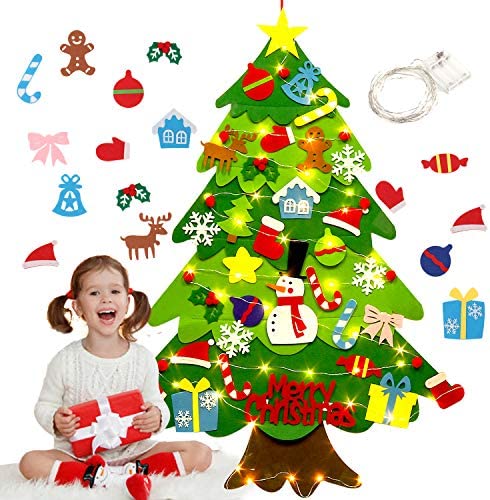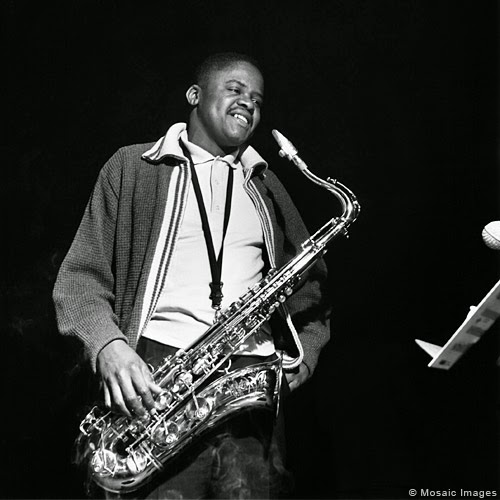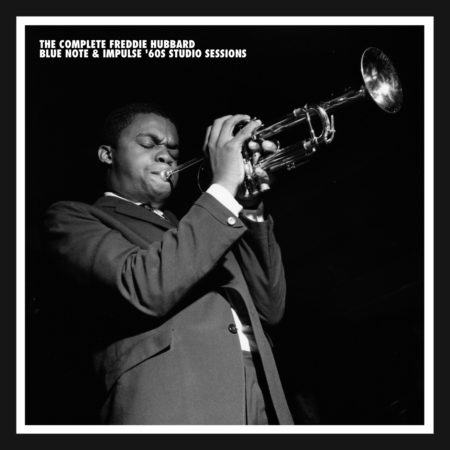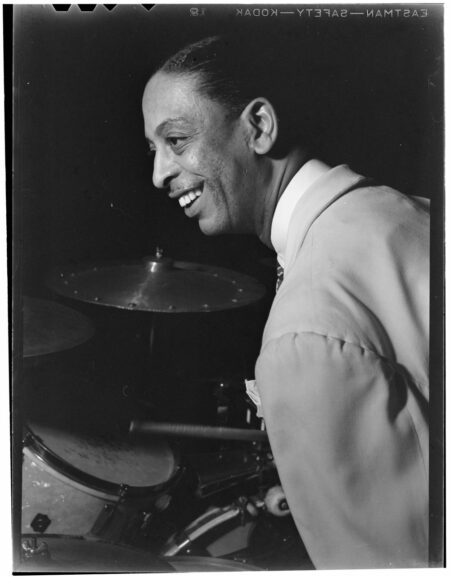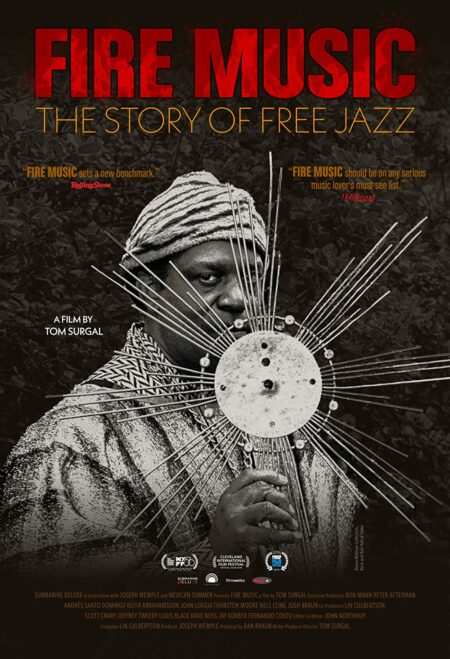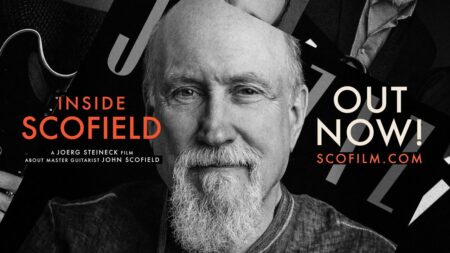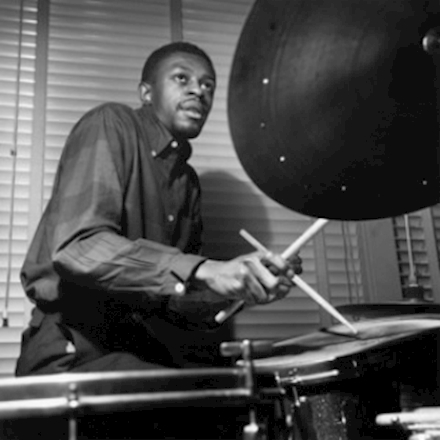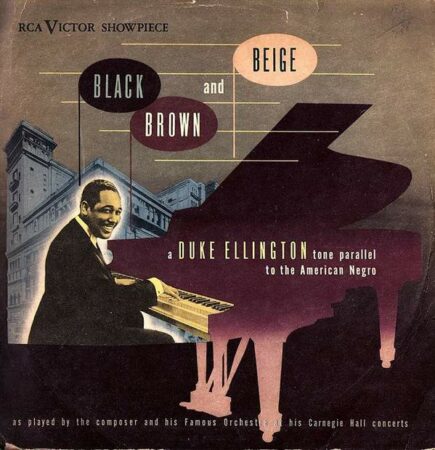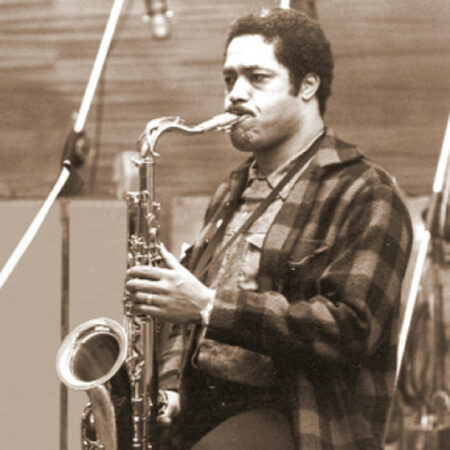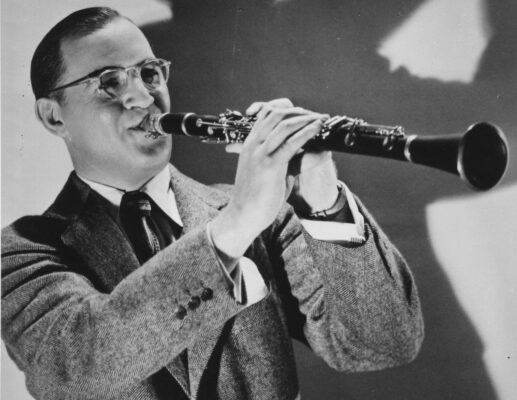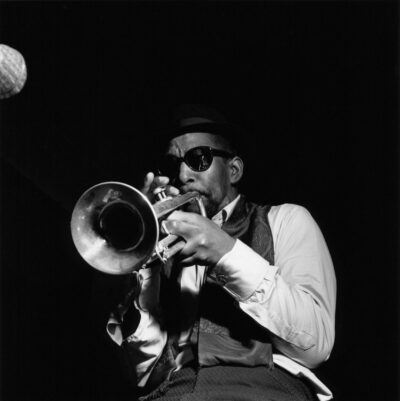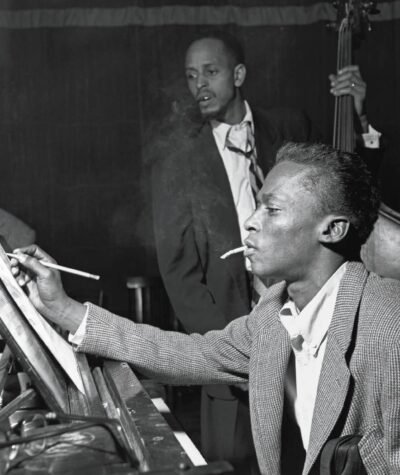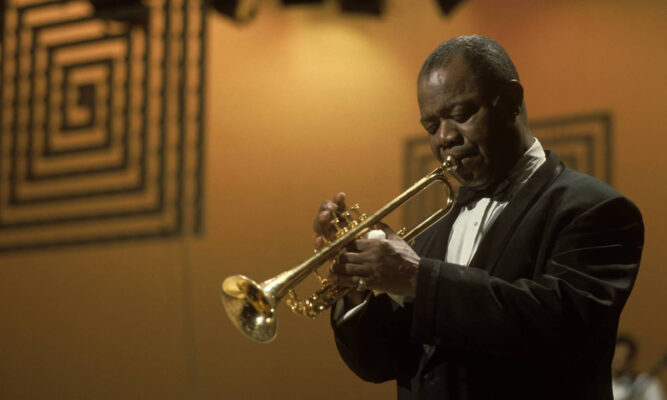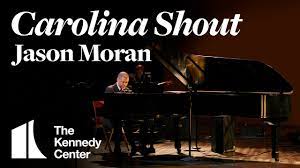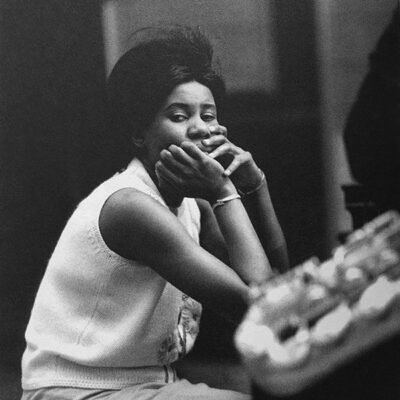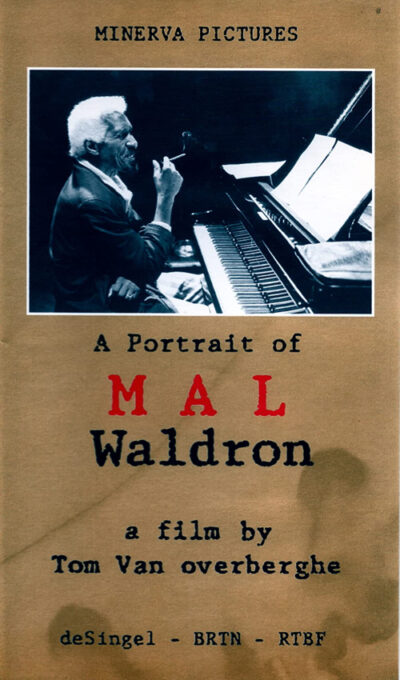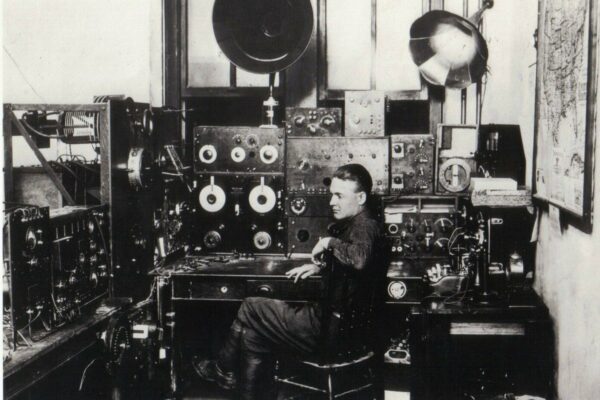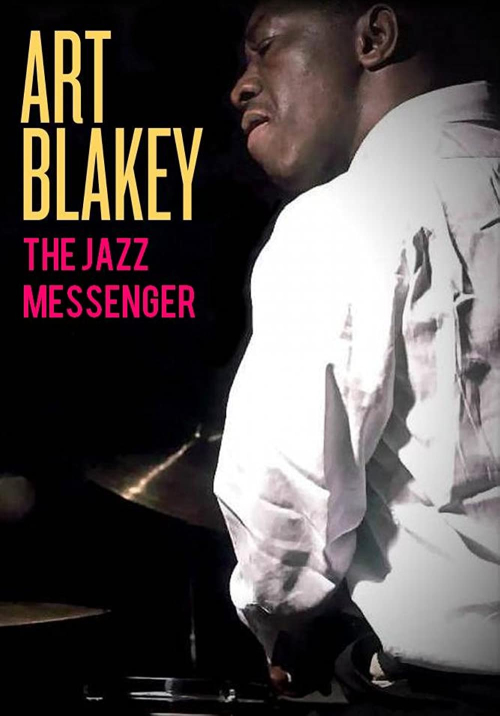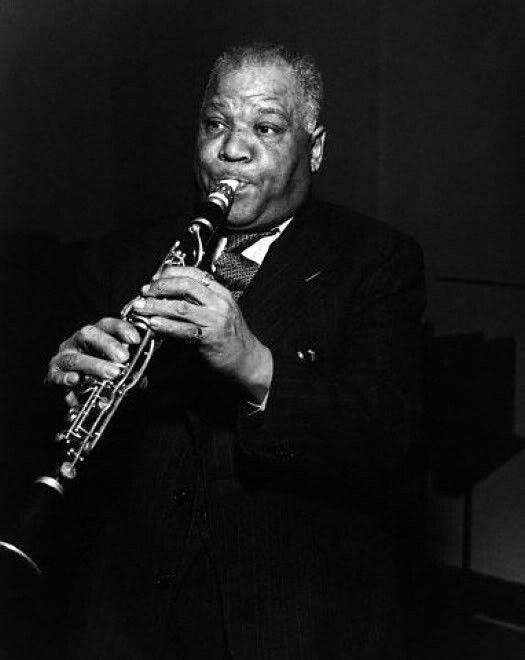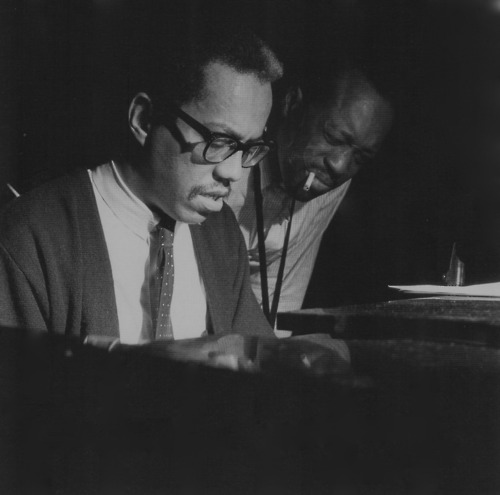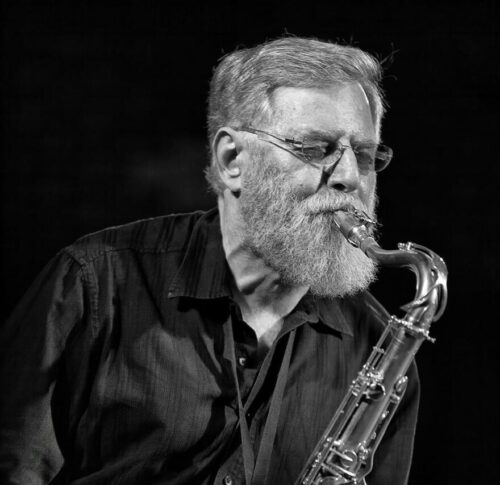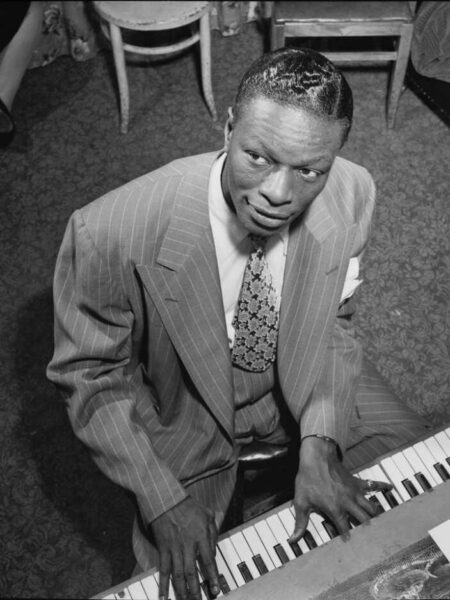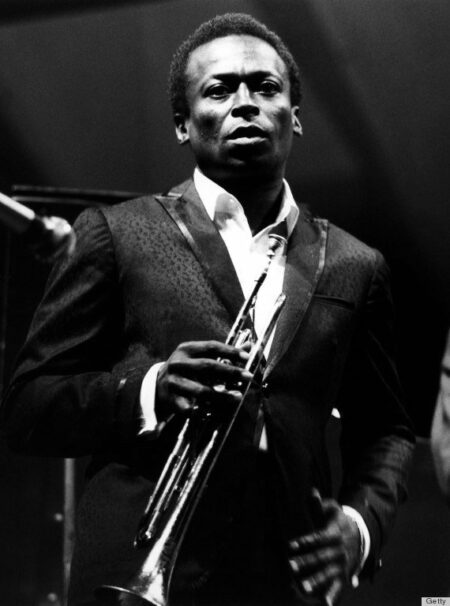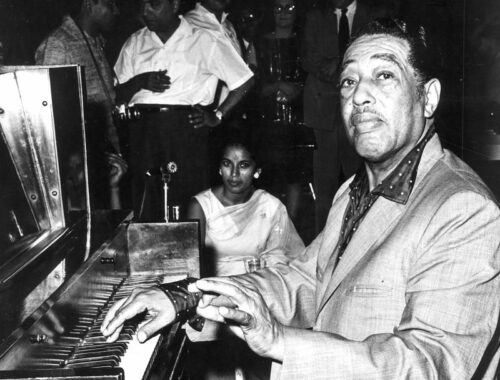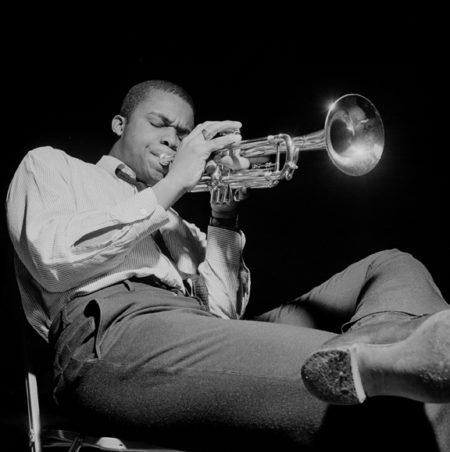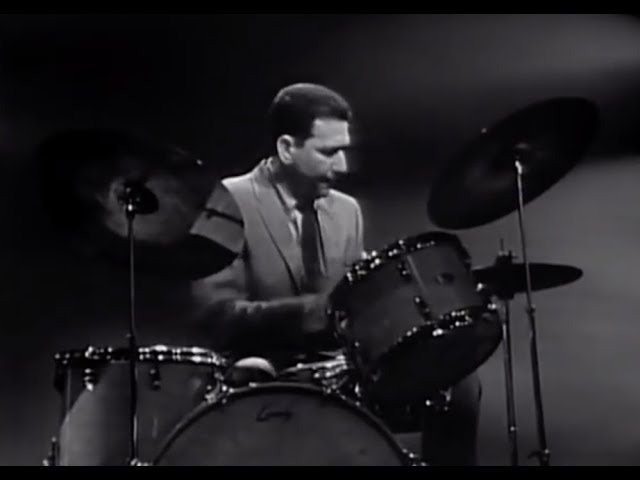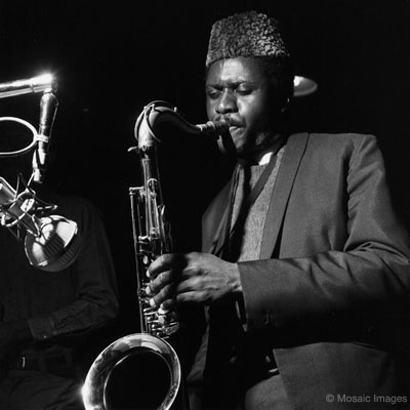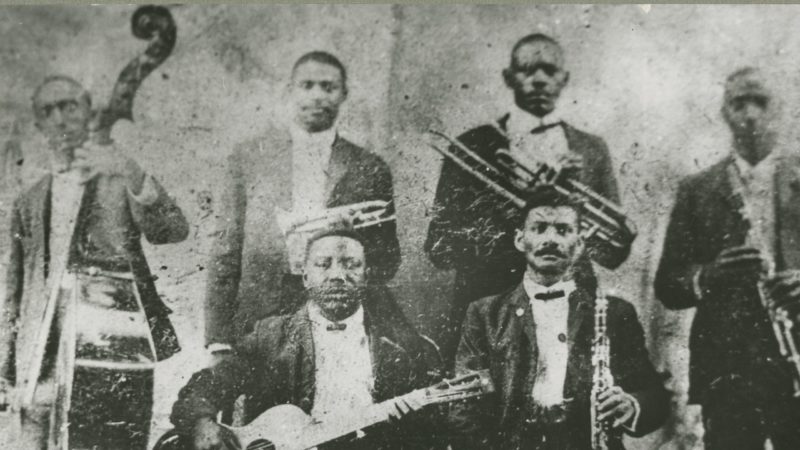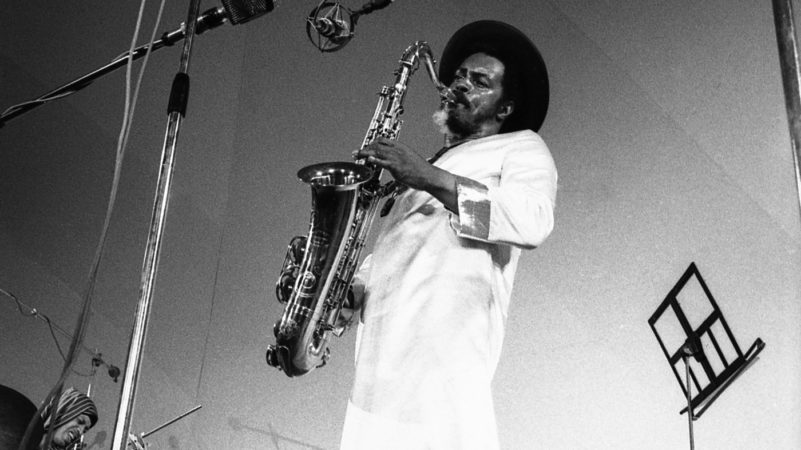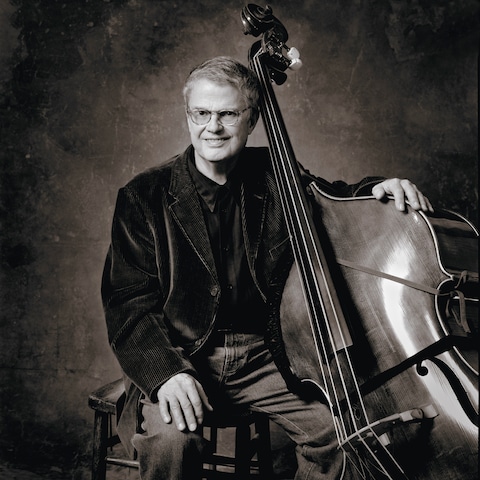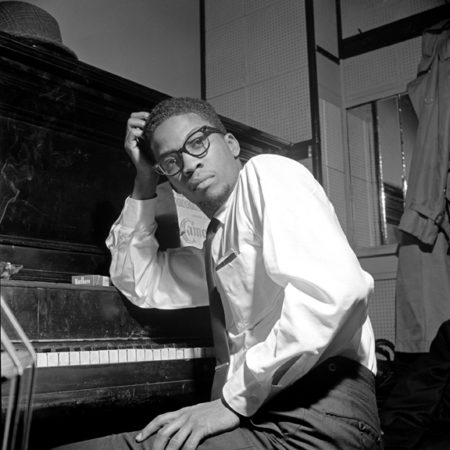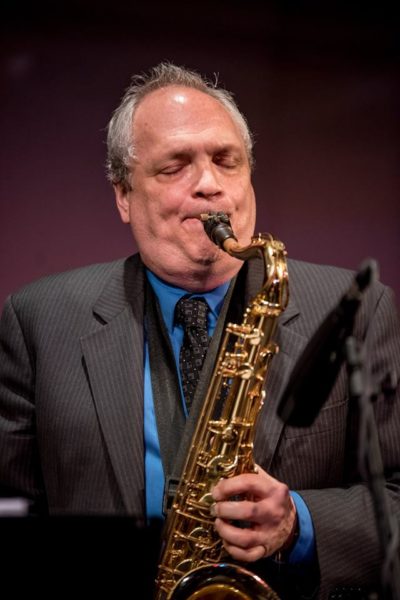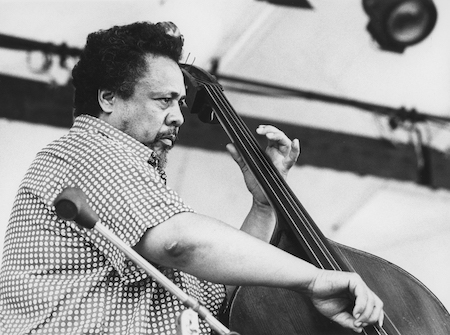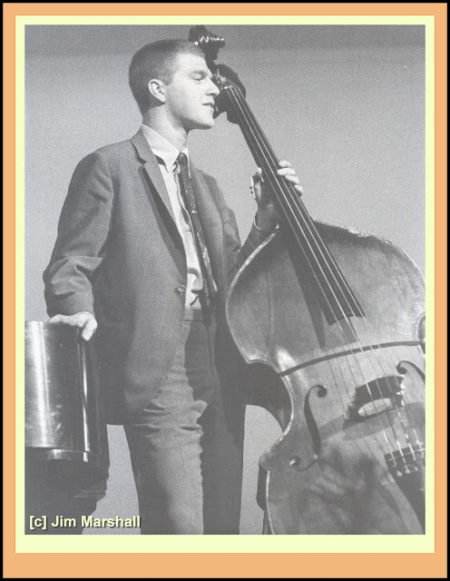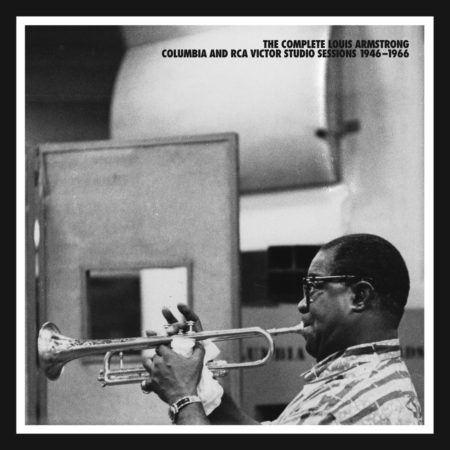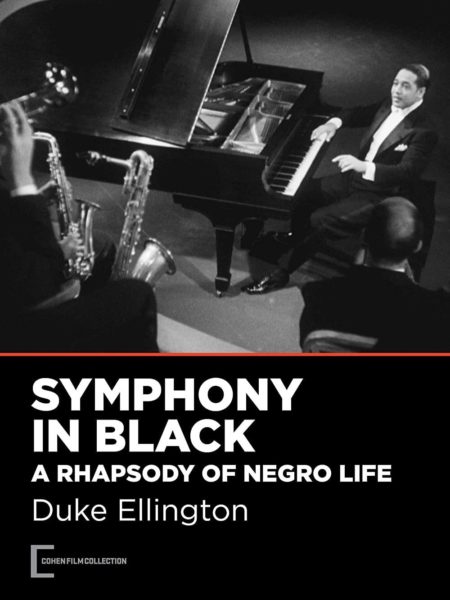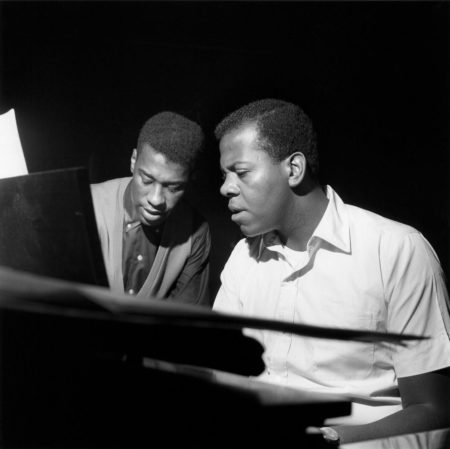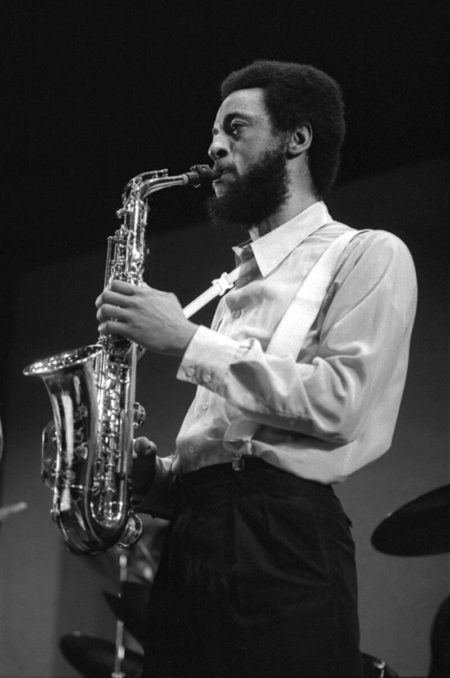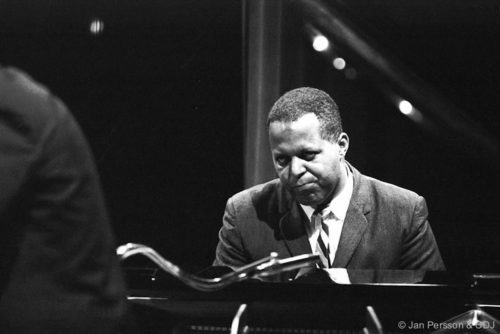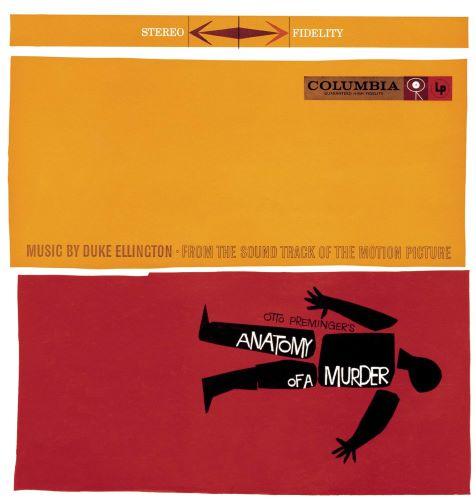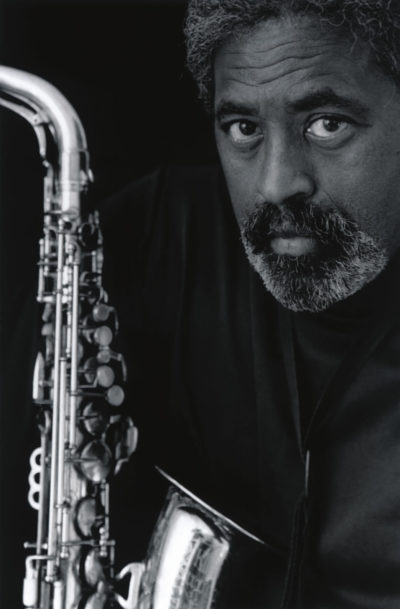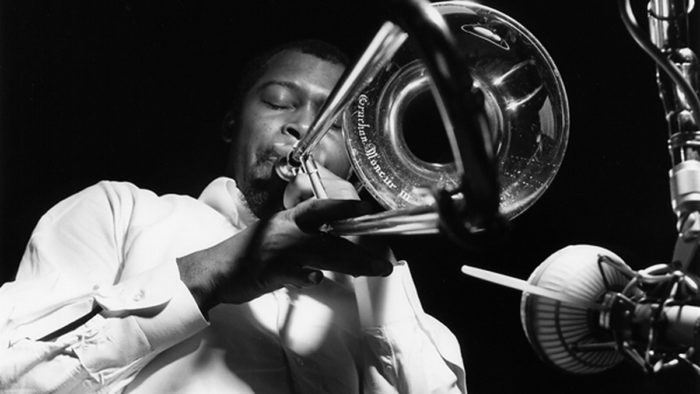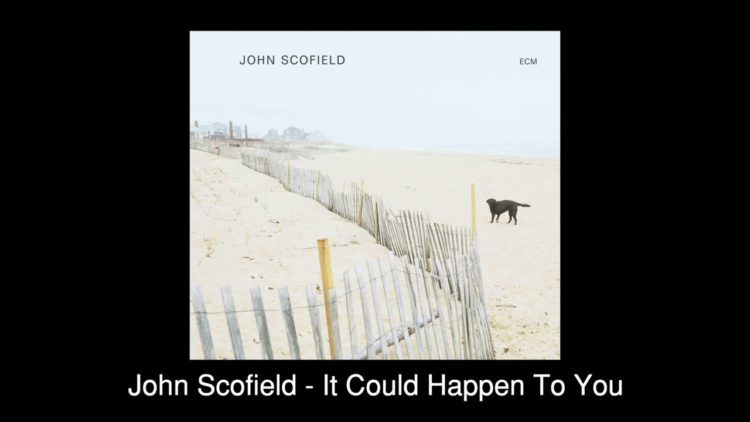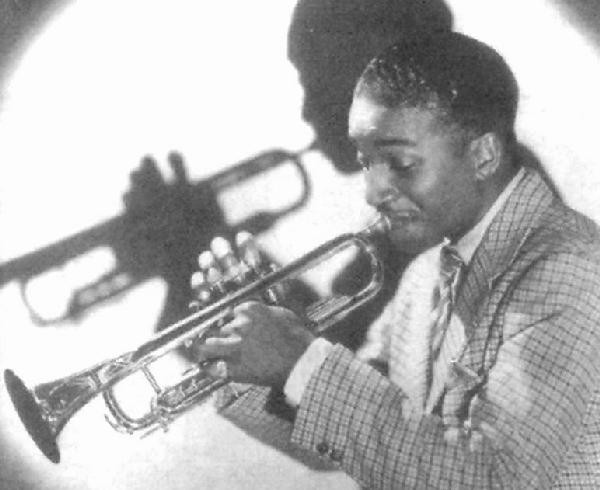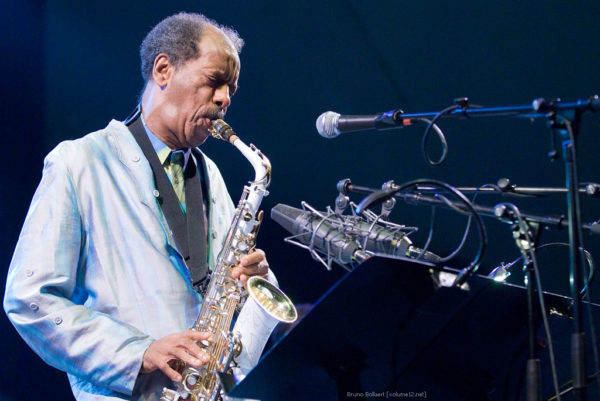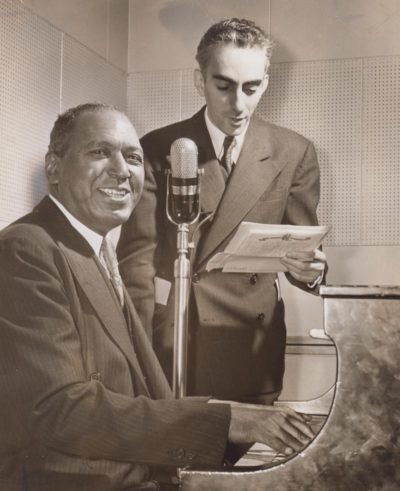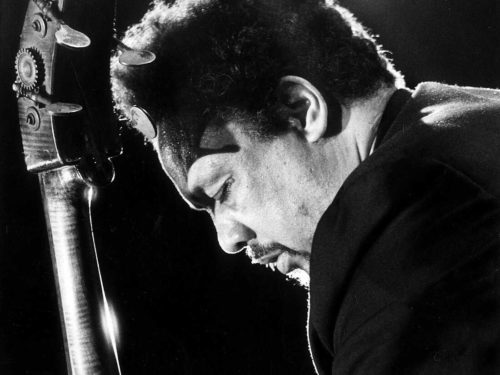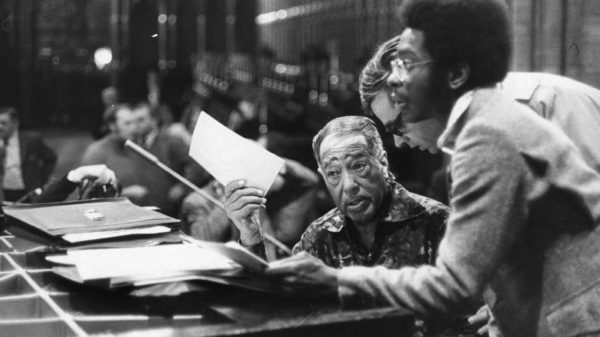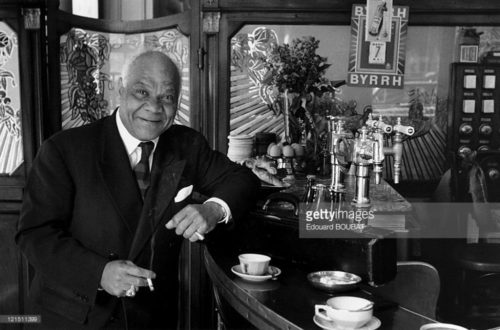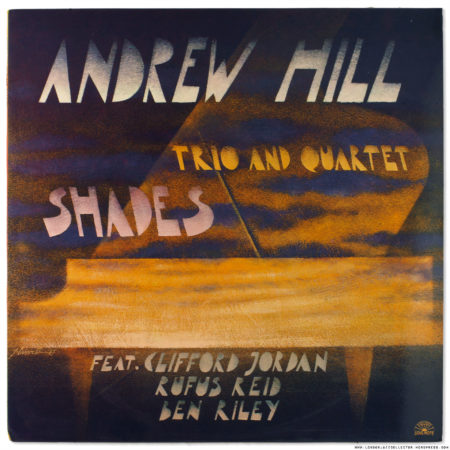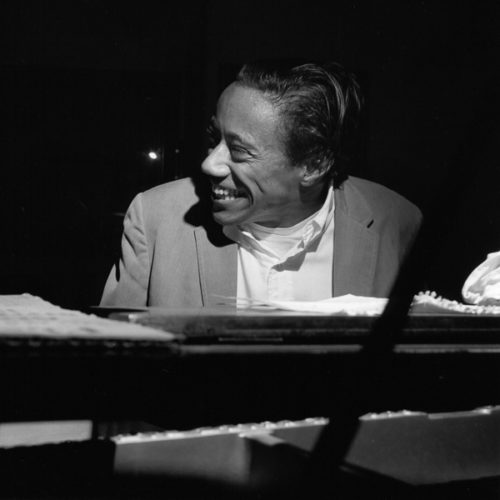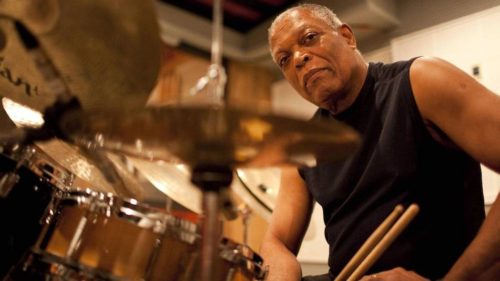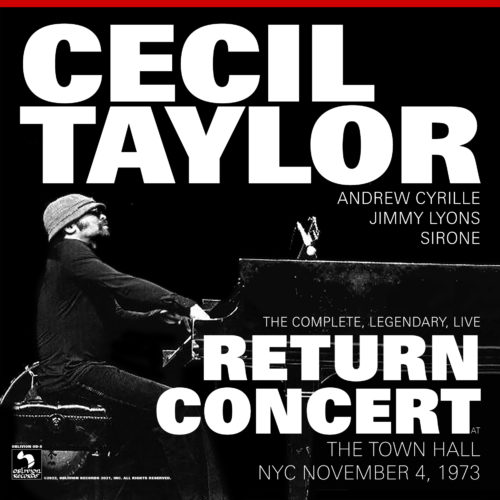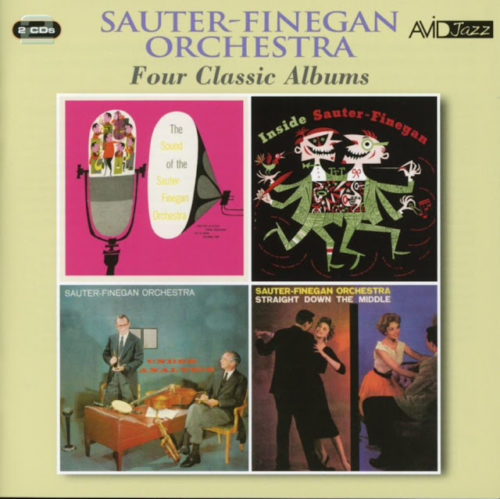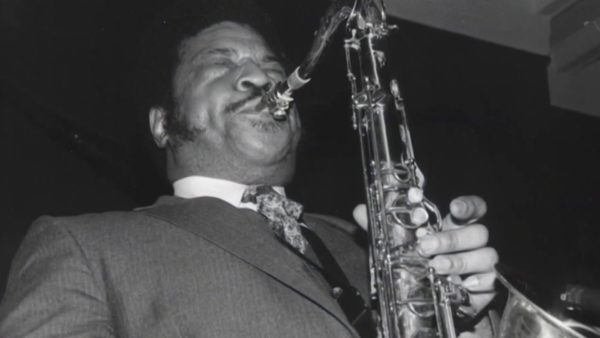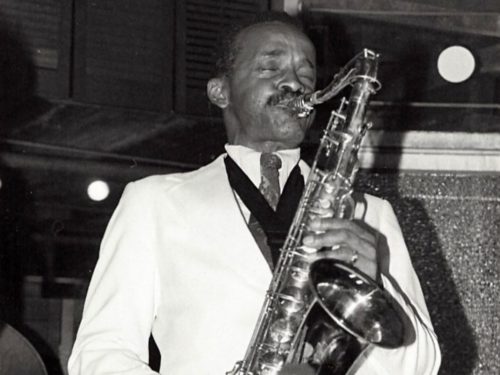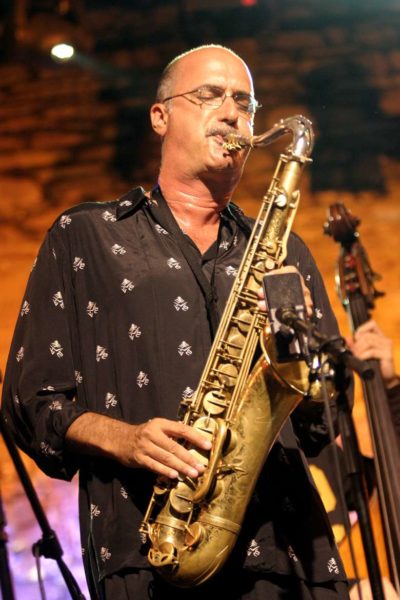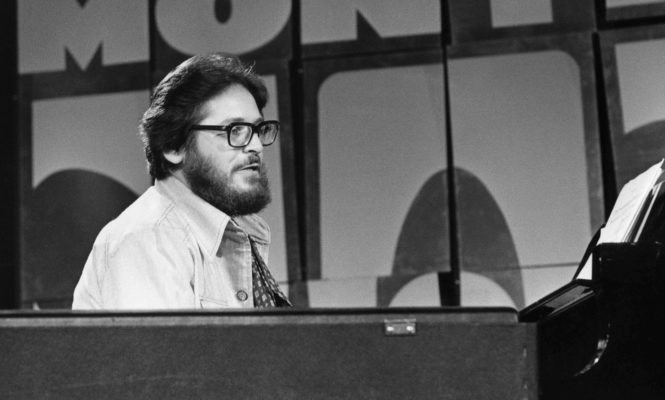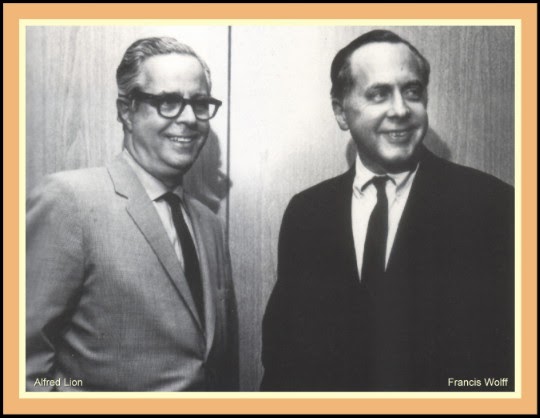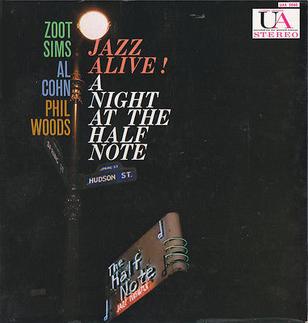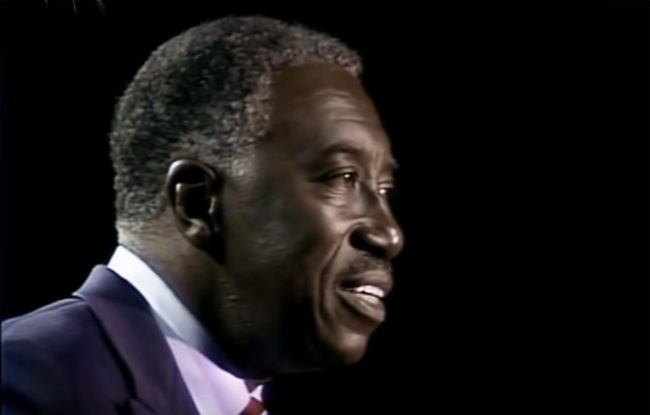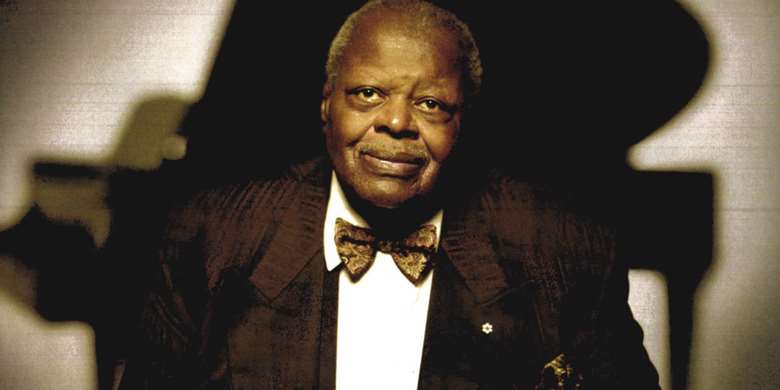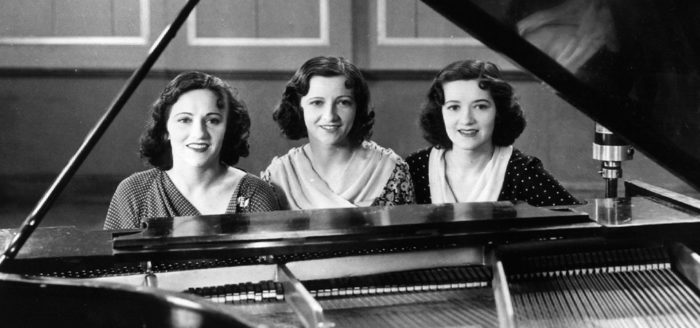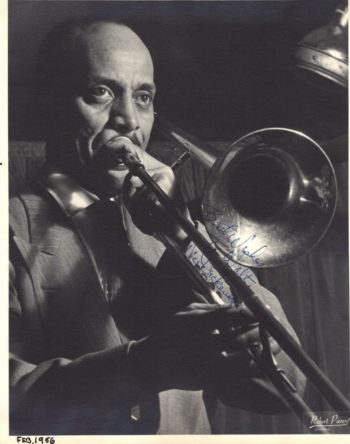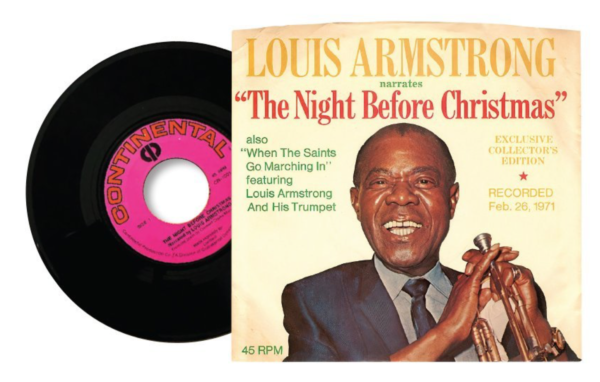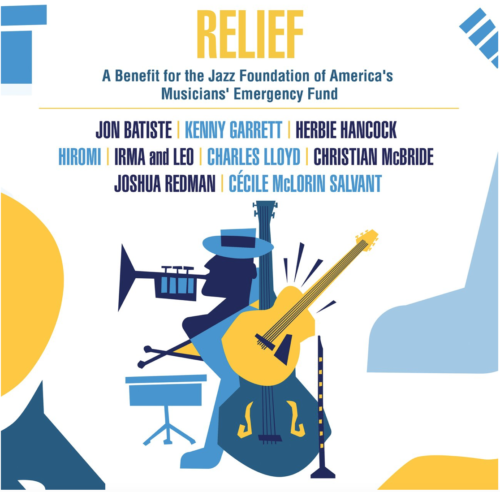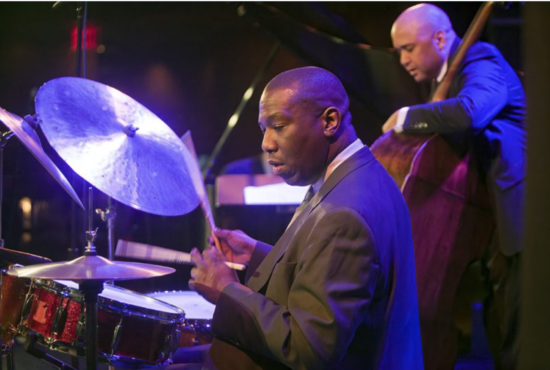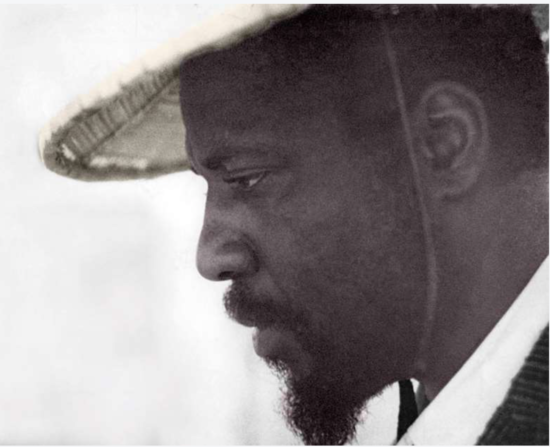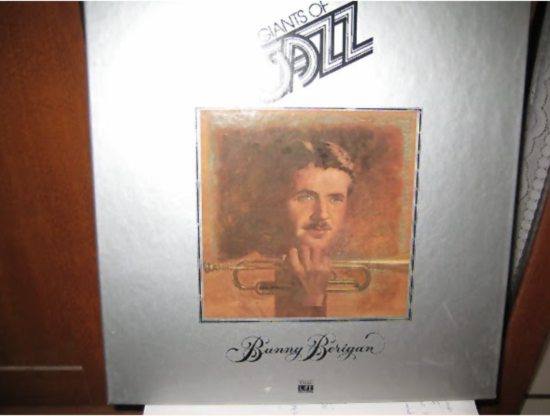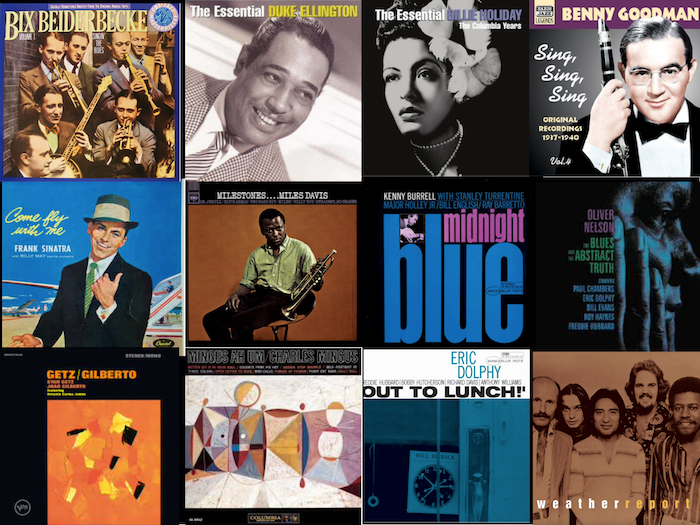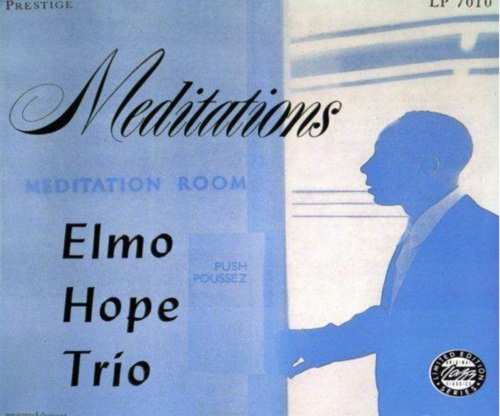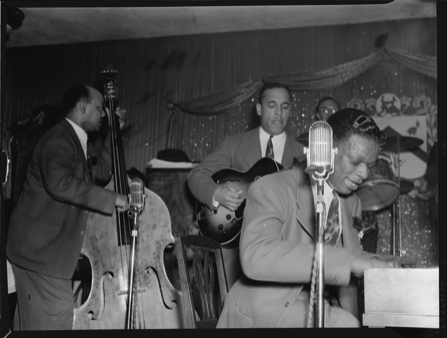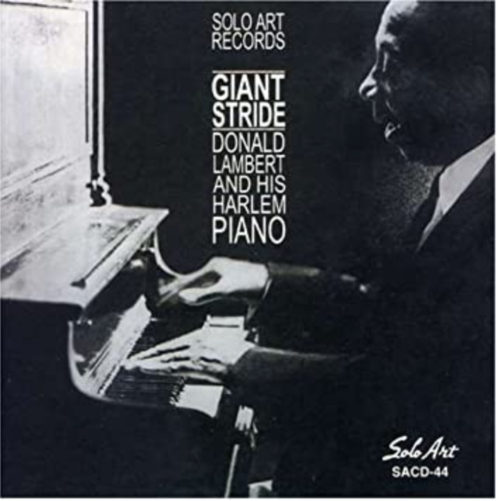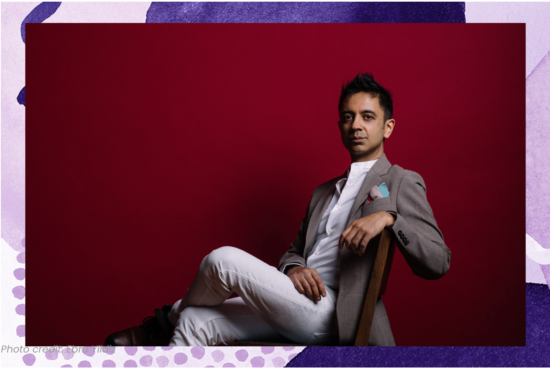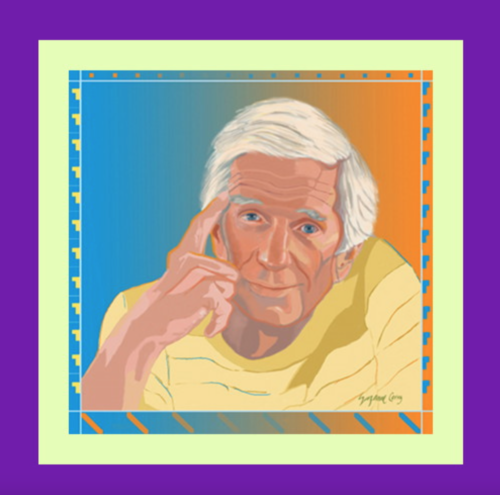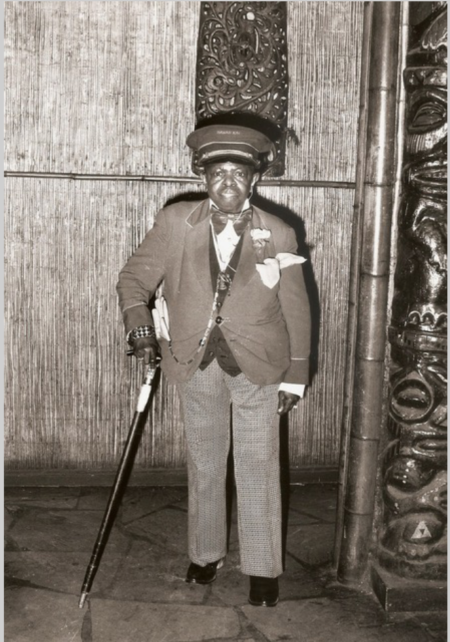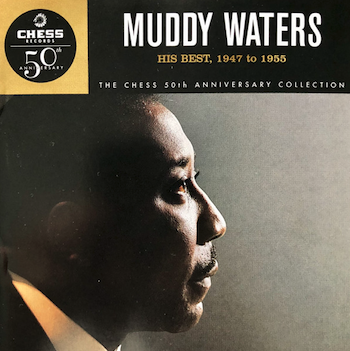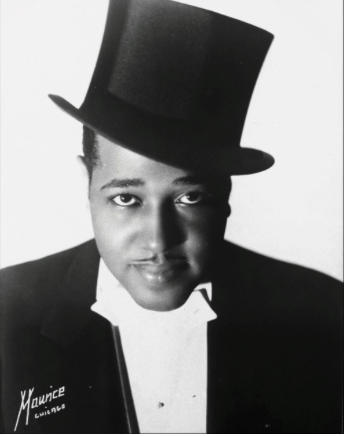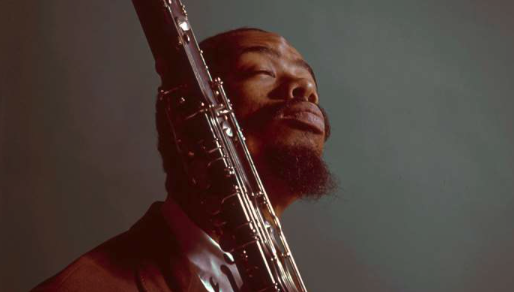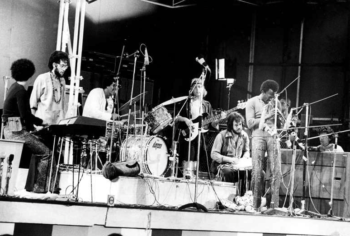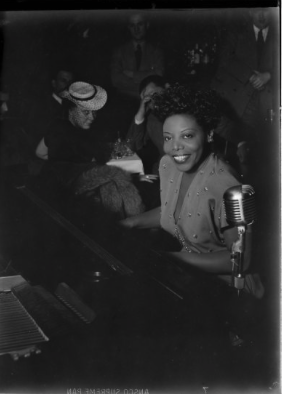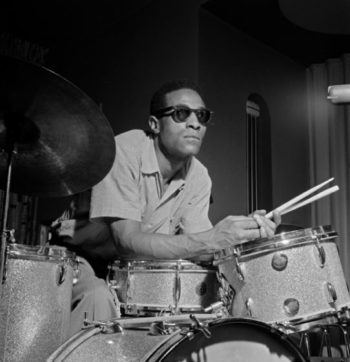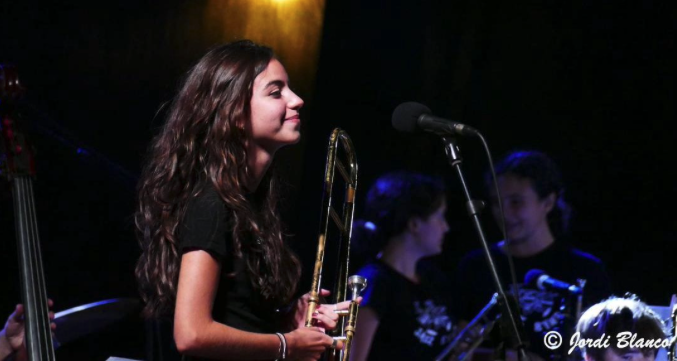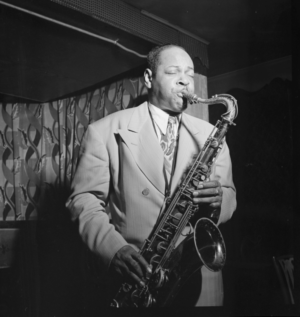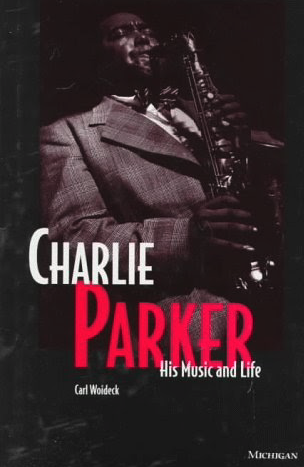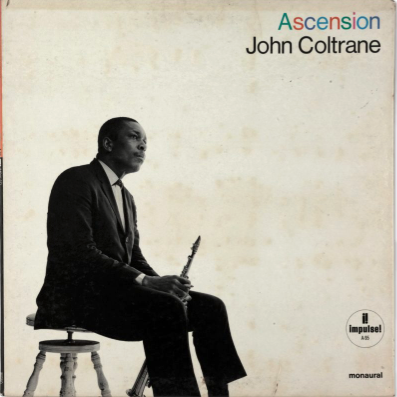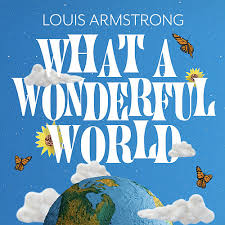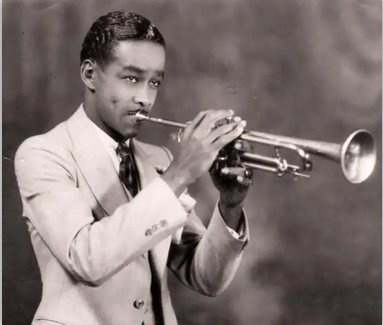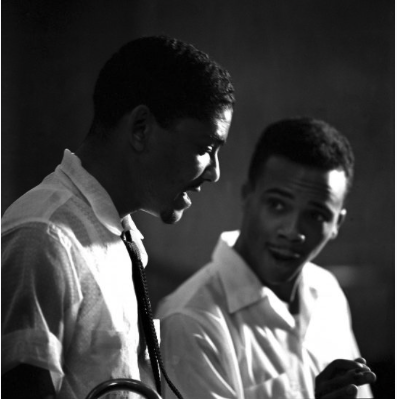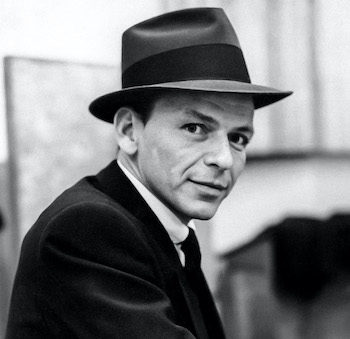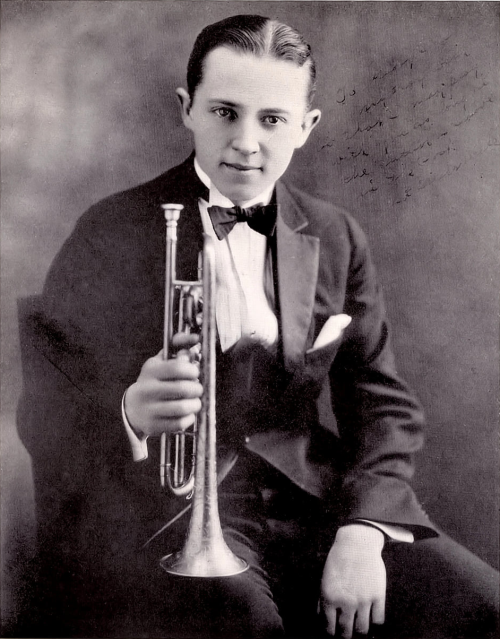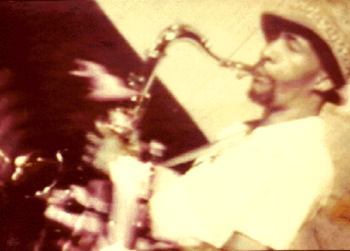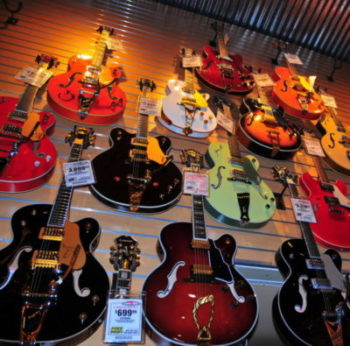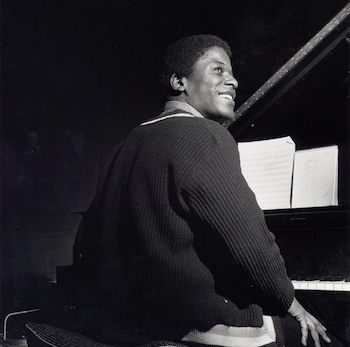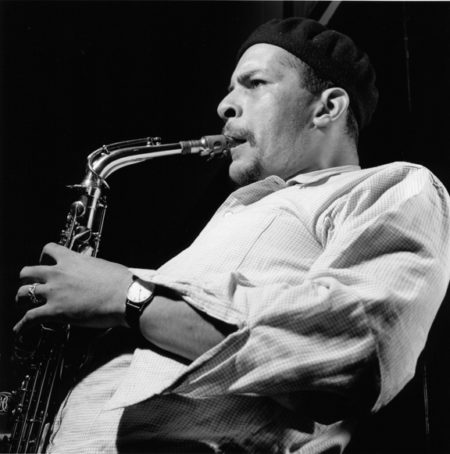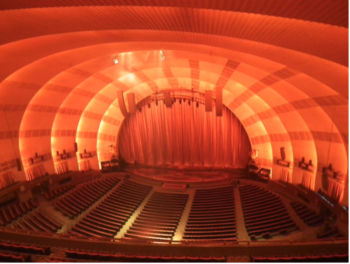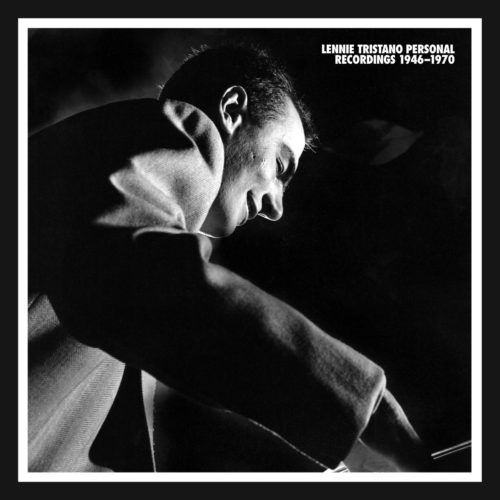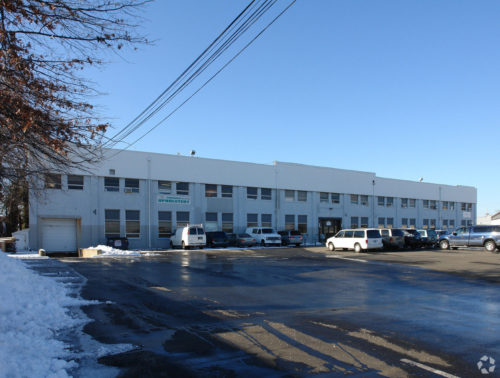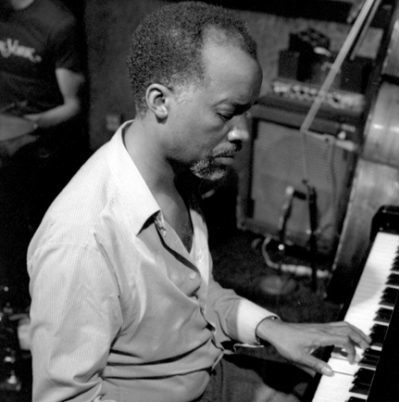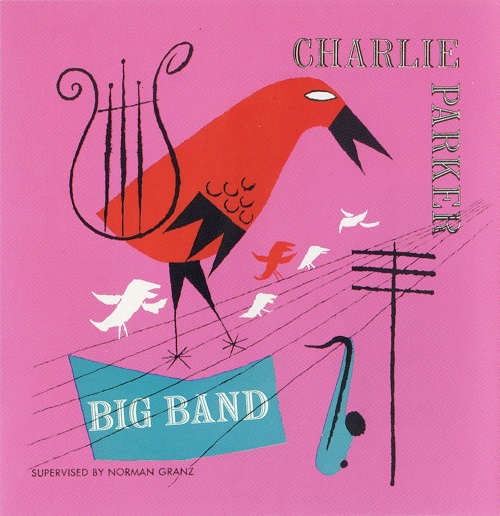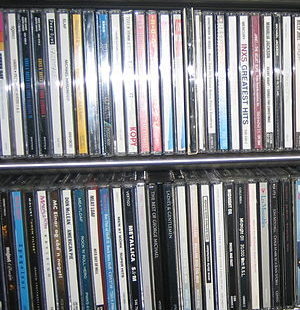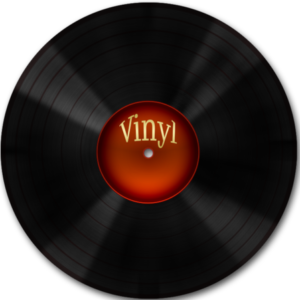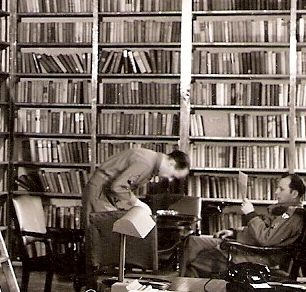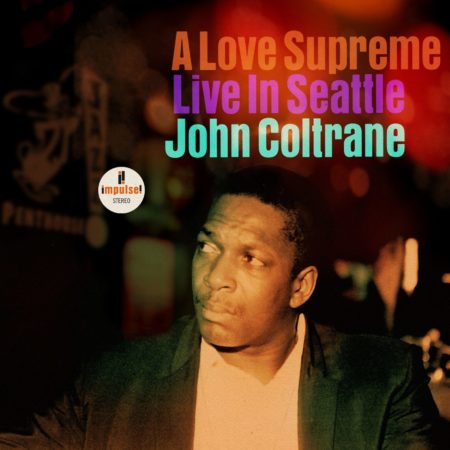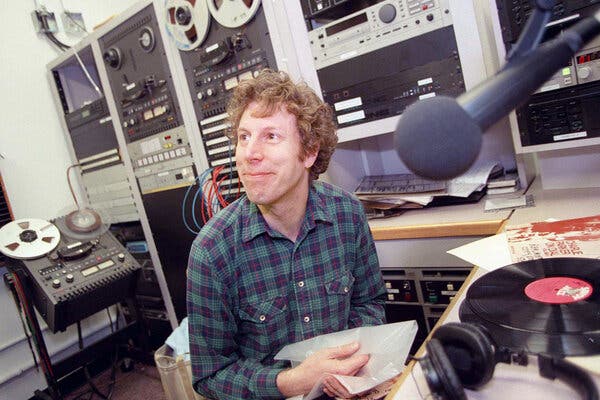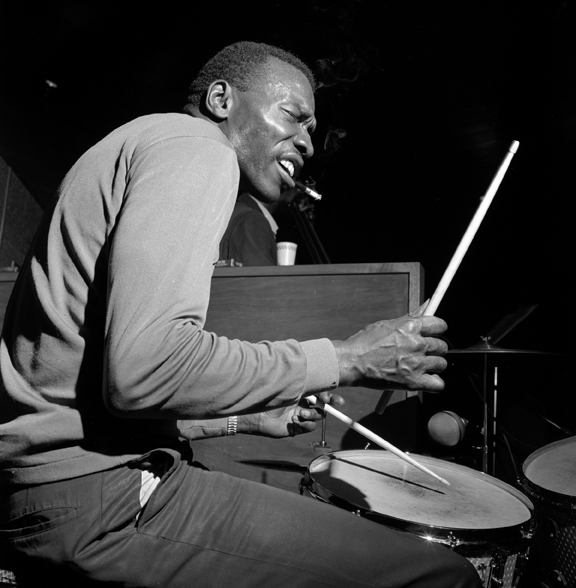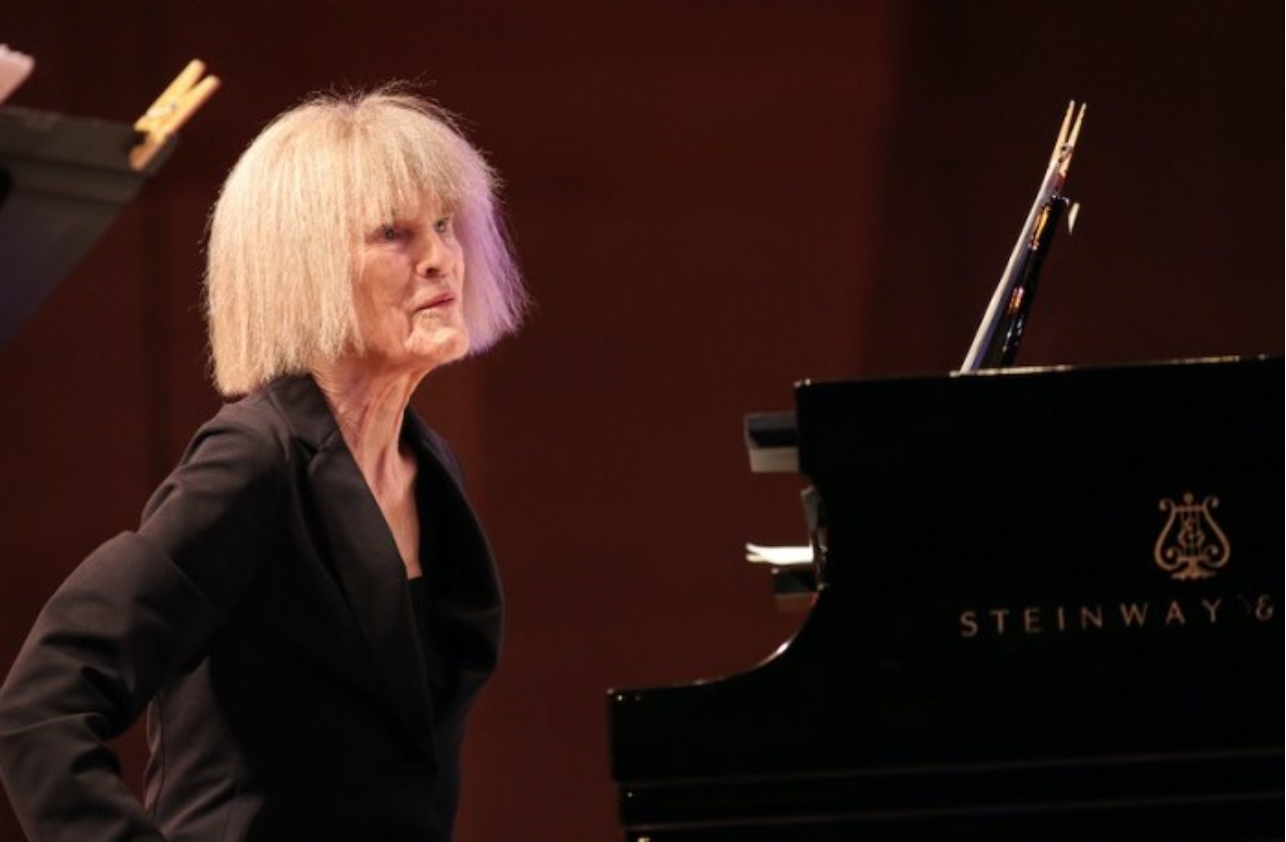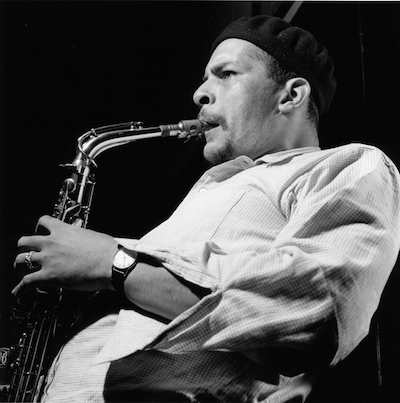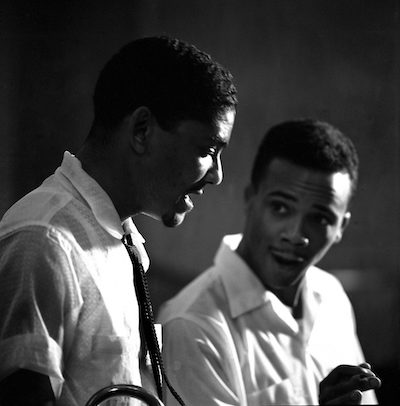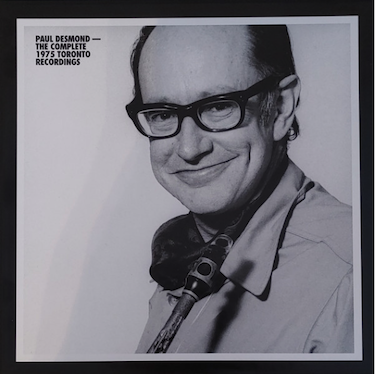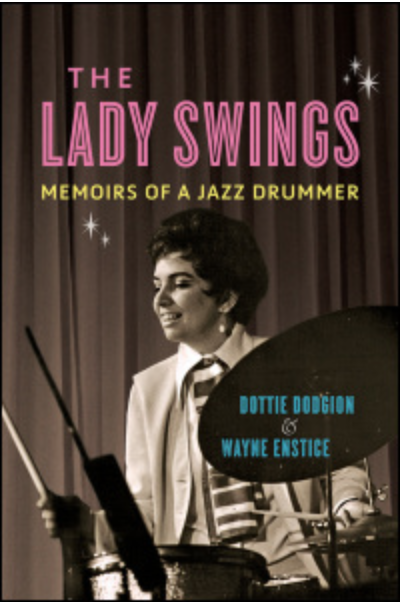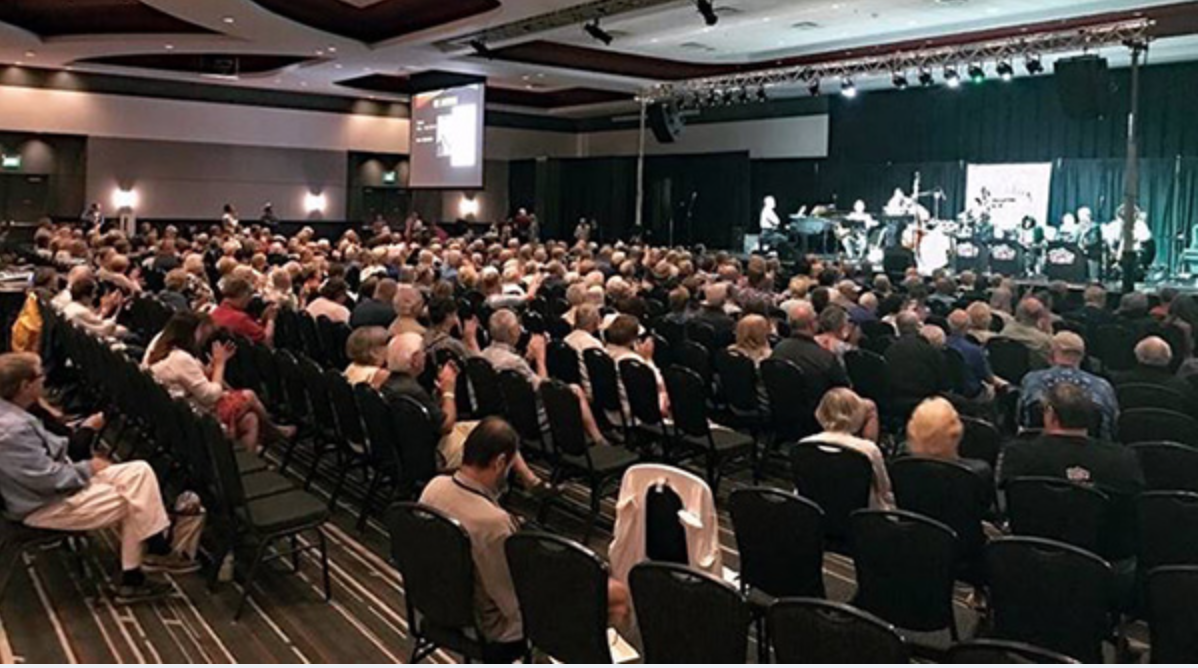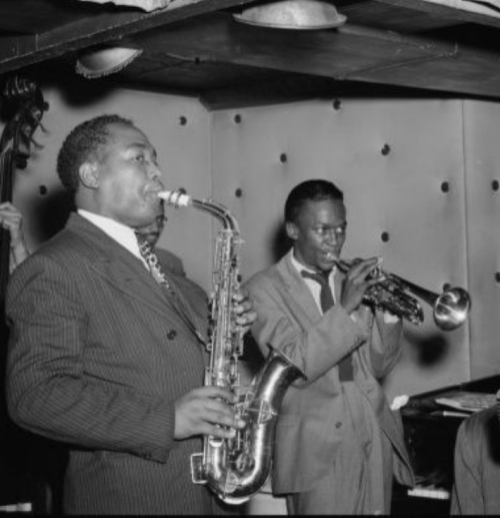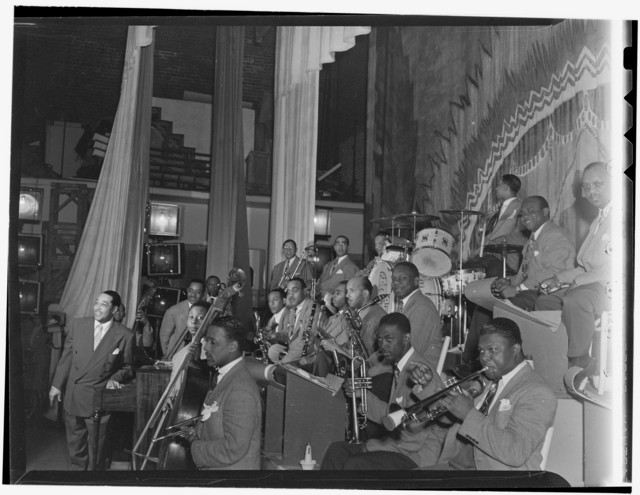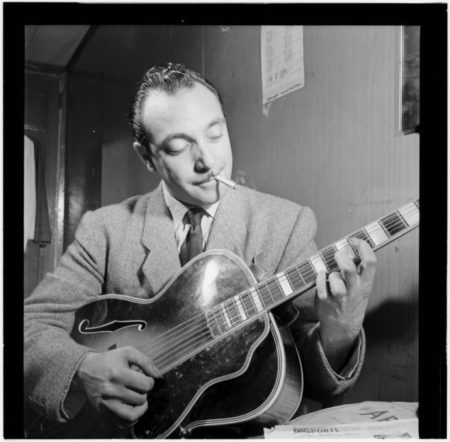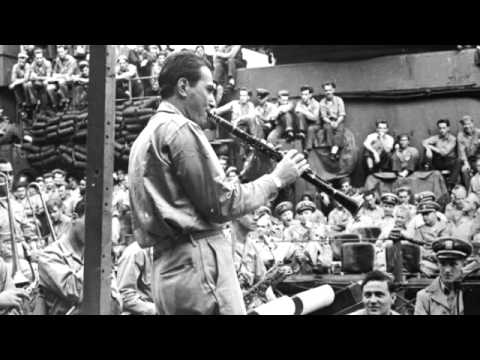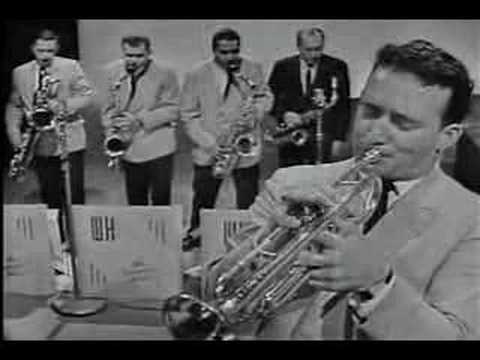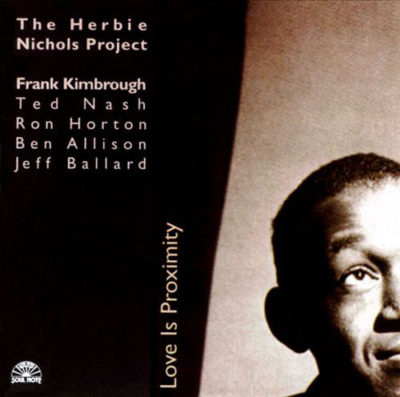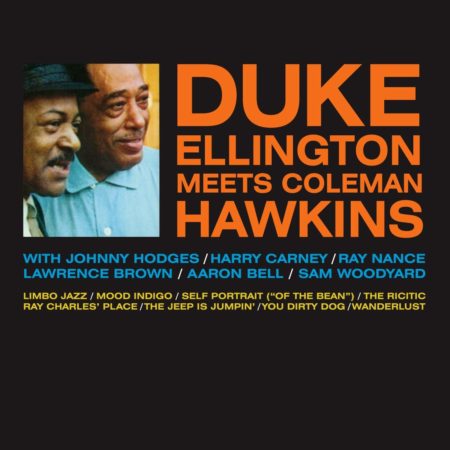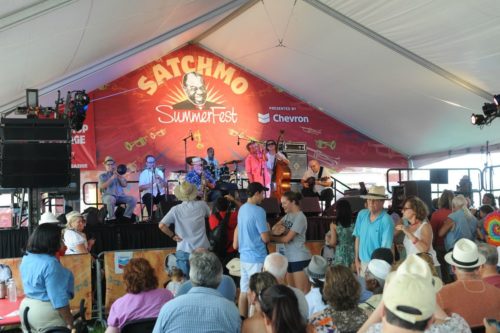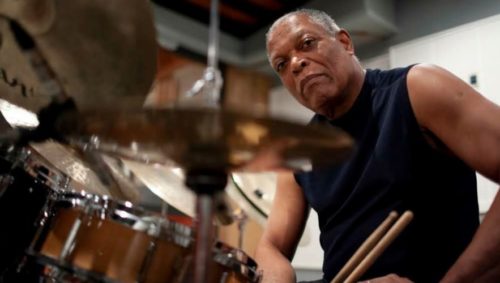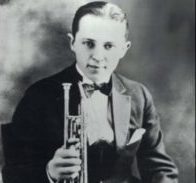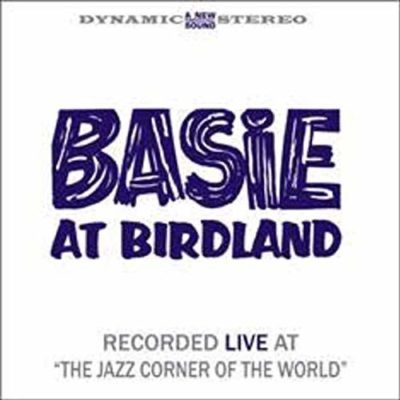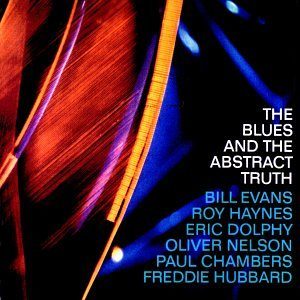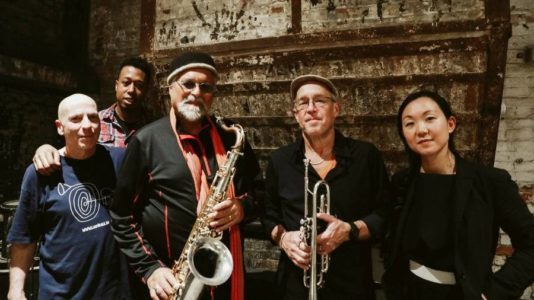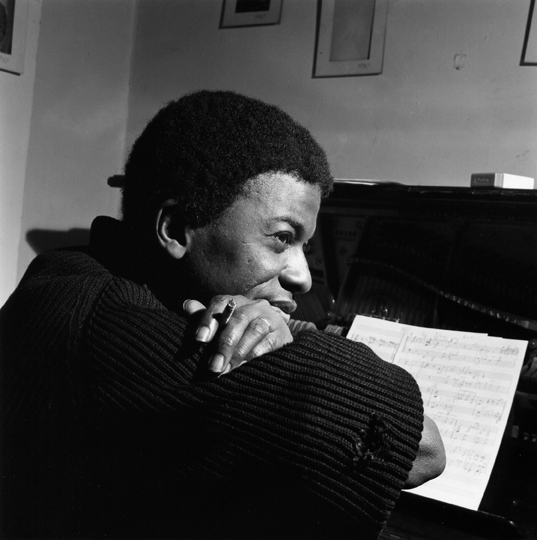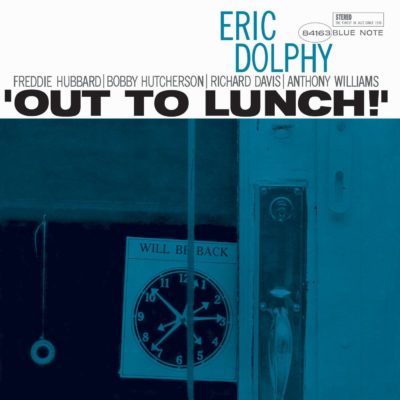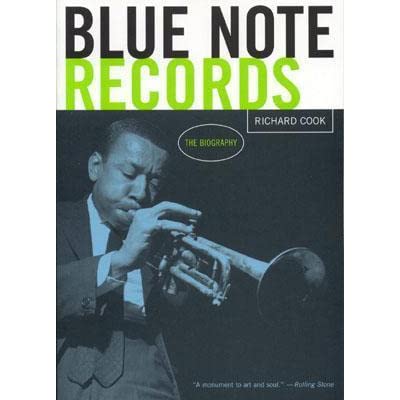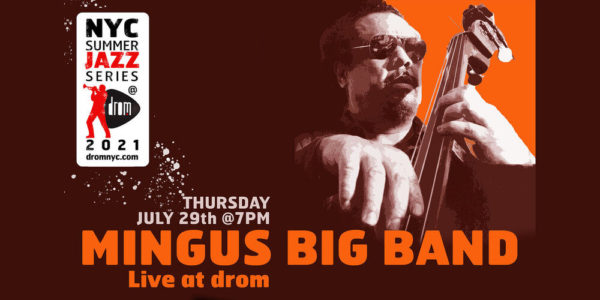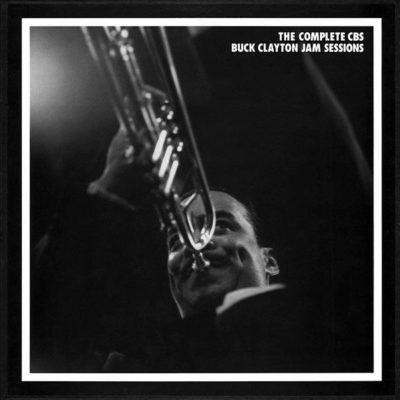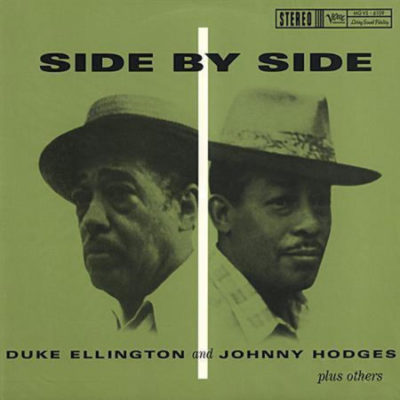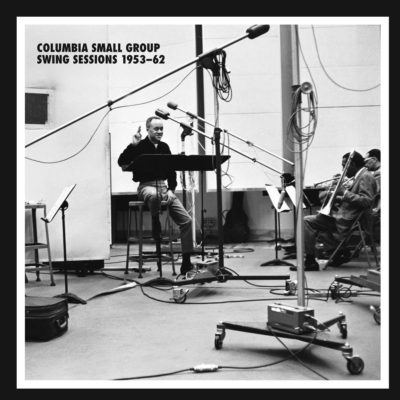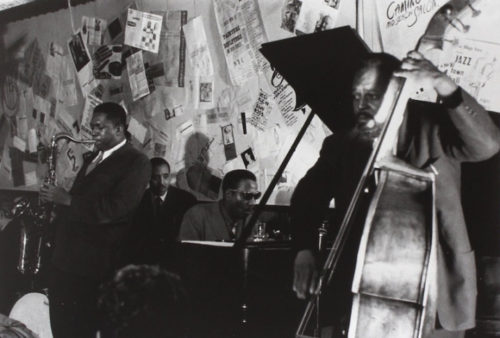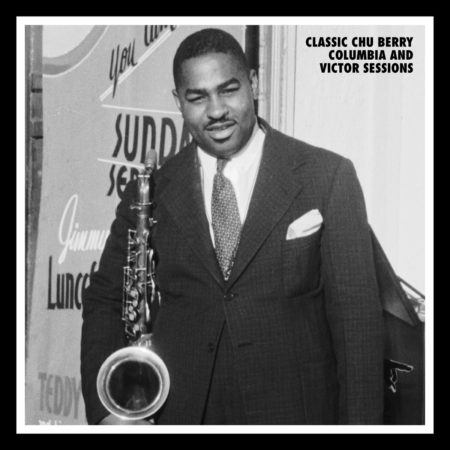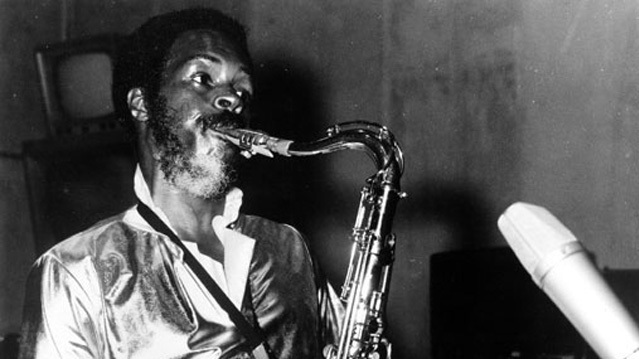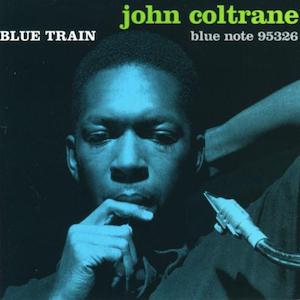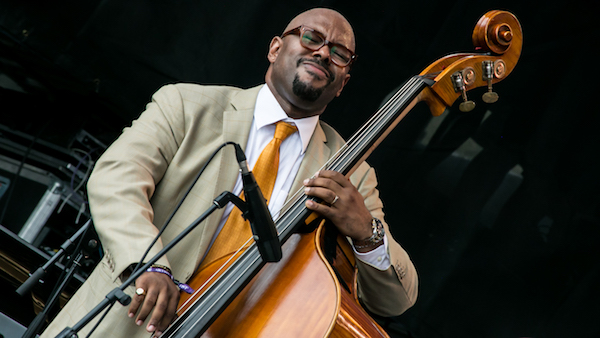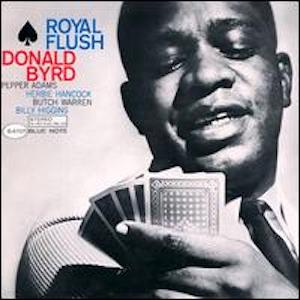
"Insightful writing, captivating photography and a 100 year history of recordings for jazz fans."
Please sign up for our free jazz newsletter and
Michael Cuscuna
1948 – 2024
Michael Cuscuna, a titan in the world of jazz, passed away on April 20, 2024, leaving behind a legacy that will resonate for generations.
Michael is survived by his wife Lisa, his children, Max and his wife Jackie, and Lauren, and two grandchildren, Nicolas and Penelope Cuscuna. His passing leaves a void in the hearts of all who knew him. May he rest in peace, and forever be remembered as he will be deeply missed.
Throughout his career, Michael possessed a curiosity for unearthing unissued jazz recordings, delving into the vaults of record labels looking for hidden gems. In 1975 his search led him to the great Blue Note vaults – unlocking a treasure of unissued material by the great jazz legends.
This experience would later be the impetus for co-founding Mosaic Records Inc, a boutique label specializing in complete sets of some of the most influential jazz artists. Mosaic Records, co-founded with Charles Lourie, produced hundreds of editions including works by Thelonious Monk, Sidney Bechet, Hank Mobley, John Coltrane, Lee Morgan, Dexter Gordon, Art Blakey, Tina Brooks, The Nat King Cole Trio and Miles Davis.
Michael recently received a Lifetime Achievement Award from Downbeat and here is an excerpt of one of Michael’s last interviews this past January. (full interview here).
Born in Stamford, Connecticut, in 1948, Cuscuna first got into music at the age of 9 or 10. “It was contemporary R&B on the radio at first,” he recalled recently. “But I played drums on a little starter kit and got into drum records like Gene Krupa and Buddy Rich on Verve, then Max Roach and Art Blakey. When I started to hear the music around the drums, that’s when I got completely hooked. I went through Benny Goodman, Dave Brubeck and the MJQ, until I caught up to what was going on around me around 1960.
“By age 14, I was going to Birdland, which had a peanut gallery. That’s when I heard Blakey and the Messengers, the Coltrane Quartet and Miles. They became my passion and still are. It’s the stuff that gets to you between about 12 and 25 that stays with you for life. You never absorb music in quite the same way after that.”
Many years ago, Woody Shaw said of Cuscuna, “No matter what you produce or do in your life, the thing you’ll be remembered for is rescuing all that Blue Note material.”
“Looking back all these years,” Cuscuna says today, “I’m content with that.”
Funeral arrangements are in process and will be held at the Bozak Funeral Home in Stamford, CT.
Please check their site at end of day Monday when information should be available. There will also be a web page on their site where you may post on their tribute wall.
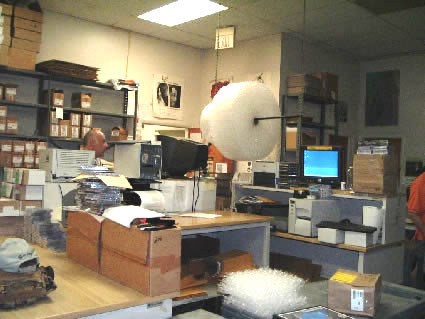
I’ve known Michael for 25+ years since having the privilege of joining Mosaic Records. While many are aware of the legacy of riches he has catalogued for one of the greatest art forms, all of us who work or have worked at Mosaic also know him as a hard worker, generous and dedicated to his family.
Michael possessed an energetic spirit and drive that was infectious. When I look at the list of 200 sets for Mosaic plus all the Blue Note, Impulse and other recordings that Michael was instrumental in bringing to the public, it’s clear his passion for music drove his life-long ambitions. He was proud of his achievements while at the same time being very appreciative and grateful that he was working with many of the greatest jazz musicians and their body of work.
It’s very hard for me to convey my feelings about someone I worked closely with every day, had many lunches with and was treated to innumerable special musical memories. I’ll miss a partner, a lunch-mate, and a special friend.
Fred Pustay
==============================================================================
I can’t think of any better way to describe Michael than as my mentor. His guidance was immeasurable – filled with direction, leadership, knowledge, understanding, and of course, toss in some of that incredibly sarcastic wit and sense of humor. Michael knew, like his partner and close friend Charlie Lourie, how to run the business of a jazz re-issue label when there were few and far between such companies.
He also was a true family man. I saw and heard the love he unconditionally gave to his family. It was not uncommon to hear a heartfelt “I love you” at the end of a conversation to his wife Lisa, or to see and hear the love and dedication to his children, and then, in the past few years, the stories of his grandchildren who gave him immeasurable pleasure.
Michael embraced my passion for jazz record collecting and after about a dozen years of managing the Mosaic warehouse he and Charlie gave me a job of producer, expanding the Mosaic catalog to include more pre-tape era boxed sets. I am ever in debt to the both of them.
And there are so many other Mosaic journeys in the past 36 years that I could impart to you, as I’m sure there are many others who knew him even better than I that could spin countless tales of this unique man. Seek them out. Keep Michael in your heart and on your turntables, CD players or however else you listen to the music. And be grateful and thankful he was here on this planet.
Scott Wenzel
Wayne Shorter, Dexter Gordon, Michael Cuscuna, Billy Higgins, Herbie Hancock, Palle Mikkelborg (or Mads Vinding) and Ron Carter. Studio Davout in Paris, 1985 during the making of ‘Round Midnight. (photo courtesy Michael Cuscuna)
“Jazz is still, for me, the greatest music ever – it just ate its way into my soul, and it became a part of every fabric of my body…
I remember once I was doing a record with Dexter Gordon at 30th Street called Gotham City, and Art Blakey was on drums. During the session Art looked at me and said, ‘Man, you remind me of [Blue Note Records co-founder] Alfred Lion.’ That was the greatest line I ever heard, you know?” -Michael Cuscuna, JerryJazzMusician.com
Lester Young
Lewis Porter truly hits the nail on the head in this analysis of Lester Young. Along with samples of Pres’s finest post-1942 recordings (the remarkable “After Theater Jump” solo on Keynote is just one of these), the piece from “Playback With Lewis Porter” cites an interesting example of why it’s a good thing to explore more of a musician’s work in its totality. – Scott Wenzel
Count Basie
Jive At Five
Michael Zirpolo’s “Swing And Beyond” examines the marvelous Count Basie band of the late 1930s and a classic on Decca, “Jive At Five”.
Bobby Sherwood
We don’t hear much of guitarist / trumpeter Bobby Sherwood these days, but he was a top bandleader, arranger and instrumentalist who recorded for Capitol and had a hit with “The Elk’s Parade”. After he left leading his band he was a regular on television as MC or performer on a number of quiz and variety shows. Michael Zirpolo furnishes the information. – Scott Wenzel
The Sophisticated Jazz of Cab Calloway
The Guardian digs deep in their archive for this short piece on the arrival of Cab Calloway in London and the “Hi-De-Ho” man’s responses to what “scatting” was all about.
Elvin Jones
On John Coltrane’s “India”
Among those who occupied the drum throne for John Coltrane, Elvin Jones likely stood without parallel in his instantly identifiable contributions to John Coltrane’s sound. Ethan Iverson’s analysis of the Coltrane classic India offers a brief yet meaningful glance at how Elvin Jones served as John Coltrane’s central collaborator. – Nick Moy
Bobby Hutcherson
WKCR Interview
Ted Panken revives his 1999 WKCR interview with Bobby Hutcherson, whose career spanned eras of significant musical expansion. As you’d expect, Hutcherson’s reflections prove thoughtful, interspersed with a couple of Hutcherson’s characteristically entertaining anecdotes. – Nick Moy
’Round Midnight Revisited
A Feast of Music and Acting
Richard Brody, writes about film and jazz for the New Yorker; his realms of interest and expertise intersect in this fresh assessment of Bertrand Tavernier’s 1986 film ‘Round Midnight. Brody’s observations concerning Dexter Gordon’s masterly portrayal of the Parisian expatriate protagonist are notably perceptive, and he directs a nod to the contributions of the other distinguished musicians in the film. ‘Round Midnight is now available on Criterion DVD and is now streaming via Apple TV: don’t miss it this time around. – Nick Moy
Click photo above for article and here is a 3 minute clip:
Greg Osby
From the Abyss to Minimalism
Ted Panken’s DownBeat account of the travels of Greg Osby chronicles Osby’s sometimes winding path, even as his musical compass consistently pointed in the direction of the new. Although this lion may no longer be regarded as young, he can still roar, as Osby’s collaborations testify. – Nick Moy
Classic Jazz At The Philharmonic Jam Sessions 1950-1957
Back In Stock
“Roughly ten hours of music means a whopping amount to hear and scads of musicians to identify. As ever in Mosaic country, the accompanying literature is authoritative, absorbing and illuminating. Granz’s biographer Tad Hershorn examines his subject’s personality while John McDonough supplies a deeply considered historical/critical view. The original tapes were meticulously transferred by Brett Zinn and the sound restoration and mastering by Andreas Meyer and Nancy Conforti catch the authentic atmosphere. You could almost swear you were in the hall.” – Read full review at LondonJazzNews.com
“Roughly ten hours of music means a whopping amount to hear and scads of musicians to identify. As ever in Mosaic country, the accompanying literature is authoritative, absorbing and illuminating. Granz’s biographer Tad Hershorn examines his subject’s personality while John McDonough supplies a deeply considered historical/critical view. The original tapes were meticulously transferred by Brett Zinn and the sound restoration and mastering by Andreas Meyer and Nancy Conforti catch the authentic atmosphere. You could almost swear you were in the hall.” – Read full review at LondonJazzNews.com
The Complete Joe Henderson Blue Note Studio Sessions
Running Low/Last Chance
“The Henderson of the 1960s offered the final glow of 50s jazz and then gave us angular bop and free flowing improv as he teamed up with influential sidemen including a who’s who of pianists. In addition, a musical and personal partnership with trumpeter Dorham blossomed. If you haven’t spent a lot of time with Mr. Henderson yet, now’s the time.” – Read full review at AllAboutJazz.com
Lennie Tristano Personal Recordings 1946 – 1970
Running Low/Last Chance
“The most adventurous session, by far, is the prophetic 1948 meeting with Konitz, Marsh and Bauer. Many of you may have heard of Tristano’s famous “Intuition” and “Digression”, but these tunes actually pre-date that legendary on-off. Your eyes might bug out with the revelatory pieces like “Dialogue”, “Digression Expanse” and “Story”. Whole set ends on an almost mainstream scale with a 1962 gig at the Half Note with Tristano cooking with Zoot Sims/ts, Konitz/as, Dallas/b and Stabulas/dr on “Swingin’ at Half Note” and a dry ice smoke of “Lennie’s Dream” and “Hudson Street”.
Included is a 16 page booklet with notes and analysis by Lenny Popkin, as well as a collection of very cool vintage photos. Mosaic is owed a debt of gratitude for this one, bringing back to recognition an overlooked and underappreciated visionary.” – Read full review at JazzWeekly.com
Ornette Coleman
The Shape of Jazz To Come
Chris Vognar makes the case that Ornette Coleman’s first album on Atlantic, The Shape of Jazz to Come, is his best. Enthusiasts can argue, of course; yet an album that opens with Ornette’s unbearably haunting classic Lonely Woman can make a legitimate claim to head the list. – Nick Moy
Bobby Hutcherson
Dialogue
Bobby Hutcherson is one of the established giants of mainstream modern jazz. But in 1965, he was on the cutting edge of experimentation, working with Jackie McLean, Eric Dolphy, Andrew Hill and Archie Shepp. The personnel on “Dialogue”, his first album as a leader to be released, reads like a who’s who of the creative front in jazz at the time: trumpeter Freddie Hubbard, reedman Sam Rivers, pianist/composer Andrew Hill, bassist Richard Davis and drummer/composer Joe Chambers. Rudy Van Gelder’s vivid recording style captures all nuances of this amazing album.
Max Roach
Richard Williams observes the birthday centennial of Max Roach (born either January 8th or 10th, 1924) with some choice reminiscences, including from Roach himself. Anyone who saw him play can attest that the recollections of Max Roach’s physical and musical stature are spot on. – Nick Moy
J.J. Johnson
This installment of David Brent Johnson’s invaluable Night Lights traces the life and work of trombonist J.J. Johnson, whose remarkable virtuosity and apparent improvisational ease broke important ground for his instrument in the terrain of bebop and beyond. David Johnson also sheds light on J.J Johnson’s later work as composer and arranger, including his forays into the Third Stream. – Nick Moy
The Savory Collection 1935-1940
Review
Don’t Miss Out!
Read Review at Jazz Lives
When it arrived, I turned immediately to the fifth disc — one of a pair containing thirty-nine live performances by the Count Basie band from May 1938 to February 1940, and I was open-mouthed and astonished three minutes into the first performance (one of four particularly extravagant frolics from the Randall’s Island Carnival of Swing) — music that I thought I would never have the good fortune to hear…
Duke Ellington Welcomes
Don Byas and Archie Shepp
Tom Reney recalls his college days at the University of Massachusetts and having as teachers and friends both Max Roach and Archie Shepp who related how important both Duke Ellington and Don Byas were to the jazz community. – Scott Wenzel
Earl Hines
Unrecorded Band with Parker and Gillespie
We applaud Lewis Porter for his gathering of the detailed research by Leif Bo Petersen of a true legendary band – the Earl Hines Orchestra during the time when both Dizzy Gillespie and Charlie Parker were in the ensemble. – Scott Wenzel
Tony Williams
A Look Back At A Last Interview
As Miles Davis said about Tony Williams in his 1989 autobiography: “There ain’t but one Tony Williams when it comes to playing the drums. There was nobody like him before or since. The band revolved around Tony…Tony was the fire, the creative spark.”
Lionel Hampton
Belgium, 1958
Here’s almost a full hour of rare Lionel Hampton from 1958 at the prestigious La Monnaie Opera House in Brussels, Belgium. Hamp’s big band still had some name stars and fire power in the ranks like that of Andy McGhee, Bobby Plater, Eddie Williams and Wade Marcus. – Scott Wenzel
Sun Ra’s LP Business
Encountering the inimitable Sun Ra had a nearly inevitable effect of sparking indelible impressions. Jim Eigo brings up several such recollections, by way of Lewis Porter. – Nick Moy
A Bounty of Documentaries
A raft of intriguing documentaries has come our way, thanks to this dispatch from Ted Panken. Consider, for example, a glimpse of the chemistry Antonio Carlos Jobim and Elis Regina brought to their classic recording; a treatise on the New Orleans parade tradition; or a chance to watch Anthony Braxton bringing his vocal music to life. All five films promise to be fascinating. – Nick Moy
Eddie Condon & Dave Tough
Staged footage for a March of Time newsreel clip called “Night Club Boom” from Eddie Condon’s in Greenwich Village, February 9, 1946. Not only do we get a chance to see Bill Davison, Brad Gowans, Jack Lesberg, Dave Bowman, Tony Parenti and Condon, but a rare chance to see legendary Dave Tough. – Scott Wenzel
Wayne Shorter
“Wake Up & Dream”
If you haven’t seen “Zero Gravity,” the luminous Wayne Shorter documentary, consider it essential viewing, urgently recommended. Even if you’ve seen it, read this late interview, in which Shorter dispensed reminiscences of his past and and musings on our present that would likely originate from no one else. – Nick Moy
Bud Powell
Centenery Project
The project aims to transfer the legendary pianist’s remains, from an unmarked plot in Pennsylvania, to Woodlawn cemetery, in Bronx, New York. It’s hoped to have this accomplished in time for his 100th birthday – September 27, 2024.
Among the great entertainers residing at Woodlawn: Duke Ellington, Miles Davis, Coleman Hawkins, Lionel Hampton, and Clark Terry. From earlier times, there are King Oliver, Bert Williams, and Florence Mills. Among Bud Powell’s contemporaries, Max Roach and Jackie McLean are at Woodlawn. As well, Ornette Coleman and Cecil Taylor are there. – Peter Pullman
Also checkout info & excerpts from Peter Pullman’s book: Wail The Life of Bud Powell
John Scofield
Explores ‘Uncle John’s Band’
The young John Scofield didn’t see himself as a Grateful Dead follower; he was a jazz guitarist. In the Relix, Scofield explains how the Dead’s music became more prominent in his musical investigations. – Nick Moy
Count Basie
April 1944 Performance
April 16, 1944 and for a few brief moments we see the Count Basie band live at a concert celebrating Paul Robeson’s 46th birthday and on the anniversary of the Council On African Affairs. Held at the 17th Regiment Armory in Manhattan we get Buddy Tate soloing and great views of the sax section with Earle Warren and Jimmy Powell on alto, Rudy Rutherford on baritone and Lester Young! – Scott Wenzel
Extraordinary Jazz Guitarists
Featuring a history of Jazz guitarists and 6 great clips. Annotated by Scott Yanow, Mike Peters and others.
Clifford Brown
Clifford Brown’s prodigious technique is always totally integrated with the content of his playing. His sound is buttery when it is supposed to be, in his role as nonpareil balladeer; hard and brilliant when he moves into overdrive on the up-tempo poppers. Rhythmically he danced; tonally he sang.
Artie Shaw
“Time Is All You’ve Got”
Will Friedwald announces the return of a spectacular jazz documentary that I taped on VHS back when it first was released in 1985 and which has hardly seen the light of day till now. It’s Brigitte Berman’s masterpiece “Time Is All You You’ve Got” which follows the career of clarinetist, band leader, author and intellect, Artie Shaw. – Scott Wenzel
Count Basie w/Lester Young & Chu Berry
This is the Birth of Something New
“Seemingly at the drop of a hat, an informal jam is captured on wax that not only spoke directly to the world of 1939, but also speaks volumes to us today about the potential for jazz to bridge musical worlds.” – Loren Schoenberg
A Rare Duke Ellington
Audio Interview
Duke Ellington, right after the premier at New York’s Town Hall of “Such Sweet Thunder”, a 12-part suite based on the works of William Shakespeare, is heard in this rare interview by Harry Rasky of the CBC.
Frank Sinatra
Come Fly With Me (1957)
“Come Fly With Me” was composed by Jimmy Van Heusen specifically for Sinatra with Sammy Cahn providing the lyrics. It was the title track for one of the singer’s most swinging albums. Joined for the first time in his career by arranger Billy May, Sinatra clearly enjoyed singing with the top-notch big band and, at the age of 41, he is heard at the peak of his powers.
While always associated with Frank Sinatra (who sang the song regularly during the next three decades), “Come Fly With Me” would also be recorded in later years by the likes of Ruby Braff, Richie Cole, Shirley Horn, Bob Wilber, and James Moody.
Three Great Jazz Guitarists
Carl Kress, Dick McDonough and George Barnes
The guitarists Dick McDonough, Carl Kress and George Barnes, whose recorded output from 1925 through 1977 is thankfully well documented are celebrated in a recent Syncopated Times article by Scott Yanow.
Charlie Parker
Bloomdido (1950)
Talk about all-star bands, it would be difficult to top the quintet that producer Norman Granz put together in 1950.
“Bloomdido,” one of Parker’s catchier original blues, has typically superb statements by the altoist , a muted but blazing Gillespie, the very distinctive pianist, and Rich. If someone asked the question “What is bebop?” a listen to “Bloomdido” would supply some of the answers.
Altoist Charlie Parker and trumpeter Dizzy Gillespie, the co-founders of bebop and arguably the greatest ever on their instruments, had been playing together on and off since 1943. While bassist Curly Russell was a natural choice, neither Bird nor Diz had ever recorded with pianist Thelonious Monk before (although Monk had briefly been in Gillespie’s big band). Buddy Rich was thought by some critics as a controversial choice for the drum chair but his inclusion made this date even more unique and, besides, he played perfectly in this setting.
Andrew Cyrille
DownBeat Feature and Several Interviews
To mark the 74th birthday of master percussionist Andrew Cyrille a decade ago, Ted Panken revived a number of revelatory interviews and a Blindfold test, punctuated by sage observations from Cecil Taylor and Anthony Braxton that endeavor to explain, yet ultimately marvel at , Andrew Cyrille’s “magical“ artistry. – Nick Moy
Louis Armstrong’s Last Word
If you think you had heard all you needed to know about why Louis Armstrong is so iconic, Ethan Iverson paints a broad picture on the importance of Armstrong in a recent article in The Nation. – Scott Wenzel
Miles Davis
1950 DownBeat Interview
This initial Miles Davis interview in Down Beat from January 27, 1950 reveals Miles’s articulate and wide-ranging appreciation of all forms of music. The attitude permeated his entire career. – Michael Cuscuna
Ellington-Strayhorn
World Premiere of Such Sweet Thunder
A recent Playback With Lewis Porter contains fresh new facts and details on the great Ellington/Strayhorn collaboration between music and the works of William Shakespeare. “Such Sweet Thunder” is the piece and a look at the world premiere of this piece is discussed in great detail. – Scott Wenzel
Jaws & Griff
Tough Tenor Favorites
Marc Myers at JazzWax celebrates “Tough Tenor Favorites” by one of the most celebrated tenor saxophone teams Johnny Griffin and Eddie Lockjaw Davis. Like the equally popular and prolific Sonny Stitt-Gene Ammons team, the group blends the contrasting styles of big-toned swing (Davis, Ammons) with the fleet bebop excursions of Griff and Stitt. Most other tenor sax dueling teams paired more like-minded partners. Dexter Gordon told me that he and Wardell Gray often couldn’t tell each other apart on playbacks! – Michael Cuscuna
Carla Bley
1936-2023
Carla Bley was a remarkable and distinctive artist. At the 1969 Charlie Haden Liberation Orchestra session at Judson Hall, she told me that she was irate at Martin Williams’ written remark that compositionally she was a minimalist. Not long after she began writing impressive extended pieces for the Jazz Composer’s Orchestra and her own large ensemble. One of a kind. She will be missed! – Michael Cuscuna
John Coltrane
“A New Room In The Great Pyramid”
David Brent Johnson zeroes in on the John Coltrane Quartet in 1963, a prodigious and ever-evolving year for the band that included an amazing March session with plenty of great unissued material. Only one piece “Vilia” was issued at the time. The rest remained a mystery until Coltrane’s mono copies of the session reels were recently discovered. A gem of a discovery.- Michael Cuscuna
Coleman Hawkins
At The Village Vanguard
Lewis Porter does a little reminiscing about not only seeing the great Coleman Hawkins at the Village Vanguard but also his take on ordering and enjoying liquor! – Scott Wenzel
Thelonious Monk
Birthday Broadcast
Tuesday Oct 10th
WKCR announces a special broadcast celebrating the 106th birthday of American pianist Thelonious Monk, broadcast on FM and HD radio and online for 24 hours on Tuesday, October 10, 2023.
Paul Desmond
“Wendy”
This beautiful performance of “Wendy” by its composer Paul Desmond, guitarist Ed Bickert, bassist Don Thompson and drummer Jerry Fuller was taped at the Canadian Broadcasting Company. This wonderful quartet is heard in all its glory on Mosaic Records’ Paul Desmond – The Complete 1975 Toronto Recordings
.
Don Byas
Underappreciated Monumental Jazz Artist
Pianist Billy Taylor waxes poetic in a JazzWax article on the importance of Don Byas and what he meant to not only tenor saxophonists but to improvisors in general on any instrument.
“Don [Byas] was very special. He did something that was unbelievable in terms of really playing and showing the Europeans that the music was moving forward. What the Europeans heard him play was the beginning of what John Coltrane and others like him eventually did. He paved the way over there. He was way ahead of Coltrane on those sheets of sound. He was trying to make the tenor saxophone sound like Art Tatum.
He and Coltrane had the same idea for the same reason. They both had heard Art’s seamless runs on the piano. Don was trying to do that on the tenor back then. He was head and shoulders above everyone else. Don was also playing bebop and pre-bop. What I mean by pre-bop is he was playing things that led up to bebop. They were long phrases and new ways of using harmonies so that they sounded like the dominant melody. This stuff hadn’t been done yet until Don started playing them.” – Billy Taylor
Rudy Van Gelder
In A Class All His Own
Richard Capeless has been a devoted student of the recording brilliance of engineer Rudy Van Gelder. Over the past five or six years, Richard has amazed data, diagrams, photographs and interviews to document and explore a remarkable life. Get lost in this world! – Michael Cuscuna
Louis Armstrong
East Germany Concerts
Louis Armstrong was truly a jazz ambassador and is the focus in an exhibit curated by Jason Moran and Paola Malavassi called “I’ve Seen The Wall” which can be seen at Das Minsk Museum in East Berlin. – Scott Wenzel
Wayne Shorter
Documentary
On WBGO’s website, Gary Walker sits down for an extended interview with Dorsay Alavi who directed the documentary on Wayne Shorter titled “Zero Gravity” released on Wayne’s 90th Birthday. Alavi approached her unique subject with an open, delving into his Buddhist faith and passion for Science Fiction as well his genius for music and composition.
DownBeat Blindfold Test
Christian McBride
Christian McBride is warm, hardy person, bassist, band leader and educator. All of that comes through in his enthusiastic and informative comments on this eclectic selection of music. Who else could come up with a graphic comment like, “Killer. I love music that kisses the curb, like it’s about to go off the road but it doesn’t.” – Michael Cuscuna
Sonny Payne
Driving the Basie Band
The hard-driving swing of drummer Sonny Payne is showcased here in this Jazzwax post. Payne was a remarkable drummer and thrived in the bands of Count Basie and Harry James as revealed in these classic videos. – Scott Wenzel
King Oliver and Louis Armstrong
Dipper Mouth Blues
“Dippermouth Blues” (or “Sugar Foot Stomp”) reigns as one of the earliest jazz compositions that became a much recorded and performed piece of music. Accounts of who actually wrote the piece is still discussed and recent research from Lewis Porter gives us a clearer picture. – Scott Wenzel
Tony Williams’ Lifetime
Rare Filmed Performance
The ever articulate and perceptive Richard Williams has posted the newly discovered footage of the Tony Williams Lifetime live in Bremen during their 1970 European tour. It is the only video of this amazingly inventive and exciting band with Tony, Larry Young, John McLaughlin and Jack Bruce. Lifetime had its own concept and sound, combining cutting edge jazz improvisations with the energy and power of hard rock. When they first formed, Larry Young called me to come down to the Village Gate to hear this new group (before Jack Bruce joined). I couldn’t believe the intensity and biting solos by this trio. Why they never got the recognition and success that they deserved is a nagging mystery to me. – Michael Cuscuna
Dick Gibson’s Jazz Party
Labor Day weekend in Colorado from 1963 to 1993 was always a blast if you were lucky to have either played or listened at the Dick Gibson Jazz Party. And a party it sure was as documented in this amazing film footage shot during sometime in the early 1970s. Dick Gibson ran his jazz party for some 30 years, starting in 1963, and usually during the Labor Day weekend. Each year, he took musicians he liked to towns in Colorado, along with critics and fans, and for three days different formations of musicians played.
Keith Jarrett
Interview
The extended interview with Keith Jarrett by Robert Doerschuk for Keyboard Magazine dates from 1986. Keith is an affable but very philosophical frame of mind, expounding about music in its purest essence (i.e. sound). Sometimes reading between the lines with his conversations is more revealing than what he literally says. – Michael Cuscuna
Elmo Hope
An Undervalued Artist
This episode of Christian McBride’s Jazz Night In America is dedicated to the music of pianist/composer Elmo Hope, one of the several greats who first emerged in the ‘40s. Bud Powell and Thelonious Monk became geniuses with great output and influence. Elmo is in the group of equally talented pianists and writers who remain woefully undervalued. Randy Weston and Herbie Nichols are among the celebrated artists in that group. – Michael Cuscuna
Richard Davis
This month we lost one of the most powerful and inventive bassists in modern jazz. Richard Davis’s range knew no limitations; he was an in-demand studio bassist who worked with the likes of Van Morrison and Paul Simon in his long studio career. He was also an essential component in groundbreaking albums like Booker Ervin’s Freedom Book, Eric Dolphy’s Out To Lunch and Andrew Hill’s Point Of Departure among dozens of masterworks. His love of horses, his parental responsibilities and his love of teaching helped him decide to accept a teaching position at the University of Wisconsin in Madison in 1977, which took him out of the creative New York club and recording scene. – Michael Cuscuna
Rahsaan Roland Kirk
Rip, Rig And Panic
“Rip, Rig And Panic,” beautifully recorded by Rudy Van Gelder, was Kirk’s finest album of the sixties, possibly of all time. The explosive, energetic and versatile rhythm section of Jaki Byard, Richard Davis and Elvin Jones keep up with the saxophonist’s extraordinary flights that hit New Orleans and Mars and everything in between. – Michael Cuscuna
Benny Goodman
An Incredible Time Capsule
Absolutely amazing footage of Benny Goodman and his Orchestra from 1943 and 1957. The earlier footage has the band at the Hotel New Yorker in NYC with Lee Castle, Bill Harris (before he joined Woody), 18 year old Zoot Sims and Gene Krupa returning to performing live. Some clips are silent and others have drop outs but still an incredible time capsule. – Scott Wenzel
Lester Young
Film Clips
A fascinating little clip of Lester Young being greeted by radio and television host Art Ford during his all too brief program on would become WNET in New York. This is part of Lewis Porter’s “Playback With Lewis Porter” as he provides a number of interesting topics this being one on every film clip of Lester Young. – Scott Wenzel
Booker Ervin
An Underrated Classic
One of the best and most underrated albums of the 1960s modern jazz. Ervin’s impassioned Texas tenor explodes with beauty and invention, fueled by the power and chemistry of Jaki Byard, Richard Davis and Alan Dawson. Brilliant, volatile music. – Michael Cuscuna
Pepper Adams
The Great Baritone Saxophonist
For more than 30 years, Gary Carner has been obsessively researching and compiling materials about the life and music of Pepper Adams and I have the emails to prove it! Ethan Iverson has posted a hefty chuck of Gary’s just published “Pepper Adams: Saxophone Trailblazer.” It’s a beautifully organized and written piece on Pepper’s formative years which formed his approach and style. It appears that it was worth the wait. – Michael Cuscuna
George Russell at 100
The name George Russell may not be a familiar one but he was an important figure in creating compositions and arrangements using advanced harmonies which became modal jazz. Jazzwax explores some of Russell’s works and a brief look at his life. – Michael Cuscuna
Billie Holiday
Anatomy of a Jazz Masterpiece
Tony Steveacre of theartsdesk.com brings a closer look at one of the most celebrated televised film clips of jazz legends that’s ever been preserved: “The Sound of Jazz” on CBS in 1958.
Ornette Coleman
Something Else!!!!
This 1958 debut album by Ornette Coleman announced a major composer and original saxophonist with an expressive blues-based tone and a whole new approach to improvisation. Introduced here are future standards such as “When Will The Blues Leave”, “The Blessing” and “The Sprinx” and some forgotten gems like “Chippie”. The quintet includes Don Cherry, Walter Norris, Don Payne and Billy Higgins who all play more conventionally than Ornette. Cherry and Higgins would soon be instrumental in understanding and helping shape the sound of Coleman’s music.- Michael Cuscuna
Louis Armstrong House Museum
On my first visit to the Louis Armstrong House Museum, the director at the time, the late Michael Cogswell, told me to park my car across the street. Little did I realize that in 2023 there would be a brand new building where I had parked called the Louis Armstrong Center and it is now open to the public. The center houses a 60,000-piece archive that provides a glimpse into the life and career of the jazz maestro. – Scott Wenzel
Eric Dolphy
An Unknown 1963 Audio Interview about Ornette and more
Lewis Porter has spotlighted an amazing website by Alan Saul dedicated to the music of Eric Dolphy complete with interviews and film clips. In this column, Lewis has posted pieces of a 1963 interview with Dolphy conducted by Claes Dahlgren. Especially interesting is his comments about the music of Ornette Coleman. – Michael Cuscuna
Astrud & Gil
News of Astrud Gilberto’s death at age 83 prompted Richard Williams to unearth a copy of her album Look To The Rainbow, which was distinguished by 11 Gil Evans charts on a mix of great Brazilian and American songs. Hardly a great vocalist in the strict sense, Astrud could purr seductive readings of love songs like no one except perhaps Eartha Kitt. – Michael Cuscuna
Saxophone Colossus
The Life And Music of Sonny Rollins
Aiden Levy’s amazing and thorough biography of Sonny Rollins (700 highly readable pages), “Saxophone Colossus” inspired Vinnie Sperrazza to take a detailed deep dive into the fruits of the prolific relationship between Rollins and Max Roach in the second half of the ‘50s. His research, comments and recommended listening are spot on. – Michael Cuscuna
Clifford Brown’s Trumpet
And One Summer In Atlantic City
Arthur George has written an excellent, concise story of Clifford Brown’s short-lived career, using his residency with Tadd Dameron in Atlantic City in the summer of 1953 as the core story. It was the same summer he made his initial recordings for Blue Note and later joined Lionel Hampton’s big band which led to a slew of Paris studio dates by Brownie and Gigi Gryce for Vogue. – Michael Cuscuna
Charlie Haden’s
Guide to his Best Work
Charlie Haden briefly comments on 15 of his recordings, spanning his extraordinary array of musical collaborations: Ornette Coleman, of course, but also Keith Jarrett, Pat Metheny, Hank Jones, Gonzalo Rubalcaba, Old and New Dreams, and his Liberation Music Orchestra. Charlie’s remarks, like his music, are at once thoughtful, even pensive, and heartfelt. -Nick Moy
47th Annual Jazz Record Collectors’ Bash
Thursday-Saturday, June 22-24, 2023
Edison, NJ
More than 25 vendors plan to sell vintage 78s, LPs, 45s, cylinders, CDs, DVDs, books, sheet music, catalogs and other memorabilia. Three exciting, two-hour vintage film and video presentations, hosted by jazz historians Mark Cantor, Will Friedwald and David Weiner, will also take place. Hope to see you there! – Scott Wenzel (click image for more info)
Dan Morgenstern on Record Collecting
As a 78 collector, I love hearing stories of old junk shops, record stores and the eccentric dealers that ran these shops. Dan Morgenstern recalls some heavy hitters in the collecting field that he had met as a young jazz record buyer in NYC. -Scott Wenzel
Harvey Pekar on Collecting Jazz Records
The late Harvey Pekar was a jazz critic, comic book artist and very funny and eccentric person. This is his story of coming to grips with his record-collecting addiction. And I’m sure every word of it is true! -Michael Cuscuna
Blue Note Records: The Collector’s View
London Jazz Collector bravely tries to document that history of Blue Note from 1979. To trace it through a variety of owners and the shift from LP to CD and the many catalog initiatives that we launched since the label’s rebirth under Bruce Lundvall in 1984 is a daunting task. This undertaking seems thorough and remarkably error-free (I think). -Michael Cuscuna
A Stunning New Archival Release
Evenings at the Village Gate: John Coltrane with Eric Dolphy
We’ve been very fortunate in the past 10 years or so. Music by John Coltrane that was thought lost has surfaced and been released by Impulse, Coltrane’s label from late 1961 until his death in July 1967. Additionally, Coltrane music that we never knew existed has surfaced and been carefully restored by Impulse. Nate Chinen discusses the latest find, soon to be released as Evenings At The Village Gate by the Coltrane quartet plus Eric Dolphy from the summer of 1961. It will be released in July, but a preview (“Impressions”) is posted here by NPR! – Michael Cuscuna
Count Basie
Born To Swing
John Jeremy’s “Born To Swing” is a triumphant documentary from 1973 that is a tribute to Count Basie and those shaped the Basie musical landscape. Plenty of rare interviews and music segments are a part of this must see program. – Scott Wenzel
Horace Silver
The Ralph J. Gleason Interview
Jazz Profiles has posted a 1961 interview of Horace Silver by Ralph Gleason. Ralph was a great interviewer because he looked people in the eye and asked well-thought-out questions that he actually wanted the answer to. Horace was a gentle and talkative man. Interviews like this are the best portraits of Horace. His autobiography was too polite and objective to give a sense of Horace and what he was thinking. – Michael Cuscuna
Ira Gitler Talks About Drums
With Tony Williams, Art Blakey, Cozy Cole, & Mel Lewis
Lewis Porter has unearthed and posted 20 minutes of Ira Gitler’s Down Beat symposium with Art Blakey, Cozy Cole, Mel Lewis and Tony Williams in January 1964. Ira probably taped for later transcription. The voices are easy to sort out and the conversation is fascinating. Hopefully, Lewis will post the rest of the tape. – Michael Cuscuna
Benny Goodman
Profile in Jazz
The Syncopated Times and Scott Yanow present in “Profile In Jazz” a look at the King Of Swing – Benny Goodman.
A Conversation with Jason Moran
Ted Gioia has posted a wonderful interview of Jason Moran by Ted Panken. Ted’s an excellent interviewer partly because he listens to his subject and shapes his next question appropriately. And Jason is a consummate, versatile artist, an intellectual and a delightful and articulate man. Great conversation. – Michael Cuscuna
A Conversation with Chick Corea
In 2003, Lich conducted a 30-minute interview (a conversation really) with Chick Corea on “Where Life Meets Music with Lich.” Chick is relaxed, articulate and forthcoming as usual. A great piece, which is posted in two parts. – Michael Cuscuna
Wayne Shorter
The Final Interview
Michael Jackson conducted a telephone interview with Wayne Shorter in early 2022. Although Wayne’s health was in sharp decline, he was lucid and articulate throughout. A true original, Wayne was a brilliant thinker and a singular artist. – Michael Cuscuna
Benny Goodman Orchestra 1943
The “Stage Door Canteen”, located under the 44th Street Theater in New York, was a venue that offered food, socialization and entertainment free of charge for anyone in the military during World War II. It was so popular that a movie was made in 1943 depicting a group of servicemen and the women they meet who were volunteers at the Canteen. One of the features of the movie has the young Peggy Lee as a member of the Benny Goodman band with her hit “Why Don’t You Do Right” (19 year old Louie Bellson is on drums). – Scott Wenzel
Max Roach and M’Boom
Vinnie Sperrazza has fashioned a thoroughly researched love letter to Max Roach’s M’Boom, detailing its history (1970-84) and key performances and recordings. As far back as 1958, Max made the ground breaking “Max Roach With The Boston Percussion Ensemble.” He was constantly trying to expand jazz’s palette and did so with great success. His work with vocal choirs beginning with “It’s Time” in 1962 was impactful. Throughout his career, he was open to and actively supportive of new voices be it Clifford Brown, Sonny Rollins, Booker Little, George Coleman, Eric Dolphy or dozens more.
A great read and a wonderful reason to pull out whatever M’Boom LPs or CDs that you might have. – Michael Cuscuna
When Duke Ellington Came to North Dakota
I couldn’t agree more with Ted Gioia’s assessment of the truly legendary Duke Ellington dance date at Fargo, North Dakota in 1940. The band was arguably the best Duke ever had and thanks to the men who recorded it, Jack Towers and Dick Burris, we are now, 73 years later, to still be able to feel like you were there right on the bandstand. – Scott Wenzel
Bud Powell
This video contains two Bud Powell solo performances the 1960 Antibes Jazz Festival: a Monkish “Sweet & Lovely” and an original entitled “Swing Napoli” which one listener with great ears and memory identifies as the A section of “Monopoly” and the bridge of “Marmalade.” Both tunes are on his “Time Waits” album if you care to check. – Michael Cuscuna
The Songs of 1923
If songs from the 1920s into the mid-1950s can be coined “the golden age of popular song”, then this list provided by Mark Chilla certainly brings plenty of examples supporting that claim. He zeros in on the bounty of classics from the year 1923. – Scott Wenzel
Lionel Hampton
The Ed Sullivan Show
Of course most people think of Elvis, the Beatles or the Stones on the Ed Sullivan Show, but this iconic CBS Sunday night program welcomed a number of great jazz artists ranging from Louis Armstrong to Rahsaan Roland Kirk. 1960 is the year of this romp with Lionel Hampton and “How High The Moon.” – Scott Wenzel
Coltrane Projects That Never Happened
The idea of Miles and Trane doing an album together (or two!) in late 1966 always struck me as bizarre given the stage and style that each artist was at during that period. Both were going through major changes but each in his own direction. Had I not seen Irving Townsend’s letter a decade or so ago, I would have assumed this was some fan’s strange fantasy.
But it terms out to be a cynical record-company idea to maximize sales and income for all concerned. The fact that Miles was only getting a $10,000 advance at the time underlines the sad reality that the albums by Miles’s amazing 1964-68 quintet sold surprisingly poorly. That was certainly factor in changing directions with “Bitches Brew.” – Michael Cuscuna
Lennie Tristano Personal Recordings 1946 – 1970
Recent Reviews
…this set is a bento box of colorful musical offerings in the raw that showcase the blind pianist in different eras and settings, including working out ideas and chord voicings alone. Through the music, we are able to hear him explore, try new approaches and play behind soloing musicians. – read more at Jazz Wax
There seems to be a close mix of straight ahead jazz sessions, along with the open free quite advanced tracks. Lennie’s dazzling piano playing with long phrases, and double and triple time tempos are on full display throughout the entire set. – read more at Audiophile Audition
Classic Black & White Jazz Sessions
Recent Reviews
What makes this massive 11 CD set so valuable, and historically significant, is that in barely seven years they recorded most everyone not exclusively tied to a major label. With exceptions for Ellington, Basie, Armstrong and a few others, The Black and White label was motivated in putting the jazz titans of this era together in groupings for approximate (4-6 tracks), the time length of a 78 rpm album.
Here is just a partial list of the names of jazz legends (some appearing solely as sidemen/accompanists): Art Hodes, Sidney Bechet, Mezz Mezzrow, Willie “The Lion” Smith, James P. Johnson, Pee Wee Russell, Oscar Pettiford, Charles Mingus, Lucky Thompson, Meade Lux Lewis, Barney Bigard, Charlie Shavers, Dizzy Gillespie, Erroll Garner, Charlie Ventura, Howard McGhee, and Gerald Wilson. And there are many more…
It’s a jazz history lesson at a bargain price. – Read more at Audiophile Audition
The accompanying 44 page booklet crammed with informative notes and discographical data from Dan Morgenstern, Billy Vera and Scott Wenzel introduces a remarkable roster of talent, eccentrics and near-mythical characters… Also considering that the original source material is around eighty years old, the sound quality is nearly all pristine and clear, owing to fastidious restoration and mastering by Andreas Meyer and Nancy Conforti. – Read more at London Jazz News
Joe Henderson & Kenny Drew Trio
This is stunning footage captured by Norwegian TV of Joe Henderson at the 1968 Molde Jazz Festival performing Billy Strayhorn’s “Chelsea Bridge” and his own “Isotope” with Kenny Drew, Niels Henning Orsted Pedersen and Al ‘Tootie’ Heath. Magnifcent music. – Michael Cuscuna
Jim Hall Trio Featuring Tom Harrell
Jazz Profiles has put a spotlight on a 1988 Denon album by Jim Hall’s trio with guest artist Tom Harrell. Throughout the history of modern jazz, Jim was the catalyst in most of the important piano-less ensembles of the modern jazz era. From Chico Hamilton and Jimmy Giuffre in the ‘50s to Paul Desmond, Sonny Rollins and Art Farmer in the ‘60s to dozens of challenging ensembles since then, guitarist Hall had always been at the cutting edge of what jazz has had to offer.
John Coltrane’s Handwritten Outline
A Love Supreme
John Coltrane created a variety of masterpieces throughout his career. But the album that transcended the jazz audience and reached a vast public whose temperament was ripe for spirituality amid the ugliness of segregation and an unwinnable war. This Open Culture post includes Trane’s original music manuscript in an enlarged form and an NPR documentary on the album and more. – Michael Cuscuna
Bessie Smith
“The Empress of the Blues”
Not sure of the importance of, or maybe not even who or what made Bessie Smith the most important and influential vocalist of the 1920s and whose legacy continued through the singing of Janis Joplin and others even today? Check out Scott Yanow’s appreciation. – Scott Wenzel
Johnny Dodds
Deep Blue Clarinet
One of the major improvisors during the earliest period of jazz is clarinetist Johnny Dodds. His influence had a major impact with those who followed him either in traditional jazz or swing (Benny Goodman was one) and some fine examples and commentary of his work comes via the Syncopated Times. – Scott Wenzel
Horace Silver Quintet
From the 1964 Antibes Jazz Festival on July 27 & 28, Horace Silver introduced his amazing new group with Joe Henderson, Carmell Jones, Teddy Smith and Roger Humphries. They perform Silver classics like “Senor Blues,” “No Smokin’” and “Tokyo Blues” as well as two new originals: “pretty Eyes” and “Que Pasa?”. Three months later would make its recording debut with “Song For My Father”! – Michael Cuscuna
The Savory Collection 1935-1940
Final Pressing
Our Most Momentous
Release In Years!
For Loren Schoenberg of the Jazz Museum of Harlem, it’s the discovery that capped nearly forty years of searching. For us at Mosaic, it’s the “find” that has us re-examining an era we thought we knew inside out.
Jazz Times Review
Certain collections of music are so rich and deep that it feels like a listener could almost swim in them. This six-disc, 108-track set feels bottomless. It also represents one of the greatest provenance accounts in all of jazz. – Read full Jazz Times Review
Miles Davis
Two Docs Called ‘Round Miles’
Two documentaries about Miles Davis are both called ‘Round Miles. But the similarity ends there. Christopher Wilkinson’s film gathered Ron Carter, Roy Haynes, Jimmy Heath, Marcus Miller and other friends and sidemen who worked with him at various stages in his long career. Charles Carlini’s film is an extended talk by writer Quincy Troupe, who co-authored Miles: The Autobiography.
Jack Teagarden
Documentary
“It’s Time For Tea” is a priceless documentary on the life of Jack Teagarden made with the guidance of Stephen LaVere and most notably Joe Showler, who was for years the preeminent Teagarden archivist and collector. Made in 1996 and not publicly available on tape or DVD, there are a number of first hand interviews with Teagarden’s family, wives, childhood friends, peer musicians and music scholars. Narrated by the late Jeff Healey who not only was a gifted blues, rock and jazz guitarist but also a 78 RPM record collector extraordinaire. Highly recommended! – Scott Wenzel
Thelonious Monk
Rewind & Play
Alain Gomis has made a film called “Rewind & Play” using the complete and unedited tapes from a 1969 Paris television show, hosted by Henri Renaud. The aired performance, which was released on Mosaic’s Jazz Icon release about 10 years ago, is stunning solo Monk.
Dizzy Gillespie and His Orchestra
Some choice cuts made available by Marc Myers of the exciting Dizzy Gillespie Orchestra in a number of classic 78s on Musicraft and RCA Victor during the early years of the trumpet master’s big band.
The Keith Jarrett Interview
This 48-minute video starts with a 10-minute history of Keith Jarrett’s childhood and musical career by Rick Beato before Beato sits down with Keith for an in-depth interview that includes Keith playing examples at the piano and his reaction listening to existing recordings.
Wayne Shorter
Kevin Whitehead’s engaging and thorough piece on the life and music of Wayne Shorter aired on NPR’s Fresh Air on March 8th. NPR has posted the 8-minute radio piece along with a transcript of Kevin’s essay.
Paul Desmond and Jim Hall
JazzWax reviews a tribute to the celebrated musical marriage of Paul Desmond and Jim Hall by the Conversation Jazz Trio with guitarist Mitch Seidman and guest artist Bruce Abbott on alto saxophone. Two tracks from the album are posted here. Desmond’s recorded works with Hall and later with Ed Bickert have both been celebrated in their own Mosaic boxed set.
Bud Powell Trio
Featuring Lucky Thompson
This 1960 version of “Anthropology” by Lucky Thompsom, guitarist Jimmy Gourley and Bud Powell’s trio (with Pierre Michelot and Kenny Clarke was one of many performances captured by French Television at the Blue Note club in Paris. There is so little film on the overlooked Lucky Thompson that this clip becomes all the more valuable. Bud is also in great form as is the now forgotten Jimmy Gourley.
Wayne Shorter
Richard Brody has written an extensive obit on Wayne Shorter, who passed away on March 2. Brody has really captured the flavor and character of Wayne’s playing and composing throughout the chapters of his ever-changing musical life. Wayne was a true original in every way. And he and his creative energy will be sorely missed.
Count Basie
The Basie band at Birdland was always a special moment. Jazzwax gives us a taste of the power and swing of the band by presenting this great clip of the band live on NBC with Steve Allen acting as host.
Cecil Taylor
Lewis Porter has unearthed a 1959 interview with Cecil Taylor at The Five Spot where he was working. He starts out giving one-word answers to give the Swedish interviewer a hard time. But Cecil was always a talkative and gregarious person and soon begins to question the questions and give his perspective on society at large and the music scene in particular. An interesting 11 minutes.
Dexter Gordon
Tom Reney wrote this essay on Dexter Gordon’s extraordinary music and on his singular charisma at various points in Dexter’s long career. He was a one-of-a-kind and a joy to have as a friend. Reney conveys a lot of that in his thoughtful, comprehensive piece.
Sidney Bechet
In one of the most inspiring moments we have on film of Sidney Bechet, this 1953 French film clip comes from Jazz Jamboree and has Bechet backed by Claude Luter’s band on “Royal Garden Blues”.
Billie Holiday
Lewis Porter brings an examination of a concept one doesn’t usually associate with Billie Holiday – as an improvisor. She was not a scat singer but her influences and her take on melody and rhythm certainly give Lady props.
Duke Ellington
The Ed Sullivan Show
A welcome moment from the Ed Sullivan Show archives with Duke Ellington and a CBS studio band and chorus led by Ray Block, from 1959, performing pieces from the film “Anatomy Of A Murder”.
Stan Getz
Marc Myers has collected eight recently discovered clips of Stan Getz in his prime (which was his entire career). There’s a version of “Lush Life” with the amazing quartet of Stan, Chick Corea, Stanley Clarke and Tony Williams and a couple of gems with Kenny Barron. Superb listening and viewing.
Charles Mingus
When I started working for Atlantic Records in 1972, I used to prowl though the vaults in my spare time. There were many treasures sitting on shelves, but when I found Charles Mingus’ 1960 Antibes concert with Booker Ervin, Eric Dolphy, Ted Curson and Dannie Richmond, I could not believe that this amazing music had been overlooked. As icing on the cake, Bud Powell sat in on the last tune! Well, we eventually issued a double album of this amazing group in concert. This French TV video of “Wednesday Night Prayer Meeting” is a great example of that amazing day. – Michael Cuscuna
Louis Armstrong
Lewis Porter opens our eyes (and ears) to Louis Armstrong’s genius by revealing a kinship of early Armstrong recorded breaks that reveal a kinship to the quintessential solo introduction found in the original “West End Blues”.
Jack Teagarden
A rare 1944 film clip featuring Jack Teagarden and his Orchestra and a blues he had performed and recorded a number of times under different titles. No matter how often you slice it, it’s still great Teagarden courtesy of jazzlives.
Henry Threadgill
Henry Threadgill is a remarkable saxophonist and composer who gives new meaning to the word unique. I had the honor to work with him in the ‘70s recording his band AIR. And just a decade ago, we put together a comprehensive box set of music from the ‘70s to the 2000s with AIR, Sextett, Very Very Circus and Make A Move, all his ensembles. Kevin Le Gendre’s wonderful 2022 article/interview with Henry is posted on the Jazzwise website along with an excellent 75-minute video of a 2014 concert with his latest ensemble Zooid. – Michael Cuscuna
Ella Fitzgerald
Jazzwax presents a rare BBC television special taped in 1965 of Ella Fitzgerald both in small group and big band settings. Ella is on top of her game with fine background and great arrangements.
Miles Davis
An UNKNOWN 1955 Radio Interview
Lewis Porter has been taking a deep dive into the life and career of Miles Davis. As a true scholar, Lewis has bypassed the myth and tabloid stories to learn about the real man. This unearthed September 1955 interview by Claes Dahlgren for Swedish radio is a perfect example. Miles is relaxed, affable and complements the talents of a wide range of musical creators. This is a wonderful glimpse into the real personality of the man.
Fundraiser for Drum Legend Victor Lewis
This is a fundraiser for Victor Lewis, one of the greatest drummers to emerge in the ‘70s. He has been suffering from a neurological issue that has affected the use of his legs, which has made it impossible for him to work or even teach. Spike Willner of Smalls Jazz Club is asking the jazz community to help Victor with funds that will be used to pay his rent, medical costs, food and living costs and anything else that he may need. Recovery may take as long as one year.
The Tony Williams Lifetime
Emergency!
“Here is where we take a giant step into the future,” Lester Bangs wrote of Emergency! in a Rolling Stone review. He went on to characterize Williams, McLaughlin, and Young as “jazz musicians who have seen through the smog of pop artifice and picked up on the very best that rock has to offer, making their music a totally unique entity.”
Every Film Clip of Charlie Parker
There’s not much in the way of actual film footage when it comes to Charlie Parker, however, that isn’t stopping Lewis Porter to give us a detailed account of what does exist in fascinating fashion.
Woody Herman And His Orchestra
The Ed Sullivan Show
“Caldonia” was probably the most requested number in the Woody Herman book and the band no doubt played it hundreds of times even into the mid-1960s when Woody led one of his most exciting ensembles equaling that of the First Herd from the mid-1940s. Naturally when Woody guested on the Ed Sullivan show in March of 1963 the question of what made Caldonia’s big head so hard was once again pondered.
Denny Zeitlin
47 years after the first recording of Jimmy Rowles’ haunting ballad “The Peacocks” by the composer and Stan Getz, Denny Zeitlin, who authored his own gorgeous piece “Quiet Now” in 1964, felt drawn to this composition and went into his own studio to record this amazing 11-minute meditation on it.
Leo Parker
Bebop Pioneer
Baritone saxophonist Frank Basile has created a website for the incredible bebop pioneer Leo Parker. The site contains a bio, a very detailed discography with a number of labels scanned, an amazing chronology and an inventory of Parker’s original compositions with dates of the first recording. This overdue nod to an unsung giant is beautiful and full of great information and photographs.
Tal Farlow Interview
The esteemed author Stuart Nicholson has posted a wonderful essay chronicling the creative career of Tal Farlow, 1981 photos he took of Tal and Red Norvo and a lengthy and fascinating interview with Farlow on September 23, 1981. A rare treat that amplifies our knowledge of this singular artist.
JATP 1950s Jam Sessions
Jazz At The Philharmonic concerts from the 1940s were documented in 1998 on a 10-CD Verve boxed set. But until now, the 1950s concerts have been passed over for a retrospective. In fact, since the CD era began very little of the material from that span has been available at all.
Mosaic is proud to correct that oversight with our 10-CD release, Classic Jazz at the Philharmonic Jam Sessions (1950-1957), a defining set that documents the energy and invention of these phenomenal musicians and the adoring response from long-time fans.
Big Bands Celebrate New Years Eve 1945
Here’s a fantastic New Year’s Eve program broadcast (“Swing Around The Clock”) from the Armed Forces Radio Service as we went from 1945 to 1946 in broadcasts from across the nation in a time when the Second World War had ended and the country, and the world, was sick of war. The bands involved in this coast to coast broadcast are truly inspired and although some of the bands represented here repeat their most requested hits they truly swing out. The most popular music in this country are represented here: Harry James, Count Basie, Freddy Martin, Woody Herman, Gene Krupa, Louis Armstrong, Jimmy Dorsey, Les Brown, Artie Shaw (with Roy Eldridge), Tommy Dorsey, Louis Prima, Benny Goodman (with Red Norvo) and Duke Ellington. – Scott Wenzel
Anatomy of a Song
Paul Whiteman’s “When”
Albert Haim is known as a fabled “Bixologist” and here in the Syncopated Times he tells about “When” a favorite 78 that surfaced in two takes by Paul Whiteman’s band featuring Bix Beiderbecke, Frank Trumbauer plus a scat vocal by Harry Barris. Haim delivers his usual insight into this great hot side by Whiteman from 1928.
A Love Supreme
A Deep Dive
This is another Deep Dive by pianist/educator/scholar Lewis Porter into Coltrane’s “A Love Supreme” with plenty of fascinating details and background facts about the suite. Lewis states that Trane appeared to prefer adding another saxophonist to his group rather than a more conventional front line, adding a trumpet, Actually McCoy Tyner told me that Coltrane did offer a full time position to Booker Little in 1961, but the trumpeter’s health was already in fast decline. – Michael Cuscuna
Roy Eldridge Solo
A Favorite Moment in Recorded Jazz
Lewis Porter brings to the forefront a recording of “I Surrender, Dear” just one of the titles that Milt Gabler produced at the legendary 1940 Chocolate Dandies session on Commodore with Coleman Hawkins, Benny Carter and the subject of this post, Roy Eldridge. It’s long been a favorite of musicians and fans alike and the entire session should be listened to in its entirety. – Scott Wenzel
A Conversation with Guitarist Al Casey
Fats Waller, Recording in the 1930s, and Going Electric
Famed pianist and record producer Mike Lipskin reminisces about an unsung hero of the guitar, Al Casey, who gained prominence with Fats Waller and his Rhythm yet continued playing off and on into the early 2000s. Included in this article in the Syncopated Times is an interview Mike did with Casey in 2002.
Lucky Thompson
Modern Jazz at the Blue Note
France 1960
This is an extraordinary treat. Eleven minutes of a Lucky Thompson special from the Blue Note in Paris for French television with an interview in French, a great Thompson original “Takin’ Care of Business” performed by Lucky, Jimmy Cleveland, Buddy Catlett and Kenny Clarke and two more pieces with four more horns including Sahib Shihab.
Walter Page
What Made His Bass Playing Notable?
It’s a given that bassist Walter Page was a pioneer on his instrument and an integral part of the early Count Basie band until 1948. However, you’ll be hard pressed to find any substantial in-depth analysis on what made Walter Page such a groundbreaking artist, that is until Lewis Porter’s article in substack.com.
Duke Ellington
Jingle Bells
This has been a long time favorite of mine during the Christmas season: Duke Ellington’s “Jingle Bells” from 1962 that appeared on a Columbia LP of jazz Christmas performances. The YouTube video here doesn’t exactly sync up the correct pictures of the soloists but that’s ok…it’s the music that counts on this Billy Strayhorn arrangement. The soloists all have a great ride on the sleigh but for me the highlight is Paul Gonsalves tenor. – Scott Wenzel
Shorty Rogers
Nutcracker
Marc Myers is in a holiday mood with this jazzwax posting of a rarely heard 1960 RCA Victor release featuring Shorty Rogers and an all-star reed quintet with rhythm and a full big band recording Tchaikovsky’s Nutcracker Suite. Shorty’s arrangements are typical of the great West Coast sounds with such all-stars as Richie Kamuca, Art Pepper, Bill Perkins, Frank Rosolino and Mel Lewis.
Ideal Gift For Kids
Well it looks like our old friend, Ricky Riccardi, the co-producer and liner note writer of our two Louis Armstrong RCA Victor and Columbia sets is up to his old tricks again as the Scrooge-like alter ego Grammy Man who has his own ideas on what to buy for this holiday season. Best supporting actress to Ricky’s daughter Lily ! – Scott Wenzel
Stanley Turrentine
Jazzprofiles has reprinted an exhaustive Gene Lees piece on Stanley Turrentine from 1999. It’s a treasure trove of information, observations and personal stories from Stanley, who I used to call the only Texas tenor born in Pittsburgh. – Michael Cuscuna
Tal Farlow
The history of jazz guitar is populated by a number of idiosyncratic, brilliant virtuosi, many of whom haven’t gotten the recognition that their incredible talent deserves. Ranked high among them is Tal Farlow, whose Verve sessions formed a Mosaic box. Marc Myers posts a link to Lorenzo DeStefano’s 1981 documentary on Tal and 10 well-selected tracks from across his career.
Freddie Hubbard
Limited Edition Box Set Review
Marc Meyers at jazzwax reviews our recent Freddie Hubbard release.
Sonny Greer and Sam Woodyard
Drum for the Duke
Mark Stryker, via Jazz Times, presents two major figures of the Duke Ellington Orchestra – drummers Sonny Greer and Sam Woodyard. Each individually different in their concept of drumming, they brought, at different eras of the Duke’s ensemble, a unique flavor that was so essential to the palette of this storied organization.
Soundies: A Musical History
When video tape became a new form of capturing images for the public back in the 1980s, way before Youtube, I was one of those who bought cartridge after cartridge to record off of television all sorts of entertainment. Among them were some PBS programs that presented Soundies and Snader Telescriptions. And unless it was a sweet or commercial band, the “record button” on my VCR was at the ready. Here is a trailer for “Soundies: A Musical History” to give you an idea of these early music videos. – Scott Wenzel
Fire Music
The Story Of Free Jazz
The is the website for a 2021 film entitled “Fire Music – The Story Of Free jazz.” The trailer looks excellent. Having prowled the streets of Manhattan, living through the amazing ‘60s, I am looking forward to seeing the full film; it was an era of geniuses and charlatans and the music was going in myriad directions. – Michael Cuscuna
Inside Scofield
One of my fondest times during my years at Blue Note (1984-2007) was signing and working with John Scofield who was by then an old friend who’d blossomed into an arresting innovator. Jorg Steinek has made a 90-minute film entitled “Inside Scofield” about the life and music of John Scofield. The website also offers “Voices” which in chapters features the full and unedited interviews of everyone from Phil Lesh to Joe Lovano talking about John. – Michael Cuscuna
The Bobcats
Muskrat Ramble
Bob Crosby, one of Bing’s younger brothers, had a long tenure of popularity as a singer, radio and television personality, but more importantly as a band leader who incorporated straight ahead traditional jazz within the format of his big band during the Swing Era. This through such marvelous arrangements from Matty Matlock, Bob Haggart, Dean Kincaide, Gil Rodin and others. No other big band, except for maybe the Will Bradley-Ray McKinley Orchestra of this period which incorporated boogie woogie into a basic swing setting, presented a different approach to the typical swing band of the time. – Scott Wenzel
Before & After with Louis Hayes
Louis Hayes’s lengthy tenures with Horace Silver, Cannonball Adderley and Oscar Peterson are enough to assure his place in jazz history. At age 85, he is as active as ever as a premier drummer and band leader. This Before & After listening of key recordings in Jazz Times brings out many insights and great anecdotes about Louis’s peers.
Miles Davis
Nefertiti – Live 1969
The Miles Davis Quintet (Wayne Shorter, Chick Corea, Dave Holland & Jack DeJohnette was very under-recorded. This unusual, but wonderful, version of Shorter’s “Nefertiti” from the July 26, 1969 Antibes festival is played with a swing feel and features solos from Corea and Miles. The entire concert was released in “Miles Davis: The Bootleg Series Vol. 2”.
Dexter Gordon
The Blue Note Years
Steven Cerra has posted a great feature on Dexter Gordon’s greatest years 1960-65 when he recorded on gem after another for Blue Note. My 1996 liner notes for Dex’s “Complete Blue Note Sixties Sessions” made for fascinating reading 26 years alter!
Duke Ellington
Historic Jazz Symphony
Duke Ellington’s “Black, Brown and Beige” is a monumental extended work that was a highlight of Duke’s Carnegie Hall debut on January 23, 1943 (Ellington actually premiered the composition at a Rye (NY) High School concert the night before). Originally performed when the Ellington band was at a particular zenith, this masterpiece is examined in depth by David Brent Johnson on a recent Nightlights program.
Billie Holiday
Throughout the years Billie Holiday has been mislabeled as a blues singer. However, she is, for sure, a jazz singer. Holiday was able to, in her own individually unique way, interpret a song with her concept of rhythm and melody. Lewis Porter brings us a fresh view of the genius of Lady Day in this Playback article with relevant documentation and samples of her art.
Clifford Jordan
Steve Krakow has written a great essay on Clifford Jordan and his musical worth over the decade. Like classmates John Gilmore and Johnny Griffin, Clifford came out of the great tenor saxophone tradition in Chicago. Clifford’s sound had an unusual duality; it was both hard and biting and yet warm and well-rounded. His presence was essential in the ensembles of Max Roach and Charles Mingus. From “Blowin’ In From Chicago” with John Gilmore to “Glass Bead Games” and beyond, his own albums were always exceptional. He was always a gentle, understanding gentleman who invariably dressed in three-piece suits looking like a banker.
Don Byas
Franz Hoffman’s excellent collection of rare jazz performances, either on disc or film, brings us a clip of the magnificent and unsung tenor saxophonist Don Byas along with the Lou Levy Trio (Levy at the piano, Rene Goldstein on bass and the brilliant J.C. Heard on drums) at a 1958 concert. The tune is “Indiana” which always was a jaw dropping calling card for Byas especially with bassist Slam Stewart.
Benny Goodman
Read what Michael Steinman of jazzlives so insightfully suggests and then listen to this live 1938 masterpiece with the Benny Goodman Quartet on “Don’t Be That Way”.
Kenny Dorham
Mark Stryker analyses Kenny Dorham’s solo on “It Could Happen To You” from KD’s 1961 album live at San Francisco’s Lighthouse. His analysis and appreciation underscore all of KD’s traits as an improviser – a dark tone and his deft confluence of a tune’s melody and harmony throughout his solo. Like Miles, Kenny had his moments of “loose lips” during otherwise superb solos, but he was an individual improviser and composer.
Miles Davis
One of Lewis Porter’s ongoing essays on Miles Davis focuses on his social behavior, wondering why he had such a negative image in the press. The fact is Miles was generous, supportive and funny. HOWEVER, if you were an approaching stranger and caved in to his sarcasm, he could be playfully merciless. Lewis unearths plenty of instances of the real Miles. Lewis’s efforts at redemption are apt and deserving.
Louis Armstrong
Premiering on October 28th, Apple Original Films presents a new documentary “Louis Armstrong’s Black & Blues”. Here’s the trailer via udiscovermusic.com
Jason Moran
Jazzonthetube.com presents footage of pianist Jason Moran reshaping but still keeping the tradition of James P. Johnson’s monumental composition “Carolina Shout” in a concert from 2020.
Alice Coltrane
Alice Coltrane was one of the most unique and outstanding people I ever met. She was stunningly beautiful and statuesque. She was direct and articulate, especially on matters of cultural politics and spirituality. Musically, her music ranged from straight-ahead be-bop to her own brand of spiritual music founded in the language of Stravinsky, John Coltrane and others. She will never be forgotten and this story of a bumper sticker seems to support that.
Mal Waldron
Mal Waldron was a ubiquitous pianist, composer, arranger, band leader and musical director for Prestige a few years before Duke Pearson assumed the same multi-faceted role at Blue Note. In 1966, he migrated to Europe like many of his peers. He spent the last chapter of his life in Belgium where he was loved and respected. Tom Van Overberghe’s wonderful one-hour documentary for Belgian TV, posted on Marc Myers’s Jazzwax, is a revealing and loving portrait.
WKCR INTERVIEW
November 14th
Classic Black & White Sessions
This coming Monday, November 14th Scott Wenzel of Mosaic Records will be the guest on Matthew Rivera’s “Hot Club On The Air” over WKCR-FM, 89.9 FM and streaming on www.wkcr.org. (click Listen at top right).
Scott will be talking about Mosaic Records’ release of CLASSIC BLACK & WHITE JAZZ SESSIONS. The program begins at noon and continues until 3:00 PM.
The Genius of Sonny Rollins
“The Genius Of Sonny Rollins” is amazing video medley of solos from this master improviser spanning 1959 to 1999. If there was any doubt that Rollins was an inexhaustible musical creator, this almost two hour collections with amazingly musical transitions from solo to solo is all the proof you need.
Documentary: Art Blakey
On the occasion of British documentary film maker Dick Fontaine’s excellent 1987 film on the accomplishments of Art Blakey of the inner workings of his band leading, Marc Myers pays tribute to a wonderful talent with a deep love of jazz. For good measure, Marc also posts Dick’s 1962 footage of Ringo Starr’s first gig with the Beatles at the Cavern Club in Liverpool.
Sidney Bechet
Soprano Sax King
The passion and lyric beauty of Sidney Bechet is displayed in this fine tribute hosted by Nancy Wilson in an NPR Jazz Profiles program. Dan Morgenstern, John Chilton, Bruce Raeburn and others are guests.
Dizzy Gillespie with Louis Armstrong
Umbrella Man
From the 1959 Timex All Star Jazz Show over CBS and hosted by Jackie Gleason, “Umbrella Man” with Dizzy Gillespie’s group along with Louis Armstrong.
Cedar Walton
On his Do The Math blog, Ethan Iverson goes down four different roads in appreciations of the ubiquitous, but underrated Cedar Walton, a truly brilliant composer and consummate pianist of great variety. Musically Cedar was always that comfortable but wonderful best friend who always surprised and delighted you.
Original Jelly Roll Blues
Jelly Roll Morton’s Red Hot Peppers – 1926
“Jelly Roll Blues” continues to be a joyous Jelly Roll Morton composition and is one of the finest examples of his genius.
Lew Tabackin
On Becoming And Barolo
Kristen Lee Sargeant has transcribed highlights from a recent conversation with the exceptional and often overlooked tenor saxophonist/flutist Lew Tabackin. His observations on his early years in Philly, on developing his own sound, collaborations with wife Toshiko Akiyoshi and others, ageing as a creative musician and his path to being a wine connoisseur and collector are fascinating. Lew has always been a unique thinker and improviser.
Lennie Tristano Personal Recordings 1946 – 1970
Back In Stock
“As for Lennie Tristano, I’d like to go on record as saying I endorse his work in every particular.” —Charlie Parker
The recordings come from a trove of material in Tristano’s personal collection — airchecks, remote wire recordings, live dates preserved by his associates on the bandstand, and tracks laid down at Lennie’s East 32nd Street studio in New York. Not originally intended for commercial release, they provide an intimate look at Tristano’s range and his unmistakable approach to jazz.
The King Cole Trio Starts To Swing
Resonance Records recently issued a must-have set of the bulk of the earliest Nat King Cole recordings and transcriptions leading up to his days as a Capitol recording star. Afterglow from Indiana Public Media brings the set to the forefront.
Miles’s Voice Part 1
Author-historian-educator-pianist Lewis Porter is one of the most unique scholars in his deeply musical approach to the history of jazz and its greatest practitioners. He also has one of the most wonderful New York accents I’ve ever heard. This initial post by Lewis on Miles Davis is fresh and captivating. – Michael Cuscuna
Duke Ellington: The Composer
This marvelous NPR Jazz Profiles program (with host Nancy Wilson) celebrates Duke Ellington the composer. It’s a 53 minute listen and one highlight is a clip of the show centering around “Sophisticated Lady” (30:10 – 33:20). – Scott Wenzel
Freddie Hubbard
Post-bop bop man
Colin Fleming in this TheSmartSet blog builds a convincing case for Freddie Hubbard being possibly the greatest and most complete trumpeter in jazz. His case is built on the five varied masterpieces he made for Blue Note in 1964 including his dazzling Breaking Point along with seminal sessions by Art Blakey, Eric Dolphy, Herbie Hancock and Wayne Shorter.
Shelly Manne & His Men at The Blackhawk
JazzProfiles has done an exhaustive job of researching Shelly Manne’s monumental 1959 LPs recorded in a single week at The Blackhawk in San Francisco. Sporting a new edition of his band with Richie Kamuca, Joe Gordon and Victor Feldman and an excellent book of jazz tunes and a handful of standards, Manne and his men made a lasting impact as the liner notes, later CD essays and book analyses of this gig substantiate.
Pharoah Sanders
Pollstar has posted a fascinating 2019 interview with Pharoah Sanders that focuses on his earliest years in Little Rock, Oakland and finally New York City. Sanders, who died last week in Los Angeles, focuses on his struggles to eat, clothe himself and find outlets to play his tenor sax and find his voice.
Now Shipping New Release!
The Complete Freddie Hubbard
Blue Note & Impulse Sessions
“From the moment he played one note you knew that was Freddie Hubbard. He had a sound that was as distinctive as Miles Davis, as Louis Armstrong, as Clifford Brown. I mean, he’s one of those trumpet players.” – Stanley Crouch
Our box includes our exclusive Mosaic booklet featuring a complete discography and an essay and track-by-track analysis from our Blue Note chronicler Bob Blumenthal.
The 12 x 12 booklet is rich with beautifully reproduced images from master photographer Francis Wolff. With over 30 photographs, many from the actual sessions, Wolff’s images capture great musicians making history.
All sessions are sourced from the original analog masters. Thanks to current 24 bit/192 hKz technology and dramatic improvement in analog to digital converters, the sound on this set is far superior to any previous CD issues and is astonishingly close to that of audiophile vinyl.
Buddy Bolden
The first “King” of cornet in New Orleans
There’s not much out there about the music of Buddy Bolden but the Syncopated Times guides you toward a thumbnail sketch and some further reading about this earliest exponent of jazz.
So What!
Astonishing even after countless listens
This stunning version of “So What” comes from an April 2, 1959 CBS program featuring Miles’s quintet with John Coltrane and an ensemble arranged and assembled by Gil Evans. The first recording of “So What” was made exactly one month earlier. Played at its original medium-slow tempo, the piece is haunting. Over the years, the tempo accelerated to avalanche speed. Miles’s playing here is absolute perfection! – Michael Cuscuna
Liner notes studio version: Bob Blumenthal
Bill Evans takes over for So What, which remains the most influential track from this most influential album and one of only two that became a permanent part of the Miles Davis repertoire. It is a 32-bar, AABA structure, built on two Dorian modes rather than a more detailed chord sequence. Once musicians grew accustomed to blowing over this open terrain, So What became the I Got Rhythm of modal jazz.
It is introduced here by piano and bass, playing the only detailed written material employed at the session which has been attributed to both Gil Evans (the more likely source) and Bill Evans. Chambers states the melody, with responses by Evans and the horns. The two-note kicker is another “amen” cadence that gets at the church-music echoes Davis wanted in the music, although the interval creates a far different feeling here than on Freddie Freeloader. Each soloist confronts the challenge of blowing over modes brilliantly; and each horn soloist draws distinct accompanying textures from Evans. The horns riff behind the piano solo, as Evans responds with complex chord voicings on the bridge of his chorus. – liner notes Mosaic Box set LP release
Albert Ayler
Last recorded concerts appear on ‘Revelations’
As the jazz avant garde, as it was known, grew out of the late ‘50s work of iconoclastic artists like Cecil Taylor, Ornette Coleman and John Coltrane. Scores of new voices emerged in the ‘60s, rooted in one or more schools of the jazz tradition. However, Albert Ayler was the odd man out with a sound and concept all his own.
He sounded like no one else on tenor saxophone; his compositions had roots in crude gospel music and marching music from the late 19th century and his ensembles echoed the group improvisations and counterpoint of the earliest jazz bands from the beginning of the 20th century. “Revelations” collects Ayler’s last concerts at the Fondation Maeght in France. 52 years after his death, Albert Ayler continues to confuse and inspire.
Classic Black & White Sessions (#273)
Reviews
Mosaic’s reissues consistently reveal glittering gems, music unheard and the Black & White box is no exception. Also, considering that the original source material is around eighty years old, the sound quality is nearly all pristine and clear, owing to fastidious restoration and mastering by Andreas Meyer and Nancy Conforti. – London Jazz News – Read more…
Mosaic Records has upped their ante with their release of the Classic Black and White (Label) Jazz Sessions from the early 1940s – Audiophile Audition – Read more…
Ken Burns Jazz Documentary
Swing: Pure Pleasure
From Ken Burns documentary “Jazz” just a taste of the episode “Swing: Pure Pleasure” and the meteoric rise of Benny Goodman and swing.
Charlie Haden Interview
A fascinating look at an extraordinary musician
“I’d actually met Don Cherry and Billy Higgins before Ornette. We got together and started playing at Don Cherry’s house. We would play every day and stop and talk about what we were doing and then we would play the tune over again. It was really something.
Coming to New York in 1959 was really exciting. I’d never been there before, and after checking into the hotel we went down to the Five Spot for a rehearsal…When we started playing every night, the place was packed with people not just from the music world but from the art world, from everywhere. There were famous painters, poets…
One night we were playing, Cherry was taking a solo and all of a sudden I heard the solo change direction and I opened my eyes and it was Miles. He had gotten up on the stand, taken Cherry’s horn and started playing. And there wasn’t a night when I didn’t open my eyes, look out at the audience or the bar and see some great bass player checking me out. Paul Chambers, Percy Heath, Mingus. Those were exciting days. Then we went on the road and scared everybody to death in the towns we played — Boston, Chicago, Pittsburgh, Philadelphia. The musicians would come to hear us, word had come down the grapevine, people were expecting something new.” – Charlie Haden
Duke Ellington Orchestra
Old Man Blues (1930)
From the Amos & Andy movie “Check And Double Check” (1930) comes this well-known clip of the Ellington band featuring Harry Carney, Johnny Hodges (on soprano), the dynamic Freddy Jenkins and a brief spot for Tricky Sam Nanton.
Herbie Hancock
Interview
Stevie Chick interviewed Herbie Hancock for The Guardian on the occasion of Herbie playing at the Glastonbury Festival this past summer. The interview is brief, but Herbie is in a very relaxed, unguarded mood and offers insights into his start with Blue Note Records, joining and playing with Miles, his bands Mwandishi and Head Hunters and his breakthrough hit “Rockit.”
Herbie Hancock’s “Cantaloupe Island”
Featuring Freddie Hubbard
Stevie Chick interviewed Herbie Hancock for The Guardian on the occasion of Herbie playing at the Glastonbury Festival this past summer. The interview is brief, but Herbie is in a very relaxed, unguarded mood and offers insights into his start with Blue Note Records, joining and playing with Miles, his bands Mwandishi and Head Hunters and his breakthrough hit “Rockit.”
Three In The Afternoon
Basie, Ferguson, Teagarden
So the Count, Big Tea and MF are in a dressing room and this writer from Down Beat comes in… Can you believe it? From the Down Beat archives comes this wonderful 1963 gathering backstage at the Civic Opera House in Chicago and an informal interview with Count Basie, Jack Teagarden and Maynard Ferguson.
Ken Peplowski Fundraiser
Ken Peplowski has been dazzling listeners with his clarinet and tenor saxophone for over 35 years. He has performed and recorded with scores of the world’s greatest musicians; however, he is taking a needed break as he battles cancer. Guitarist Frank Vignola has started a gofundme drive for Ken and if you’d like to contribute click the image.
Charles Mingus @ 100
In the May 2022 issue of Down Beat, Allen Morrison has crafted a wonderful essay on Charles Mingus in his centennial year. Instead of trying to be comprehensive (an impossible task), Morrison weaves musical triumphs, anecdotes about his sometimes outrageous behavior, quotes from sidemen and from younger musicians that he influenced to fashion a wonderful portrait of a unique genius.
Johnny Hodges
“Things Ain’t What They Used To Be” It’s true but at least we can go back to 1962 and hear the velvet sound of Johnny Hodges’ alto backed by Duke and the band.
Rare Hank Mobley
Footage of Hank Mobley in performance is extremely rare. Cory Weeds posted this clip of Hank performing “Summertime” in 1968 at the Jazzhus Montmartre in Copenhagen comes from a Danish TV show called JazzBeat. Kenny Drew is on piano, Niels-Henning Ørsted Pedersen on bass, and Albert ‘Tootie’ Heath on drums.
Scott LaFaro
Steven Cerra has reprinted the excellently researched four-part piece on the late Scott LaFaro. This was originally published in Gene Lee’s Jazzletter in 2005. Scotty was and still is an influential bassist who rewrote the role of the instrument before his death in 1961 from an automobile accident. He was just 25-years-old.
The Complete Louis Armstrong Columbia & RCA Victor Studio Sessions 1946-66
7 CDs will take listeners into the studio with Louis Armstrong in a way never previously imaginable. Check out three sample audio clips along with sample of Grammy winning session notes.
Louis Armstrong
Grammy Award – Best Liner Notes
The 12 x 12 booklet includes an extremely in-depth 30,000 word essay from Armstrong authority Ricky Riccardi and over 40 photos from the collections of the Louis Armstrong Educational Foundation, the great majority of which have never been published.
Official & Unofficial Acceptance Videos
The Savory Collection 1935-1940
“Then came the shock of my life! Could it be? Basie, then Fats Waller, Ella Fitzgerald, Coleman Hawkins, and that was just in the first couple of boxes! ” – Loren Schoenberg
Sonny Rollins
This stunning set from Paris in 1965 features Sonny Rollins in my favorite setting, accompanied only by bass (Gilbert Rovere) and drums (Art Taylor). This instrumentation gives the tenor giant strong support without restricting his free-associating improvisations. He has returned to this setting many times since his 1957 recording “A Night At The Village Vanguard” with Wilbur Ware and Elvin Jones.
Duke Ellington’s Symphony in Black
Featuring Billie Holiday
Symphony In Black is the well-known film short from 1935 that brings us not only Duke Ellington and his band with an extended work but the first film appearance of Billie Holiday at age 19.
Sidney Bechet
In one of the most inspiring moments we have on film of Sidney Bechet, this 1953 French film clip comes from Jazz Jamboree and has Bechet backed by Claude Luter’s band on “St. Louis Blues”.
Extraordinary & Innovative Organ Trio
In the July issue of JazzTimes, Mark Stryker saluted one of the greatest and most innovative organ trios: Larry Young, Grant Green and Elvin Jones. After their recording debut in 1964 on Green’s “Talkin’ About”, they recorded three more albums – one by Larry with Sam Rivers and two by Grant with Hank Mobley and Bobby Hutcherson. This trio existed on recordings for about a year, but never toured. Young and Green gigged around the New York area with a variety of drummers. But their legacy is the amazing albums they recorded for Blue Note.
Ten Tracks by Henry Threadgill
Liam Noble posts and discusses 10 of his favorite Henry Threadgill compositions on London Jazz News. It cover the last 50 years of his work with his various ensembles: Air, Sextett, Make A Move and Zooid. Witty, fresh and remarkable music.
Art Tatum
Art Tatum’s legacy on film is relegated to a handful of appearances. Here are some top moments including some rare out takes from the March of Time newsreel and a clip from the Spike Jones Show
Jaki Byard
When I first heard Jaki Byard on Booker Ervin’s “Freedom Book” and Sam Rivers’ “Fuchsia Swing Song,” he made jazz thrilling and infinite. Knowing him and occasionally working with him over decades, I cherished the man whose spirit was perfectly captured in his innovative, eclectic and joyous work. Ethan Iverson’s well-researched article with insightful, pianistic observations is a delight and a well-deserved assessment of a brilliant force in music. – Michael Cuscuna
Classic Black & White Sessions
Creating Classic Black & White Jazz Sessions was done with the same vision and labor of love that brought together in boxed set form our re-issues of the independent labels Commodore and HRS. Those collections are long sold-out and forever out of print; they will never see the light of day again in that form. We guarantee the same for this set, so please order today to own this long-hidden treasure of 1940s jazz.
Black Composers In Hollywood
Duke Ellington And John Lewis, 1959
David Brent Johnson explores two exceptional jazz soundtracks to movies that bring an added dimension to the viewing audience. Duke Ellington’s score for the Otto Preminger classic “Anatomy Of A Murder” starring James Stewart and John Lewis’s writing for the Robert Wise film noir classic “Odds Against Tomorrow” with Harry Belafonte.
Charles McPherson
A longtime band mate with Charles Mingus
The San Diego Union Tribune recently conducted an interesting interview with long-time resident alto saxophonist Charles McPherson, who was a prominent sideman with Charles Mingus in the ‘60s and early ‘70s. McPherson, who is set to play Mingus’s Centennial in the bassist’s hometown, Nogales, Arizona. A three-CD set recorded by Columbia Records at Ronnie Scott’s in London in 1972, which features McPherson, was recently released on Resonance Records.
Grachan Moncur III
Trailblazing jazz trombonist
Grachan Moncur III died on June 3, 2022, his 85th birthday. He was a striking trombonist with a dark but celebratory expression, but his greatest contribution to music was his angular, unorthodox compositions which galvanized the musicians who played them. A veteran of the Ray Charles band, the Jazztet and the Joe Henderson Sextet, his greatest work was captured on a number of Blue Note albums, led by Jackie McLean as well as Grachan himself.
John Scofield
Homemade Solo Guitar Album
The ever restless John Scofield has explored an unusual context (for him) on his new album, “It Could Happen To You”. John is probably as known for selecting perfect bands as he is with his phenomenal guitar work. But here, he went to the attic of his house and recorded a series of solos and duets with himself, juggling standards with new originals. Nate Chinen interviews him on the project on WBGO’s blog.
Amazing Gifts from Hot Lips Page
Once again we are grateful to Michael Steinman who gives us a JazzLives jam session from 1954 featuring the trumpeter and vocalist Hot Lips Page in one of his last performances. A rarity, for sure, that will add to your listening pleasure from, comes from a YouTube posting and is most welcome.
Ornette and the Skies of London
Richard Williams has posted on his The Blue Moment blog his original 1972 essay on witnessing the recording session of Ornette Coleman’s “Skies Of America” which was recorded that April in London (where massive orchestras were less expensive to record than in the U.S.). His reportage is vivid and his information is invaluable.
Who Was Art Hodes?
Marc Myers shares some wonderful footage of pianist Art Hodes who kicks off Mosaic’s latest offering in Classic Black & White Jazz Sessions.
The Genius of Mingus?
It was all in the Strings.
Bassist and broadcaster Greg Bryant survey of Charles Mingus’s stellar and innovative career focuses not on the composer or the bandleader, but solely on Mingus as a bassist. He was one of the greatest in technique and execution. His playing was as lyrical as a violinist and as driving and volcanic as a drummer. Viewing his canon from this vantage point is long overdue.
Duke Ellington
“V.I.P.’s Boogie”
Want to be introduced to various members of the 1951 Duke Ellington band by the Duke himself? “The V.I.P. Boogie” provides the vehicle in one of those Snader Telescription clips that were shown on early television.
Sidney Bechet
“I shall never forget the first time I heard him play at the Howard Theater in Washington around 1921. I had never heard anything like it. This was a new sound and conception to me.” ” – Duke Ellington
New England Public Radio host Tom Reney warmly explores the music and the effect on musicians and artists that jazz pioneer Sidney Bechet had richly given via his soprano saxophone and clarinet.
Andrew Hill
Shades and Strange Serenade
Ethan Iverson puts his analytical imprint on two Soul Note sessions of the 1980s. “Shades” is one his best album since his golden years at Blue Note. The superb quartet includes Clifford Jordan, Rufus Reid and Ben Riley and the music is pure Hill marinated in the jazz tradition. The aptly titled “Strange Serenade” is bizarre mix of genres and approaches by Andrew, Freddie Waits and Alan Silva (!). In the ‘70s, Andrew sometimes liked to take mescaline before a recording session. My guess is that this is one of those dates.
Charles Mingus
Wednesday Night Prayer Meeting
Live at Antibes 1960
This footage captures Charles Mingus at the 1960 Antibes Festival leading one of his greatest bands with Ted Curson, Eric Dolphy, Booker Ervin and Dannie Richmond. “Wednesday Night Prayer Meeting” is one of six gems from this concert which was ultimately issued in the early ‘70s on Atlantic Records.
Horace Silver
Doodlin’
Ethan Iverson fashions a n enlightening essay on the late Ron Miles, Horace Silver’s “Doodlin’” and the nature of the blues in jazz. As always, a fascinating piece that gives one much to look at anew.
Count Basie
Basie Boogie
This well known footage is always a joy to watch. A Basie small group with Buddy DeFranco, Wardell Gray, Clark Terry, Jimmy Lewis, Gus Johnson and just listen to Freddie Green! “Basie Boogie” from a 1950 Snader Television Transcription. – Scott Wenzel
Rodney Dangerfield
“I live near a children’s zoo…It’s a nice place but four kids escaped last week.”
A Q&A With Billy Hart
Billy Hart has to be one of the most open-eared and versatile drummers in jazz, He has worked with giants from Jimmy Smith to Stan Getz to Herbie Hancock. The albums that he has led from time to time reveal a fresh compositional approach and sidemen from all corners of the jazz world. On the occasion of his being named a 2022 NEA Jazz Master, writer Richard Scheinin conducted this interview with the ever enthusiastic and affable drummer.
Roy Eldridge, Coleman Hawkins, Vic Dickenson
1958 Cannes
From the rich collection of Franz Hoffman comes this delicious jam session from the Cannes Festival on July 8, 1958. Stunning solos by Hubert Rostaing (clarinet) and Coleman Hawkins along with Roy Eldridge, Vic Dickenson and some driving J.C. Heard. The rare footage is interrupted in parts but the music survives.
Cecil Taylor
The Discovery of an Historic 1973 Concert Recording.
The anticipation in The Town Hall was infectious, with the Cecil Taylor Unit and the audience melding their exhilaration into what would be an astounding performance.
Proudly, I can announce the revival of my label Oblivion Records to present the entire concert recording of Cecil Taylor’s Return Concert of 1973. The previous release of only one half of the performance, “Spring of Two Blue-J’s”, was hailed as one of his best recordings ever (and until now was only available as a European bootleg). The addition of a 90 minute quartet will only sharpen that opinion.
The concert is available now only on your favorite streaming service, with 100% of the proceeds going to the Cecil Taylor estate.
50 years ago, two partners and I started a tiny record label to record world class blues and jazz musicians, and at the same time I’d oversee live jazz broadcasts at my college radio station in New York City. One day a manager asked if I’d record the concert of Cecil Taylor Unit’s triumphant return to New York City after several years teaching at midwestern US colleges. I jumped at the chance to work with one of the three acknowledged leaders of avant-garde jazz.
The second set would be perfect for the two sides of a vinyl LP which Cecil released on his own label; a side long solo backed with a quartet performance with stalwarts Andrew Cyrille, Jimmy Lyons and Sirone. Hailed as one of his best recordings ever, Cecil’s lack of interest in running a company allowed the 2000 copies to fall out of print, eventually only being available as a European bootleg ripped from the vinyl.
For years I hadn’t listened to the first half of the concert –”Autumn/Parade” was one uninterrupted hail of 88 minutes with the entire Unit– but during the pandemic I pulled out the tapes and realized history had been sitting on my shelves for almost half a century. Putting it together with the two part “Spring…” would allow the world to hear the astonishing progress of Cecil’s vision.
You can listen to “The Complete, Legendary, Live Return Concert at The Town Hall NYC November 4, 1973” right now on Spotify, Amazon, YouTube Music, Apple and Tidal.–Fred Seibert
Interview with Keith Jarrett
Pianist Ethan Iverson is also a dedicated jazz historian and an excellent interviewer, especially with subject who share the same instrument. This extensive and revealing 2009 interview with Keith Jarrett covers a lot of territory including Keith’s creative process in approaching the recording of through-composed, classical pieces.
The Legendary Sauter-Finegan Orchestra
A Music Lover’s Dream
The Sauter-Finegan Orchestra has long been a favorite of mine and even had a chance to catch a revival concert of the band at the New School in NYC back in the 1970s. It was truly a remarkable ensemble full of twists and turns that incorporated a myriad of instruments both familiar and unfamiliar to a contemporary big band and what with the talents of two brilliant arrangers in Eddie Sauter and Bill Finegan, the music left to us via RCA Victor can still be cherished. Steven Cerra sheds a well deserved spotlight on this band in JazzProfiles. – Scott Wenzel
Legendary photographer Herb Snitzer
reflects on photographing jazz icons of the 50s and 60s
Throughout a career spanning more than 60 years, photographer Herb Snitzer captured images of some of the most iconic jazz musicians of the 1950s and 60s. Having been diagnosed with Parkinson’s, the legendary photographer joins News NOW to look back on his career and share some of his favorite images.
Out Of The Shadows
Percy France
David Brent Johnson has devoted his Night Lights radio program to many great musicians who were more obscure than their talent deserved. One such artist was tenor saxophonist Percy France, who spent many years with Bill Doggett and appeared on only two high profile Blue Note sessions: Jimmy Smith’s “Home Cookin’” and Freddie Roach’s “Down To Earth.”
How Michael Brecker Reinvented
The Concept of Jazz Hero
One day in the spring of 1968, Randy Brecker and I were walking to a soundcheck at the Electric Factory in Philly. Randy said, “wait till you hear my younger brother Mike. He’ll be finishing school and coming to New York next year. He’s a monster…an unbelievable musician.” A year later, Mike was turning heads among the New York musicians’s circles. He went on to have an amazing career as a tenor saxophonist, studio musician, band leader and educator.
A towering presence as an improviser, Mike was open-minded, soft-spoken, unassuming and exceedingly kind. He was joy to be with and to work with. As a soloist for many pop artists and a co-leader of The Brecker Brothers and Steps Ahead, the jazz elite wrote him off as “commercial” and never gave him the due that his peers and an emerging generation of musicians did. He was a remarkable and dedicated artist. This essay by Ted Gioia is a welcome assessment to offset the way Mike had been overlooked. – Michael Cuscuna
Joe La Barbera on Bill Evans
Bill Evans led a number of notable trios since he left Miles Davis to pursue his own career. The last one with Marc Johnson and Joe LaBarbera lasted only 21 months before Bill’s death in September 1980. But it was and is one of Bill’s most celebrated trios and fortunately for us one of the most recorded. Marc Myers interviews LaBarbera who is candid and personal about Bill Evans as a leader on stage and as a friend off stage.
“The Blue Notes” by Whitney Balliett
and the Beginnings of Mosaic Records
Steven Cerra’s Jazz Profiles lets us reminisce a bit with a piece written by the wonderful Whitney Balliett on some of the earliest Mosaic sets (and single LPs) that zeroed in on the pre-bop years of Blue Note.
Paul Gonsalves was a premier sideman
for the Duke Ellington Orchestra from 1950-1974
Paul Gonsalves was certainly a vital force in the resurgence of the great Duke Ellington bands of the 1950s and continued to be one of the many great colors in Ellington’s musical pallet until Gonsalves’ death in 1974. Arthur Luby delivers a fine bio in the Gonsalves website.
Al Cohn and Zoot Sims at The Half Note
Al Cohn and Zoot Sims, solo or together, were two the most formidable tenor saxophonists in jazz. They were also two of the funniest wits in music. JazzProfiles has reprinted a great story about their music and humor by Gene Lees from his JazzLetter. Their memory deserves an astute storyteller like Gene. A great piece about two remarkable people.
Charles Lloyd
In a world of eccentric and creative people, Charles Lloyd, playing at the top of his game at 83, stands out. Born in Memphis, his colorful verbal style is vivid and unmistakably Southern. Garth Cartwright’s interview with Charles for the Guardian last November reveals his eclecticism and unique ways of looking at life and music. A great read on a great character.
Lennie Tristano
Preorders are now shipping!
We are working on the backlog and hope to ship all this week
Most of the players Mr. Tristano admired were supremely ”hot” players – Roy Eldridge, Charlie Parker, Bud Powell. His other hero, Lester Young, was a light-toned but forcibly rhythmic improviser. Like Mr. Young, Mr. Tristano concerned himself with creating improvised lines that were longer, more thematically coherent, and more organically related to the rest of the material in a given performance than the lines created by most of his contemporaries.
His fondness for Bach’s fugues often carried over into contrapuntal group improvisations; sometimes he would improvise dizzying counterpoint alone at the piano, with his left and right hands moving utterly independently. He also reharmonized the standard pop tunes that were the basis of his improvisations, sometimes so radically that even musicians had to listen hard in order to recognize them.
The musicians who are Mr. Tristano’s contemporaries recognize his worth more readily than most of the critics. Charlie Parker frequently jammed with him, and their few recorded collaborations reveal an intriguing affinity. The chords the pianist played behind Mr. Parker were often so dense they were practically atonal, and they inspired the great saxophonist to some astonishingly inventive flights. A number of modern pianists made use of Mr. Tristano’s ideas, with George Shearing, Oscar Peterson, and Bill Evans simply the most prominent among them.
Nor did the free-form recordings fail to elicit a response. Miles Davis commented publicly on their importance, and several musicians who either participated in similar Tristano experiments or were close to his circle, including the saxophonists John LaPorta and Teo Macero, went on to record some early attempts at what was then called ”atonal jazz” with the bassist Charles Mingus.
Mr. Tristano was hardly an isolated or marginal figure, then. He was an important thinker and doer who provided a crucial link between the modern jazz of the 1940’s and freer forms of the late 50’s and after. – New York Times excerpt January 24, 1982
Joe Williams: ‘The Emperor of the Blues’
The Daily Kos gives birthday greetings to the late but great Joe Williams whose powerful blues soaked voice was another reason the Basie Band of the 1950s was not only one of the top jazz ensembles ever but also a hit with those whose musical tastes were outside the parameters of jazz.
Benny Goodman profiled by David Brinkley
“NBC Magazine” was NBC’s answer to CBS’s “60 Minutes” and survived for a couple of years under the watch of veteran newscaster David Brinkley who anchored the show. One of Brinkley’s subjects was Benny Goodman as we see in this clip from 1981.
Just Jazz: Gene Ammons
This performance by the Gene Ammons sextet was filmed for the Chicago television program Just Jazz, produced around 1970 by Dan Morgenstern. Getting to hear trumpeter King Kolax and guitarist George Freeman (brother of Von & Bruz) stretch out is a real treat. I believed in George Freeman so much that I drove to Chicago in 1968 to produce an album with George Freeman with my own savings! Dan’s program produced other great episodes by Don Byas and Art Hodes among others. – Michael Cuscuna
Classic Interview: Oscar Peterson
The UK magazine Jazzwise has reprinted a 2005 interview that the erudite, intelligent Alyn Shipton conducted with the witty and forthright Oscar Peterson. A great piece!
White Christmas
Via the Washington Post, Dave Kindy lets us relive the story of a beloved Irving Berlin classic that has become one of the biggest selling all-time in terms of recordings and sheet music sales: White Christmas.
The Boswell Sisters
Tom Reney gives the underappreciated Boswell Sisters and in particular, Connie Boswell, the spotlight in this 2014 article from New England Public Radio.
Vic Dickenson Plays Ellington
An interesting topic comes from Jazz Lives where get to hear the great trad / swing trombonist Vic Dickenson, who was known for his guttural sound, in a ballad setting from a 1975 concert alongside Earl Hines.
The Little-Known Recording of Louis Armstrong Reciting ‘The Night Before Christmas’
It may not be a “little-known” recording but it certainly deserves more attention especially at this time of year. The Smithsonian gives a tribute to Louis Armstrong’s last recording “The Night Before Christmas”.
Relief: A Benefit Album For Jazz Foundation of America
Blue Note Records, Concord Music Group, Mack Avenue Music Group, Nonesuch Records, the Verve Label Group and Warner Music Group have joined together to release Relief — an all-star compilation of previously unreleased music from Jon Batiste, Kenny Garrett, Herbie Hancock, Hiromi, IRMA and LEO (Esperanza Spalding and Leo Genovese), Charles Lloyd, Christian McBride, Joshua Redman and Cécile McLorin Salvant. All net proceeds from the album will benefit the Jazz Foundation of America’s Musicians’ Emergency Fund.
Chronology: In Praise of Peter and Kenny Washington
Mark Stryker turns his attention to the rhythm section duo of bassist Peter Washington and drummer Kenny Washington, who have spent over 30 years together lending support to a multitude of musicians — prominently including, for more than a quarter century, Bill Charlap. Try locating Stryker’s choices for recorded illustrations of their work.
Thelonious Monk: The Man and the Myth
Pianist-journalist Brian Priestley has written an insightful essay on the always fascinating Thelonious Monk. He focuses much of the time on Monk’s formative years in the ‘30s and early ’40s. A wonderful piece by a man who knows what he is talking about.
Bunny Berigan – Whitney Balliett
The Time-Life Giants of Jazz series of important jazz artists was a welcomed addition to anyone’s LP library back in the late 1970s and early 1980s. The Bunny Berigan set had notes from the great writer Whitney Balliett and some of his writing is provided here on jazzprofiles.
25 Best Jazz Songs
In its short history of a little more than 110 years, jazz has gone through an amazing amount of change in style, rhythm, instrumentation and rules of improvisation. This list starts with Bix Beiderbecke’ “Singin’ The Blues” and ends upon Weather Report’s “Birdland” travelling through New Orleans, swing, the blues, be-bop, hardbop, cool jazz, free jazz, bossa nova and fusion in the process. There is so much more music that qualifies but this amazing selection illustrates the music’s great lineage.
Hope Lives: A Portrait Of Elmo Hope
The late forties and early fifties belonged to Thelonious Monk and Bud Powell. Their talents were so startling that they overshadowed other equally brilliant composer/pianist of the era like Elmo Hope, Randy Weston and Herbie Nichols. This one-hour Night Lights broadcast by David Brent Johnson is an excellent place to start learning Hope’s legacy.
Duke Ellington’s Finest Year
As most jazz lovers are aware, the 1940-42 Duke Ellington band was in a class by itself. Everything seemed to come together for Duke during that period: the ensemble, the soloists, the arranging and a new record contract. Jazzwise’s Stuart Nicholson gives us a brief overview of this pace setting organization.
Nat King Cole’s Greatest Songs
From one of our most popular sets that is now out of print The Complete Capitol Nat King Cole Trio these are some of the greatest of Nat “King” Cole recordings. These gems present exactly what Cole was all about: swing and good taste. Enjoy!
“The Complete Lipskin Recordings of Donald Lambert,” Almost an Hour of Concentrated Delight, and More …
Donald Lambert is a name that I’m quite sure not many are aware of. But if you are an aficionado of Harlem stride piano you know The Lamb. Jazzlives spotlights this incredible talent, truly worthy of sitting at the same piano stool as Waller or Tatum, via some rarely heard live material that was recorded by another equally talented and delightful person Mike Lipskin.
Vijay Iyer and the Imagination and Improvisation of Jazz
Vijay Iyer brings his singular array of experience and influences to these fascinating musings on the underpinnings of the improvisational art form. Nowadays, we can once again check out his work in person. He been touring as part of a trio of titans, with Linda May Han Oh and Tyshawn Sorey, that can fairly claim regard as one of the most compelling trios of its time, and arguably, of any time.
Gil Evans: Experiment with Texture by Charles Fox
Steven Cerra has resurrected on his Jazz Profiles a wonderful, insightful Charles Fox essay on Gil Evans from 1960. Gil’s arranging was rich in unusual textures based on his unique instrumentation and voicings. There’s never been anyone like him and there will likely never be.
Pee Wee Podcast
This is a fascinating look and interview with a true character on 52nd Street and in particular Birdland. Pee Wee Marquette greeted you and was an MC at these venues and his story is told by Josh Alan Friedman in blackcracker.fm.
Greatest Blues Songs
Billy Vera has been a successful singer and songwriter for six decades and a record collector and closet historian for most of that time. His essay about some of the greatest blues songs brings together his understanding of the singing and composing crafts with historical perspective. I must have heard some of these songs 100 times over the 50 years. Still Billy’s observations bring new meaning and a fresh perspective to these well known masterpieces.
Duke Ellington: Berlin 1959
You may not be familiar with this music as it has been bootlegged for years, however, Duke Ellington in Berlin 1959, is out in better sound as Marc Myers shares with us in jazzwax.
Eric Dolphy: Conversations With The Unseen
Eric Dolphy’s professional life in music dates back to the ‘40s where he got his start in Los Angeles with Roy Porter and Charles Mingus among others.
As his playing progressed with Chico Hamilton in the late fifties, his soloing became more and more unorthodox. His phrasing grew to sound like sharp left turns in a Formula One race. His harmonies became more extended and he developed bird-like sounds to punctuate his solos on alto sax, flute and bass clarinet. It all came together in 1960 when he moved to New York to work with Oliver Nelson, Charles Mingus, Booker Little and John Coltrane. Stuart Nicholson’ well-informed essay on Dolphy revolves around the Alan Douglas-produced sessions in 1963 which have been given a deluxe release on Resonance from Dolphy’s mono copies of the session reels.
Miles Davis At The 1970 Isle Of Wight Music Festival: What Really Happened
Miles Davis playing the Isle Of Wight Festival was a big deal unless you lived in New York where you could see him frequently at the Fillmore Eat or the Beacon Theater. Jon Newey was at the Isle Of White and gives a close first -hand account of the band arriving at this amazingly populated festival site by helicopter and playing to an enormous crowd. Comments by Miles, Chick Corea and Jack DeJohnette bring the experience to life. Columbia recorded the set and we were finally able to release it in the early 2000s.
Mary Lou Williams: Mother of Us All
Shaun Brady brings us a reminder of how innovative and creative Mary Lou Williams was in this Jazz Times article. Her compositions and performances span the decades and yet do not lose any of their freshness.
Max Roach
From his earliest recordings with Charlie Parker to daring duets with Anthony Braxton and Cecil Taylor, Max Roach the drummer was original and ever evolving. He swung fiercely but had a compositional, melodic approach to drums solos. His accomplishments as a band leader and composer are equally as impressive. He was a strong supporter of new talent be it Herbie Nichols, Hasaan or Booker Little. Mosaic’s Max Roach page dives into important eras of his long career.
Claudia Rostey: The Life of an 18-year-old Barcelona Jazz Trombonist
For more than a decade, Joan Chamorro’s youthful Sant Andreu Jazz Band has been confounding doomsday pundits predicting the demise of jazz. From the ensemble’s perch in Barcelona, Chamorro has been grooming young musicians, in their teens or even younger, to carry forward the art form, with captivating results. Claudia Rostey, age 18, one the latest occupants of the trombone chair, sheds some light on what she and her bandmates aspire to achieve. – Nick Moy
Lee Morgan
When Lee Morgan re-emerged in November 1963, he returned to Blue Note where he participated in Grachan Moncur’s Evolution before cutting his own album The Sidewinder. After the release of that album, Lee Morgan, Blue Note and jazz itself would never be the same. Read Bob Blumenthal’s essay on Lee Morgan and analysis of key recordings.
Mosaic Records Discographies
We launched this site a few months ago and still figuring out the best way to format all the content that we have assembled over the years. If you are interested in our discographies, we are starting to place them on the artist page. If you click on the Coleman Hawkins image and then scroll down to albums, you’ll see a tab for discography.
Charlie Parker – 1940-1943 – The Apprenticeship Years
Steven Cerra of jazzprofiles examines the book “Charlie Parker His Music and Life” written by saxophonist and Professor at the University of Oregon, Carl Woideck. Of major interest is the pinpointing of Bird’s pre-1944 career which for years only consisted of a handful of sides as a sideman with Jay McShann. This has changed with the discovery of home recordings throughout the years.
Highest Trane: John Coltrane’s World-Building Ascension
Colin Fleming revisits John Coltrane’s “Ascension,” the ferocious epic minor blues by his quartet augmented by four saxophonists, two trumpeters and an second bassist. Questions abound about this powerful piece, recorded 6 months after “A Love Supreme.” Why no trombonists? Why Dewey Johnson instead of the more capable Don Cherry or Woody Shaw? Why the full-length simmering intensity instead of more organized written material? The album puzzled everyone. I called Roland Kirk soon after its release. He asked me if I’d heard it yet (I hadn’t) and he simply said “I think he went too far this time.”
What A Wonderful World
A Magical Recording
Here there is no trumpet playing and no scatting, though Armstrong’s inimitable “Oh yeah” is a definitively fitting conclusion. “What a Wonderful World” hardly changed the musical landscape like “West End Blues,” but, even though it’s been ubiquitous in recent years, there’s no denying that it is a magical recording. Read excerpt from What A Wonderful World by Ricky Riccardi.
Buck Clayton’s Jazz World, Part One
Dave Radlauer in the Syncopated Times offers a 2 part outline of the life of trumpeter Buck Clayton, whose understated but swinging trumpet was a shift from the hot improvising exemplified by Armstrong and Eldridge. Much of this is based on Buck’s memoirs in his 1986 “Buck Clayton’s Jazz World”.
William Shatner Astronaut at 90
Sings Rocket Man
Some 55 years after Captain James T Kirk hit our screens in the original “Star Trek,” Shatner recently launched to the edge of space aboard Blue Origin’s New Shepard for a 10-minute suborbital flight. Skip to 48 second mark on the video for prescient lyrics and Captain Kirk’s unique delivery.
Chronology: Quincy Jones in the 1950s
Mark Stryker, author of the excellent “Jazz From Detroit,” focuses on the superb ‘50s arrangements of Quincy Jones, written for a variety of great vocalists and soloists as well as Basie’s band and his own. It befuddled jazz fans that such a gifted arranger would later use ghost-arrangers to recreate his style under his name. His forays into pop music from Leslie Gore to Michael Jackson puzzled others. But Stryker makes the case for Quincy’s genius.
9 of Frank Sinatra’s Greatest Hits
Except for some lean years in the late 1940s and early 1950s, Frank Sinatra was one of the greatest entertainers of all time and was able to find popularity like no one else of his generation. Frank was the master when it came to the singing of a ballad. He understood and gave meaning to the lyrics as he would by being a storyteller.
This was especially true with, what he would call, his “saloon songs” – songs of heartbreak and pain. And although he wasn’t a jazz singer (and by that I mean he didn’t scat or take incredible liberties of a song’s melody) he sure did know how to swing and his favorites included Billie Holiday, Lester Young and for phrasing Tommy Dorsey. To give you an outline of Sinatra’s years, we have songwriter, guitarist and vocalist Billy Vera expounding on the life along with musical examples. Billy covers it all and brings out key elements of this magical performer. – Scott Wenzel
Bix Beiderbecke
I can’t recall exactly when I first heard of Bix Beiderbecke, but I do know when I first heard him play on record. A “scroll” Victor 78 I picked up in my pre-teen years at our church’s Thrift Shop gave me access to hearing Paul Whiteman and his Orchestra performing Tom Satterfield’s arrangement of “You Took Advantage Of Me” with Bix and Frank Trumbauer trading bars in a spectacular solo section before an uncredited Bing Crosby, still an unknown in 1928, delivers a joyous vocal.
In a short span of time, 1924 to 1931, Bix was the catalyst for bringing a new sound to the still very young music called jazz. In an era where jazz was supposed to be “hot”, he paved the way for it to be “cool”. – Scott Wenzel
Away From The Spaceways: John Gilmore
David Brent Johnson devotes this one-hour Night Lights to the brilliant but underrated tenor saxophonist John Gilmore. The reason for his obscurity is that most of his musical life was spent as a sideman with Sun Ra. He left the Ra Arkestra in 1964 & ’65 to freelance. The fact that he found work with Paul Bley, Andrew Hill, Grant Green, McCoy Tyner, Elmo Hope, Pete LaRoca and Art Blakey during that short time gives us an idea of how highly he was regard by his fellow musicians. – Michael Cuscuna
Count Basie on Art Tatum
1980 Interview with Oscar Peterson
An interview with Oscar Peterson acting as host to Count Basie in a 1980 BBC television program “Words & Music”. The subject is Art Tatum and the conversation is a delight – I could listen to both of these giants all day. – Scott Wenzel
Extraordinary Jazz Guitarists
Eddie Lang was the first to bring the guitar to jazz. He gave it a voice as a solo instrument in popular music, and was for two decades the acknowledged master of the instrument influencing a generation of jazz guitarists who followed him. Lang’s highly advance technical, harmonic and rhythmic skills saw him literally write the textbook for the modern jazz guitar method. – Mike Peters, the author of The Django Reinhardt Anthology
Read Mile Peter’s essay on Eddie Lang and additional essays on five other great jazz guitarists.
18 Individual Voices of Jazz Piano
Unlike wind or plucked string instruments, the piano can’t “vocalize”, but real jazz pianists have devised ways to simulate vocal sounds, particularly when playing blues. The key factor in all this is style. Notice how jazz piano styles gradually changed from stride piano, and gradually evolved to where there are jazz pianists who play in a free style that many question whether it is jazz at all. – Dick Katz
Interview with Jackie McLean (by Steve Lehman)
Alto saxophonist Steve Lehman, once a student of Jackie McLean’s sat down for an interview with him in 2000. He wanted to weight the conversation to Jackie’s compositions, influences and creative process. He succeeded in a wonderful interview, now posted on Ethan Iverson’s Do the Math blog.
Art Under Attack
Radio City Music Hall Jam Session
July 3, 1972
Featuring Gene Krupa, Roy Eldridge, Bobby Hackett, Vic Dickenson, Benny Carter, Red Norvo, Bud Freeman, Teddy Wilson, Jim Hall, Larry Ridley
Michael Steinman was lucky enough to be present at the Newport Jazz Festival’s midnight jam session at Radio City Music Hall back on a July 3rd in 1972. Michael had the wherewithal to bring a cassette recorder in the house for this star studded affair. However, there was some controversy in the NY Times a few days later as Don Heckman belittles Gene Krupa…I think unfairly. What do you think? – Scott Wenzel
Lennie Tristano
Upcoming Release
Even in a world shaped by iconoclastic creative geniuses, Lennie Tristano stood out. He applied his prodigious technique to new ways of creating improvised jazz. He often altered the roles of the left and right hands on the piano, built original chord sequences and gave rhythm a flexibility. He even performed completely free jazz in the late ‘40s. He built a deep empathy with his sidemen which was necessary to keep his music fresh and intuitive.
Despite the accolades he received after arriving in New York in 1946, winning the Metronome poll, the support of artists like Charlie Parker and recording opportunities with Keynote and Capitol, Tristano developed a reputation as a great teacher, sharing his rhythmic and harmonic theories with his students.
In some ways, his performances and recording took a back seat to his teaching goals.
Nonetheless, Lennie Tristano led a variety of groups and continued to record and perform live when opportunities presented themselves. This 6-CD set of previously unreleased material from Lennie’s personal tape collection chronicles his growth and accomplishments from 1946 to 1970.
Carol Tristano carefully curated this set of her father’s music and separated great performances by context. The 6 discs cover his early trio with Billy Bauer, his superhuman solo piano work, the sextet with Konitz and Marsh, the ‘50s trio with Peter Ind, duets with Sonny Dallas and live material from the Half Note in 1962. There’s never been a more comprehensive portrait of this genius.
(Not yet available for preorder. Released date mid-November)
George Wein
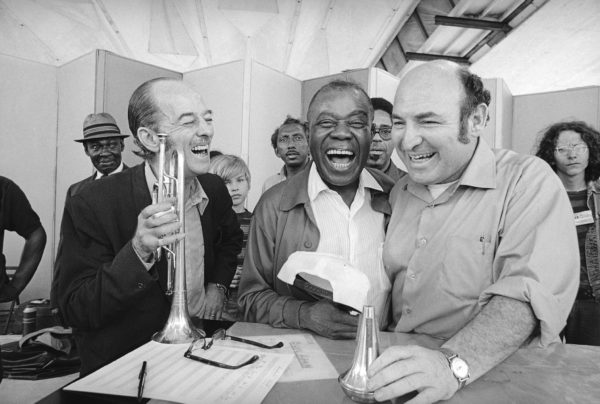
George Wein who died this week at 95 years old was an extraordinary person, who was often misunderstood. He loved music and wine and lived his life in pursuit of both on the highest level. He was a restless pianist who ended up being a club owner, record producer, concert promoter and festival creator/director. Some complained about not getting on one tour or another and others griped about being held to 50 minutes stage time. But those were disciplines that came with the job.
George’s taste were traditional, but he was a prime promoter in the careers of trailblazers like Miles Davis, Stan Getz, John Coltrane, Archie Shepp and so many more. He loved musicians and he loved the road. He also built an amazing international staff with people like Marie St. Louis, Simone Ginibre, John Philips and Danny Melmick who dedicated their lives to pulling off great events and treating musicians with love and kindness.
George was also fortunate to share a life with his wife Joyce who had many skills and complimented George and his musical activities seamlessly. Joyce passed away in 2005. His most cherished times were those shared with Joyce over food (she was a gourmet cook) and music and memories over experiences like playing piano for Lester Young for a week at Storyville in the early ‘50s. He was a no-bullshit delight and a generous soul. – Michael Cuscuna
Benny Goodman
DownBeat Interview
What a brilliant insight about the man and musician Benny Goodman back in 1964 when he was only 55. One of the ways to describe Benny Goodman’s persona is that jazz and the clarinet was of paramount importance and foremost in his mind. To back it up, this article, from a 1964 Down Beat written by Marian McPartland, is a most insightful and thoughtful expose of The King of Swing. There are quotes from many of Benny’s sidemen with examples of his quirky personality. – Scott Wenzel
Mosaic Records
Open House
This will be our final open house since we will be closing the office (the palace shown above) and working-from-home like many businesses these days. During the pandemic we found the business could operate efficiently primarily since we contracted out the warehouse functions a number of years ago and the software programs can now all be accessed remotely.
Sale Items:
Out-of-print Mosaic Sets
Partial Mosaic Sets
Over 125 out-of-print Mosaic booklets
Specially priced Francis Wolff Fine Art Prints and 8 x 10 prints.
Out-of-print Jazz CDs, boxed sets, LPs, 78s, DVDs and books.
Dates & Location
Thursday/Friday/Sat. Sept. 23-25 ; 11:00-5:00
425 Fairfield Avenue
Suite 421 (second floor)
Stamford CT 06902
Ahmad Jamal
Ahmad Jamal is first and foremost a pianist with a natural gift for the instrument. His technique, dynamics and control are something to behold, but the mind that manipulates what comes out of the piano is extraordinary. – Michael Cuscuna
Visit our Ahmad Jamal page which includes an interview with Kenny Washington and an excellent 35-minute Parisian performance that comes from the same 1971 tour that produced Ahmad Jamal’s live Montreux concert issued on Impulse.
Big Band Bird: Charlie Parker
Nightlights highlights a tandem not often thought of when discussing the music of Charlie Parker…his work with big band. David Brent Johnson explores the many instances where Bird was a young sideman with Jay McShann’s band and his work on Verve and guest starring with Woody Herman and Stan Kenton. Great show and an appropriate tribute, although not noted as such, to the recently departed Bird afficionado Phil Schaap. – Scott Wenzel
Jazz Store
While a substantial amount of music is unavailable on CD and LP, there are some gems that are either newly discovered material or reissued with improved sound and packaging. And jazz journalism, biographies and photographic archives have improved measurably in the past 60 years and set off a bonanza of well-done books on jazz from every vantage point. We have combed thru Amazon for CDs, LPs and Books that are currently in-print and our recommendations can be found by clicking image above.
If you click thru and purchase items on Amazon, we earn commissions. Thank you very much for your support!
A Love Supreme: Live In Seattle
54 years after his passing, people are still coming up with dramatic audio discoveries from legacy of John Coltrane. This one is a real surprise because we all thought we’d released everything from September 1965 at the Penthouse in Seattle. Now comes another live version of “A Love Supreme” from that gig with Pharoah Sanders, bassist Donald Garrett and alto saxophonist Carlos Ward. An astounding find since Trane had played his suite live only one other time at Antibes in July. – Michael Cuscuna
Phil Schaap
Phil Schaap, a fixture on the New York jazz scene for more than 50 years, succumbed to cancer on Tuesday, August 7 after a hard-fought four-year battle with the disease. His daily morning show “Bird Flight” on WKCR was an institution, shaped by his deep love of Charlie Parker’s music and his amazing memory for music and details. Programs could range from a two-hour lecture on minutiae on a specific day in Brid’s life to debuting newly discovered live music by Parker.
Phil was also an educator, historian and reissue producer on such high profile box sets like the Complete Verve recordings of Charlie Parker, the Complete Miles Davis-Gil Evans Studio Sessions and the Dean Benedetti Recordings of Charlie Parker. Above all, he was a great friend who was generous with his knowledge and who could take himself seriously one minute and laugh at himself the next. He will be missed in so many ways. – Michael Cuscuna
The Artistry Of Elvin Jones
How is it that Elvin can play just quarter notes on the whole drum set with both hands and feet in unison as he might do at times for several choruses and light up the stage and entire audience? Even the casual listener is drawn into his vortex and aura. One only has to look at the expression on his face, the sheer joy and light he spreads with that famous grin of his to realize that this is one very special human being with a power that reaches far beyond the music itself… – Dave Liebman (click image for more)
Carla Bley in the Hall of Fame
Right in time for her 85th birthday, Carla Bley tops the DownBeat 69th International Critics Poll and becomes their choice for the DownBeat Hall of Fame. About time, don’t you think?
Suzanne Lorge in her celebratory piece, Carla Bley: The Voice, charts the composer’s travels through 60 years of jazzdom, from her hanging with the New York avant-garde, composing for everyone from George Russell to Gary Burton, into her own big bands and orchestras, captivation of soul and R&B and back again toward chamber trios and duos. Not to mention her decades of recording, touring and entrepreneurship (with Michael Mantler) in record labels and distribution. And to this day, she doesn’t stop. Whew!
Back in 1970, there was an evening where Carla unknowingly opened my ears, eyes and my world, like she would for countless others over the years. I not so innocently stumbled past a “Closed Session! Do not enter!” sign at the RCA Studios having no idea what this “Jazz Composer’s Orchestra” was, but as a young rock’n’roller looking for more I was interested in whatever ‘jazz’ was. The giant studio floor was completely filled with musicians –sure, a rhythm section, but also cello, clarinet, tuba, a whole orchestra, wait, is that Don Cherry?!– and I had no idea that this was an early session for what would unfold as the three LP opera (operas were back in vogue after The Who’s Tommy) Escalator over the Hill. It sure didn’t sound like jazz that night, but boy was it intriguing.
A little later I overcame the indignity of Carla calling my college radio show when I admitted to chatting with friends during the New York radio debut of Escalator when she and Mantler invited me to become the packing assistant at their ground breaking New Music Distribution Service. And again when they asked me to do sound and road manager her first ever tour across the United States. Across every venture I was honored to witness, her open ended musical curiosity and open heart for the disenfranchised was mind expanding to anyone who would listen.
Once at NMDS, when we suggested dropping artist owned lines who barely sold but took just as much administration as the Philip Glass hits or the ECM releases, Carla admonished us.
“My music was rejected by everyone, always! We started NMDS to help all the artists that no one else wants. How about this? If someone sells at least one album a year, we keep distributing their line?” And that was it. From then on we all knew what it was all about.
Carla Bley stood for the artist and the art. What else is there? – Fred Seibert
Interview with Jackie McLean (by Steve Lehman)
Ethan Iverson has unearthed and published a 2000 interview of Jackie McLean on his Do The Math site. Saxophonist Steve Lehman, a former Jackie Mac student, conducted this extensive review asking astute questions that prompted a lot of memories and insight.
Chronology: Quincy Jones in the 1950s
Jazz Times has published “Jazz From Detroit ‘ author Mark Stryker’s perceptive study of Quincy Jones’ singular arranging work in the ‘50s.
Mosaic Set: Paul Desmond – Running Low
With a rhythm section that suited his every need, a renewed Paul Desmond delivered some of the best performances of his career. The repertoire consisted of standards, Brazilian songs, jazz classics and originals that the alto saxophonist loved to play throughout his career, challenging himself to breathe new life into material in his comfort zone.
The acclaimed journalist Doug Ramsey was one of Desmond’s closest friends and his biographer. He provides an insightful essay into Paul Desmond, the person as well as the artist and notes for these amazing sessions, half of which are unreleased.
Please order your set today! Once we run out of current supplies the set will no longer be available.
Maynard Ferguson with Stan Kenton on The Ed Sullivan Show-December 3, 1950
Here’s an early Ed Sullivan Show (at the time it was still “Toast of the Town”) from December 3, 1950 with Stan Kenton and his orchestra with solos by Bob Cooper, Art Pepper, Shelly Manne, Milt Bernhart and Maynard Ferguson. Considering Stan’s taste in jackets for the band, we should be thankful this is in black & white. – Scott Wenzel
The Lady Swings: Memoirs of a Jazz Drummer
I was not aware of Dottie Dodgion until I was sent an email by one of our Mosaic customers, Wayne Enstice. She is a 91 year old drummer and vocalist and worked with Charles Mingus, Benny Goodman and others. Her musical experience is told in a new book titled “The Lady Swings; Memoirs of a Jazz Drummer”. Further information can be gleaned from the University of Illinois Press website. – Scott Wenzel
Bix Society
Among the many “fan clubs” of jazz artists, the Bix Society is a strong one and here is their website that also includes the Bix Festival that went virtual last year. – Scott Wenzel
Half Nelson: Cool Perfection
Marc Myers has written a tribute to Miles Davis’s “Half Nelson” as an early example of East Coast cool, citing the original versions by Charlie Parker and the Miles Davis All Stars as recorded evidence. He’s also included a rare video of Lee Konitz and Warne Marsh performing the tune with an all-star ensemble. – Michael Cuscuna
The Mosaic Records booklets, produced for over 170 sets, have included session-by-session analysis by leading experts and essays by writers with either first-hand knowledge or known authorities regarding the particular musician or period of jazz.
Excerpts from these liner notes, session analysis and other material including contributions by Gary Giddins, Mike Peters, Scott Yanow, John McDonough, Loren Schoenberg and Doug Ramsey are featured on these artist pages:
Duke Ellington
© William P. Gottlieb Library of Congress
Django Reinhardt
© William P. Gottlieb Library of Congress
Artie Shaw
Woody Herman
Wayne Shorter Quartet – Masqualero
I’ve seen the Wayne Shorter Quartet with Danilo Perez, John Patitucci and Brian Blade many times over the past 15 or so years. But one night at the Montreal Jazz Festival stands out in my mind as an especially focused and inspired set by the group. This wonderful clip of Masqualero seems to support my memory. -Michael Cuscuna
The Secret Music Of Herbie Nichols
Between 1996 and 2001, The Herbie Nichols Project (a superb band with Ron Horton, Ted Nash, Frank Kimbrough and Ben Allison) researched and recorded three albums of Herbie Nichols’s innovative compositions, some of which were recorded nowhere else. David Brent Johnson’s “Night Lights” devotes an hour to these recordings.
Don Byas Returns
Documentary
JazzWax sends an intriguing documentary our way about the great Don Byas and his return to New York from Europe to perform at the Village Vanguard in 1970. This Dutch film called “Homecoming” is a wonderful close-up on Byas’s life and music. – Scott Wenzel
Duke Ellington Meets
Coleman Hawkins & John Coltrane
In this excerpt from his book on Impulse Records “The House That Trane Built” Ashley Khan writes about two of the most unusual and musically successful album projects: Duke Ellington Meets Coleman Hawkins and Duke Ellington & John Coltrane, both done in 1963. Despite their long careers, it’s amazing that Duke and Hawk never made music together before this session. Hawk is in great form and fits comfortably with the Ellington small group on the album. The summit meeting of Ellington and Coltrane defies category and contains many moments of genius, especially on Duke’s “Take The Coltrane” and “In a sentimental Mood.” – Michael Cuscuna
Satchmo Summerfest
Even though we are not totally out of the woods yet with this pandemic there have been signs of life…and life to many means the Satchmo Summerfest! The festival returns with two days of some outstanding live music plus seminars including Ricky Riccardi devoting one of his seminars to our new Louis Armstrong Columbia and RCA Victor Studio Sessions and It’s streaming live on the Satchmo Summerfest Facebook page. – Scott Wenzel
NEA Names Its 2022 Jazz Masters
Drummer Billy Hart made his mark with his compelling playing for the likes of Herbie Hancock, McCoy Tyner, Miles Davis, Charles Lloyd, as an anchor for the Cookers, and and now, at age 80, as leader of one of the most intriguing ensembles in the art form. His colleague in the Cookers, saxophonist Donald Harrison Jr., has been recognized or his advocacy, campaigning tirelessly for the music and young musicians of his native New Orleans. Bassist Stanley Clarke led a generation of bassists as a leader and collaborator with Chick Corea in both acoustic and electric music. And Cassandra Wilson, a bona fide vocalistic original, has fashioned a potent amalgam of jazz, blues and folk and country forms. Congratulations to all the recipients of this year’s awards, which must seem especially welcome to these musicians, however celebrated, as they navigate the peculiar challenges posed by these times.- Nick Moy
Bix Beiderbecke
“ain’t none of them play like him yet”
Back in the 1980s when video taping was new and the rage, I was ecstatic to record off of cable television a documentary I heard was being shown: “Bix: Ain’t None Of Them Play Like Him Yet”. It remains to this day one of the greatest of all jazz documentaries as it is one thing to document someone who is in the present, but this was of a true LEGEND and remarkable interviews with family members, fellow musicians from the 1920s was all brought together in meticulous fashion. Directed by writer-director Brigitte Berman, this magnificent documentary is being presented at the Film Forum (209 West Houston St. in NYC) that will include a conversation with Berman after the screening along with jazz critic/historian Will Friedwald and Film Forum repertory director Bruce Goldstein. – Scott Wenzel
A Selection of Big Band Albums
The best big band jazz albums are a testament to the durability and growth of the genre from swing masters like Count Basie and Duke Ellington to the expanded big band efforts of Stan Kenton and Don Ellis to the electrifying freedom of Mingus’s large ensemble. The body of work created by the masters of the big band is one of rich textures, driving rhythms and the sound of surprise.
1960s Modern Jazz Classics
The ‘60s in jazz was a crystallization of so many streams in the music. Hard bop reached its heights with composers like Wayne Shorter, Hank Mobley, Freddie Hubbard and Cedar Walton. The freedom principal was shaped by ensembles like the Ornette Coleman and Charles Mingus quartets. Miles Davis, John Coltrane and Randy Weston were among the pioneers who constantly evolved. What a period!
Jazz Album of the Week
WRTI – Temple University
One of Mosaic’s most recent offerings is the Louis Armstrong Columbia and RCA Victor recordings he made in the studios from 1946-1966. The detail and research that went into this release was truly overwhelming, but four dedicated souls and Armstrong fanatics serving as co-producers made it all possible. This set was recently highlighted on public radio station WRTI out of Temple University by Matt Silver and they injected the knowledge, passion and even some humor of Ricky Riccardi in a series of videos explaining and reliving the painstaking but ultimately divine outcome of this package. – Scott Wenzel
Joe Lovano & Dave Douglas Sound Prints
‘Other Worlds’
Despite their hectic solo careers, Joe Lovano and Dave Douglas found time in 2013 to form their challenging quintet Sound Prints with Lawrence Fields, Linda Oh and Joey Baron. Their third album Other Worlds was just reviewed very favorably in London Jazz News.
Benny Goodman vs Chick Webb
Savoy Ballroom
The Fertile Mind of Andrew Hill
In August 1986, I produced the first Mt. Fuji/Blue Note Jazz Festival outside of Tokyo. The affair was mostly all-star bands playing music from Blue Note recordings of the fifties and sixties. I invited Andrew and put together an ensemble of Joe Henderson, Woody Shaw, Bobby Hutcherson, Ron Carter and Billy Higgins. Don Sickler transcribed a set’s worth of Andrew’s tunes that Andrew and I had agreed upon.
Of course, he arrived in Tokyo with a suitcase of new music, all of it gorgeous, and all of it intricate. We managed a couple of rehearsals before the outdoor festival began. The winds were high that first day because a typhoon was heading straight for us. So all of Bobby Hutcherson’s parts blew away three minutes into the set. He winged it as best he could. Andrew kept getting up during tunes, running around to everyone’s music stands. Finally, Joe and Woody came over to me in the wings and said, “This music is hard enough to play. Can you get him to stop rewriting it while we’re playing it?” – Michael Cuscuna
15 Unique Voices of the Avant-Garde
The so-called avant-garde began to emerge in the mid ‘50s with work by Charles Mingus, Cecil Taylor and Sun Ra among others. What united these artists along with John Coltrane, Ornette Coleman, Paul Bley, Archie Shepp, Pharoah Sanders, Albert Ayler, the Art Ensemble Of Chicago and others was the desire to take the jazz aesthetic and move the music beyond the rules of be-bop and hard bop. They were unified more by purpose than by style. In the intervening decades, fresh, original artists have added their voices to this unique quest and we’ve compiled a list of these artists and featured tracks.
Benny Goodman
DownBeat Archives 1964
One of the ways to describe Benny Goodman’s persona is that jazz and the clarinet was of paramount importance and foremost in his mind. To back this up, this article, from a 1964 Down Beat written by Marian McPartland, is a most insightful and thoughtful expose of The King of Swing. There are quotes from many of Benny’s sidemen with examples of his quirky personality.
Bill Savory
An Unissued Gem
Here’s a taste of what (because of contractual reasons) is not on our Mosaic set of Bill Savory recordings. This clip has a dream gathering of Benny Goodman, Lester Young, Teddy Wilson and Roy Eldridge. It comes from the outstanding jam sessions put together by DJ Martin Block of WNEW in NY.
Blue Note Records
The Biography
National Public Radio has an interview by Liane Hansen’s in 2003 with the late Richard Cook upon the publication of his book “Blue Note Records – The Biography.” Richard’s title was the first book devoted entirely to Blue Note Records and its unique story.
Live Music Is Back!
Charles Mingus Big Band
The Mingus Big Band celebrates the music of composer/bassist Charles Mingus. Stocked with many alumni of Charles Mingus’s various groups, this ensemble brings new life to the bassist’s volatile yet beautiful compositions. On July 29, they reconvene at Drom in the lower East Side for their fist live performance since the Covid 19 outbreak.
Small Group Swing
The Complete CBS Buck Clayton Jam Sessions
George Avakian created and produced the Buck Clayton jam sessions for Columbia in the mid ‘50s. The recording ensembles are full of great swing musicians. Jam sessions? – yes. Wasted notes – not at all. Dan Morgenstern’s annotations cover this music accurately and vividly.
50 Small Group Swing Albums
The big band defined the style and economics of swing. But the all-star sextets and septets that drove small group swing were not scaled down big bands; they were their own genre with a new sound and a new orthodoxy. Here we’ve assembled and commented on 50 Small Group Swing gems.
Columbia Small Group Swing Sessions 1953 – 62
Small group swing was an outgrowth of the big band era and hard financial times. Independent labels like Commodore, Blue Note and HRS documented the music and dozen of clubs on 52nd Street brought it to life. By the ‘50s, modern jazz had become the standard and small group swing had less recording opportunities. Columbia Records was the largest American record label. Many of its executives were full-blown jazz fans, resulting in choice small group sessions being recorded from time to time.
Freddie Hubbard
Bolivia
This is an amazing clip of Freddie Hubbard at his fluent and volcanic best from the Blue Note Club in Tokyo in 1990. He’s playing Cedar Walton’s “Bolivia” with a powerful band that includes tenor saxophonist Don Braden, pianist Benny Green, bassist Jeff Chambers and drummer Carl Allen. -Michael Cuscuna
Charles Mingus
Live At Carnegie Hall – 1974
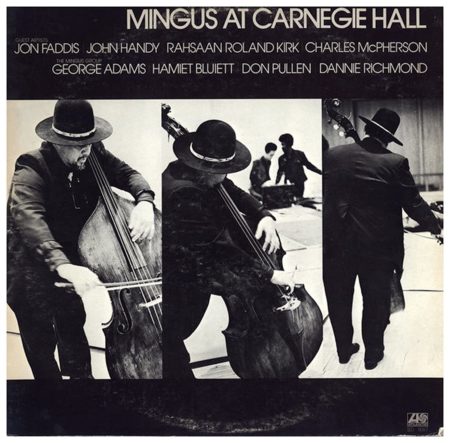
Originally recorded in January 19, 1974, Mingus At Carnegie Hall was released as an LP that only featured 2 long tracks. Yet the original concert in January of 74’ included 2 hours of performances, but nearly 70+ minutes were left on the cutting room floor. After 47 years Rhino has issued the complete 1974 Mingus At Carnegie Hall album with over 72 minutes of unreleased material and is available at Amazon. Michael Cuscuna provided liner notes.
Duke Ellington:
New York in the 1920s
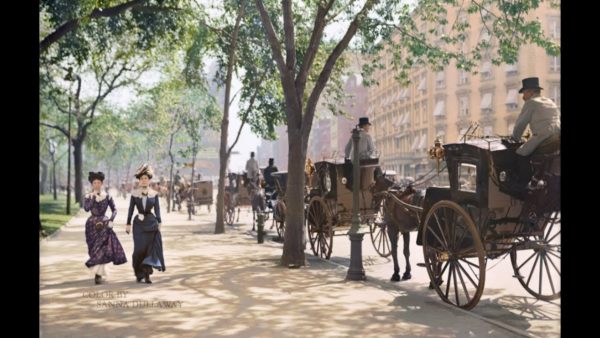
The United States in general and New York in particular have often been idealistically described as melting pots and to some degree, that rings true. In the case of the jazz world, New York has been its hub and its mecca for the last hundred years. Neighborhoods of all ethnicities have shifted and blended over the decades and Jazz has always been the beneficiary of these blended cultures. The essay “Duke Ellington – New York in the 1920s” from JAZZ by Gary Giddins and Scott DeVeaux details the beginnings of New York as the jazz capitol. – Michael Cuscuna
Steve Swallow Remembers Pete La Roca
Unsung Great on Drums
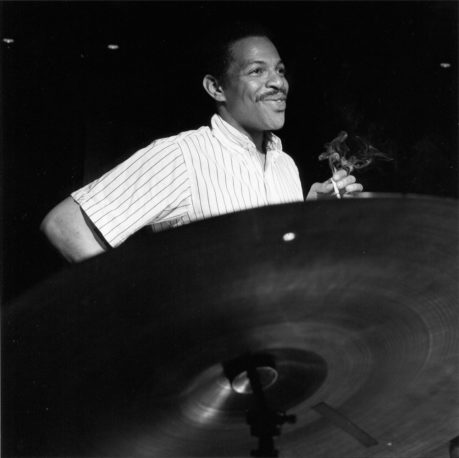
Ethan Iverson reached out to Steve Swallow for his April 7, 2021 Jazz Times column on Pete La Roca. Steve and Pete were inseparable in the early to mid ’60s. Pete was one of the unsung greats on the drums. Swallow’s memories and observations are priceless. – Michael Cuscuna
What Thelonious Monk’s Most Famous Composition
Owes to Dizzy Gillespie
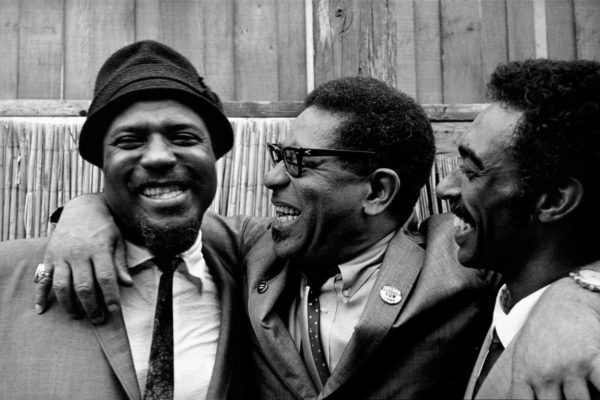
Pianist-author-historian Lewis Porter tackles the evolving history of Thelonious Monk’s “’Round Midnight.” There were plenty of claims and variations of Monk’s most famous composition. I think my favorite story is Miles Davis getting off the bandstand at the 1955 Newport festival, complaining to no one in particular that Monk played the wrong chords on the bridge, to which George Wein responded, “Ah for Chrissake, Miles, it’s his tune!” – Michael Cuscuna
Duke Ellington
Five Masterpieces
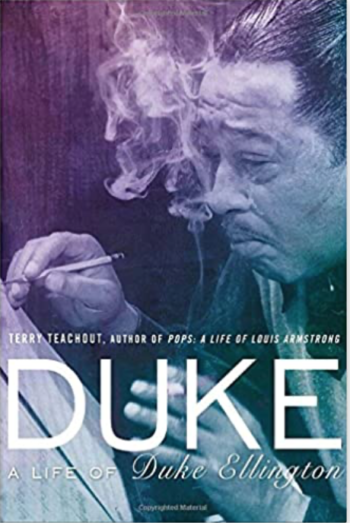
Terry Teachout takes an in-depth look at five of Duke Ellington’s’ greatest compositions
Miles Davis
Sketches of Spain
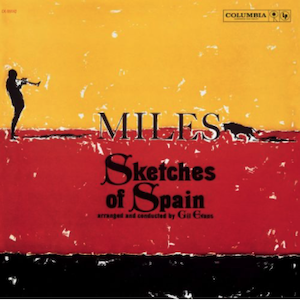
The rapport between the two men was unique and deeply felt. Gil Evans was Miles Davis’s best friend, mentor, and musical alter-ego. He was one of the first musicians who recognized Davis’s unique gifts and was perhaps the only one who could match the trumpeter’s insatiable need for change and growth. – Bill Kirchner
Lester Young & Billie Holiday
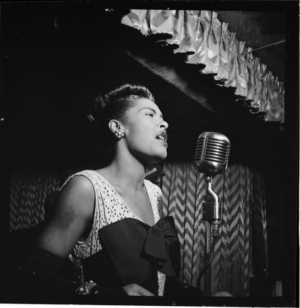
Billie Holiday had a small voice but she made every note count, expressing her emotions quite effectively in subtle ways and phrasing behind the beat. Lester Young had a light floating tone and while he could play fast, he preferred to create pretty melodies. They also had complementary viewpoints on life, particularly in the early days. – Scott Yanow
Louis Armstrong & Duke Ellington
The Ed Sullivan Show
Both Duke Ellington and Louis Armstrong were no strangers to the Ed Sullivan Show. Here we get a glimpse of the Sunday, December 17, 1961 “really big shew” with the Armstrong All Stars performing “In A Mellotone” which also features Joe Darensbourg on clarinet. – Scott Wenzel
Anthony Braxton
“In a way I feel like a billionaire”
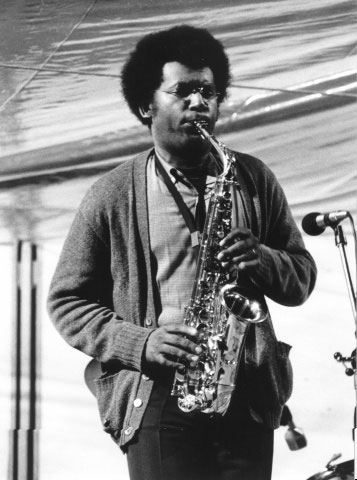
It should surprise no one that Anthony Braxton I remains vigorously at work giving voice to his brilliant musical vision. In this delight of an interview with Stewart Smith in The Quietus, Braxton is eager to dispel an image held in some quarters that he’s a dispassionate intellectual. Many of his lifelong musical proclivities, he tells us, don’t differ so much from those of many more mainstream enthusiasts; and we should keep an eye on his latest small group project exploring standards. Yet one constant permeates this interview: through it all, Anthony Braxton remains as exploratory as ever. – Nick Moy
John Coltrane
Chasin’ The Train
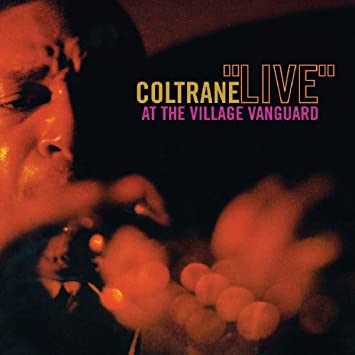
“I was living in a loft in the East Village in 1962. I heard my neighbor’s record player booming and I knew it was Trane. – Archie Shepp
John Coltrane’s November 1961 recordings at the Village Vanguard were a road map for various paths that his quartet would take over the next four years. “Chasin’ The Trane” was an exercise in freedom, intensity and the phonics of the saxophone. Coltrane said that it was inspired by the work of John Gilmore. When it was released on “Live At The Village Vanguard,” it was hailed as a brilliant step forward for contemporary jazz and the death knell for jazz itself. Sixty years later, we are still exhilarated by this performance. – Michael Cuscuna
Ornette Coleman
An Outsider Cracks the Egg
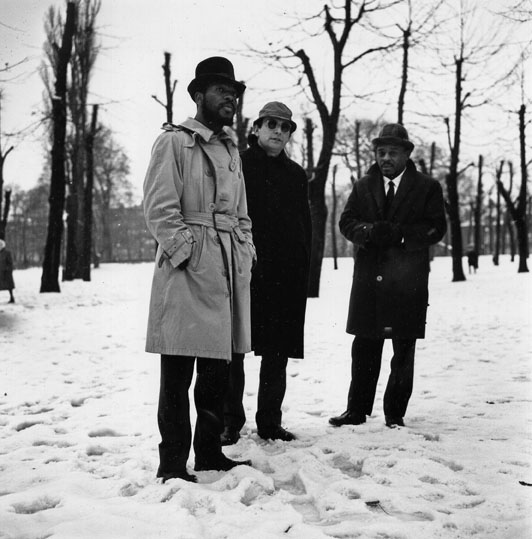
Steve Provizer’s essay on the impact and art of Ornette Coleman is thoughtful and informed. He even delves into the reasons that, as controversial as he was when he arrived on the scene, Ornette proved to be more famous and infamous than Cecil Taylor or Sun Ra. Listening to early works like “Ramblin’” and “Lonely Woman” tell the story. – Michael Cuscuna
Jazz Guitar
The Captivating Harlem Swing Rhythms
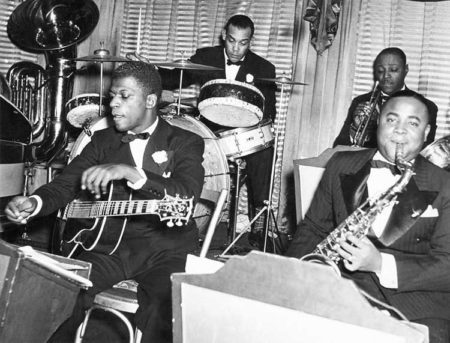
From AcousticGuitar.com the guitarist Nick Rossi really digs deep in this brilliant essay of early jazz guitar with examples and descriptions of chordal technique and fingerings possessed by these masters
Coleman Hawkins
Hawk’s Variations Solo Session
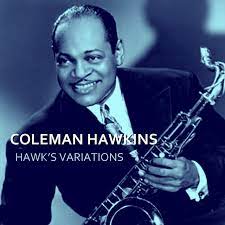
Harry Lim, a Javanese jazz lover who came to America in 1939, first produced jam sessions in Chicago and New York and then founded Keynote Records, a premier small jazz label. In an article for Metronome magazine in May, 1944, Lim dubbed Hawkins the Picasso of Jazz.
Black, Brown And Beige
Duke Ellington’s Historic Jazz Symphony
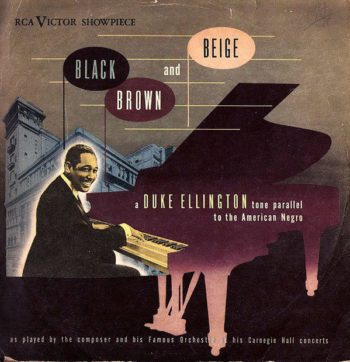
David Brent Johnson’s “Nightlights” program re-visits the origins and success of Ellington’s extended work “Black, Brown and Beige” that “premiered” at Carnegie Hall in 1943 (it actually premiered at my alma mater Rye High School the night before). Wynton Marsalis, Harvey Cohen and Ellington himself shed light on this important piece. – Scott Wenzel
Redman, Blade, Mehldau, McBride
Defy Notions Of The Genre
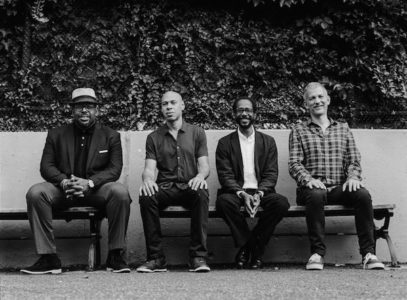
The quartet of Josh Redman, Brad Mehldau, Christian McBride and Brian Blade, all rising stars at the time, first came together in 1992 and stayed together for another 6 years. for Redman’s “MoodSwing” album. Gary Fukushima at DownBeat delves into their history, 2019 recording reunion and the planned tour that was postponed by the pandemic. – Michael Cuscuna
Earl “Fatha” Hines
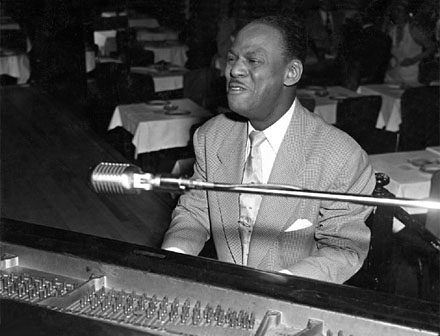
Earl “Fatha” Hines was one of the greatest jazz pianists of all time. His solos were consistently exciting and he had an innovative approach of his own from virtually the start of his career. With his dazzling technique and constant delight at playing the unpredictable even on familiar songs, Hines was always a joy to hear. – Scott Yanow
Louis Armstrong & Earl Hines
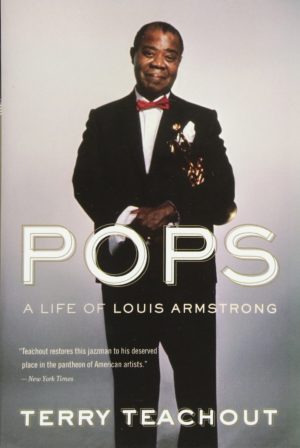
“Teachout delivers a taut and well-paced work that is astute in its critical judgments and gripping in its chronicle of the trumpeter’s life and times.” —The Weekly Standard
In this excerpt from his critically acclaimed biography “Pops: A Life of Louis Armstrong, Terry Teachout explores the relationship between two of the great jazz pioneers.
The Randy Weston Songbook
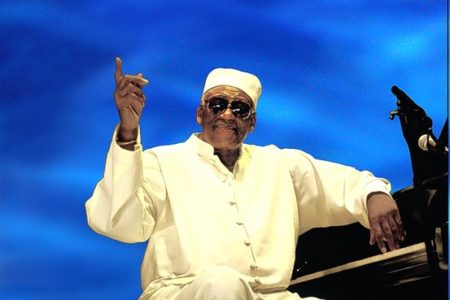
Randy Weston was a jazz giant in every regards. His compositions are varied and appealing. His pianistic ability used Basie and Ellington as a foundation for his singular, all-encompassing style. He was also one of the most patient and compassionate humans to walk the earth. This episode David Brent Johnson’s Night Lights is a one-hour joyful journey into the remarkable music of a remarkable man.
– Michael Cuscuna
A Makeover for Rudy Van Gelder’s Studio
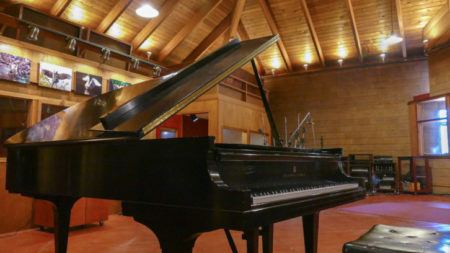
Steve Harvey’s article in Prosound about the late Rudy Van Gelder’s Englewood Cliffs studio and its recent innovation includes an amazing 1959 photograph of the studio under constructions. It was built to Rudy’s specs and design. He even found “cement” blocks made with a special acoustically favorable compound. The blocks were only made in the state of Washington and Rudy paid the railroad charges to bring thousands of them to his New Jersey property. – Michael Cuscuna
Art Blakey
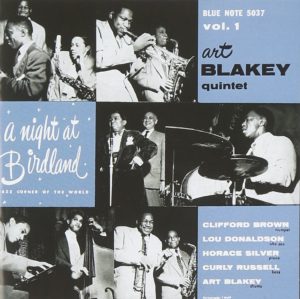
Bob Blumenthal’s essay on the Blue Note albums “Art Blakey Quintet: Live At Birdland” volume 1 & 2 cover their historical significance in pioneering live location recording, introducing new jazz giants to the public and setting the hard bop style in motion. The track “Quicksilver,” is featured and is the first of many Horace Silver compositions to become a jazz standard. The Quintet mix the virtuoso velocity of be-bop with bluesy, earthy attitude and phraseology. – Michael Cuscuna
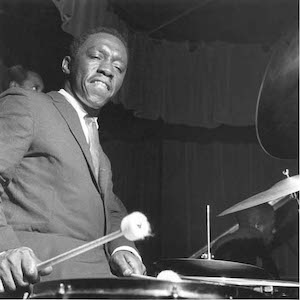
Jason Moran Journeys to the Dawn of Jazz Cinema
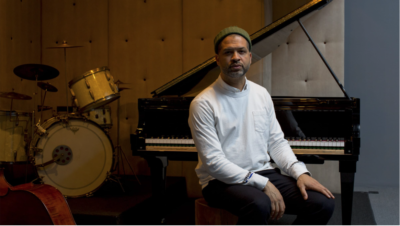
Pianist-composer Jason Moran has joins the ranks of outstanding jazz artists with a talent for scoring film; he recently wrote the music for “Selma” and “13.thThe Criterion Channel is showing a library of film shorts on jazz made between 1929 and ’39 and talks with Jason about their content and sociological and historical significance in this fascinating interview. – Michael Cuscuna
A Presidential Moment: Lester as a Band Leader
Albert “Tootie” Heath, who very early in his career had shared the stage with Lester Young, gives his impression of Pres’s band leading technique. – Scott Wenzel
Impressions Of Art Tatum At The Grand Piano
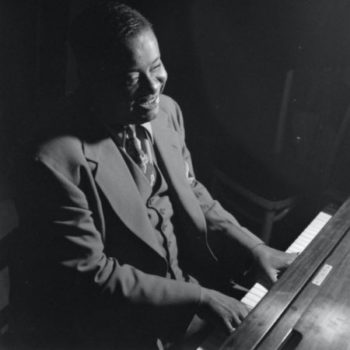
George Duning, a Down Beat reporter and quite possibly the man with the same name who later became an Oscar winning conductor, gives the reader an idea of what it was like to see and hear Art Tatum in 1935, a breakthrough year for the musician who was taking the jazz world by storm and leaving mouths wide open and jaws dropping. – Scott Wenzel
Lee Konitz interview on John Coltrane
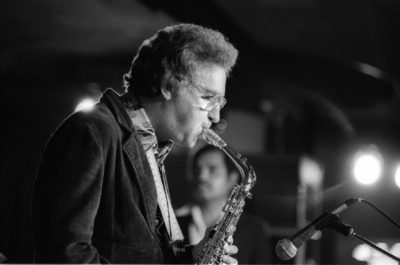
This 2007 interview is from Andy Hamilton’s “Lee Konitz: Conversations on the Improviser’s Art.” Lee was always a creative artist with his own unique perspective on music and art. Beyond his incredibly dry wit, he was always a straight shooter with his opinions. His comments on Trane (and Bird) here are intriguing. – Michael Cuscuna
Lionel Hampton
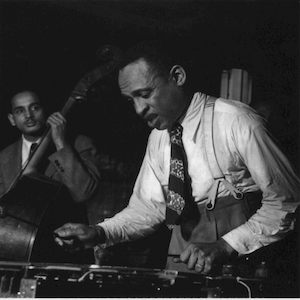
I’m In The Mood For Swing
Track analysis by Loren Schoenberg
Lionel Hampton hits pay dirt for the first time with arrangements and players that are of equal quality. Benny Carter, 30 years old and just back after three years in Europe, announced his return to his native country with brilliant writing and playing. Texas is represented by 22 year-old Benny Goodman trumpeter Harry James and 28 year old Herschel Evans, featured tenor saxophonist with Count Basie…
Flying Home
History of this Jazz Classic by Scott Yanow
It was a fairly simple swing tune that in a classic three-minute recording by Lionel Hampton virtually gave birth to rhythm and blues. Quite a few early r&b tenor players based much of their careers off of Illinois Jacquet’s two-chorus solo, and it became a must in virtually every performance by Hampton, Jacquet, and his successor Arnett Cobb…
Miles Davis Quintet
Gingerbread Boy
This version of Jimmy Heath’s Gingerbread Boy by Miles Davis, Wayne Shorter, Herbie Hancock, Ron Carter and Tony Williams in Karlsruhe during their 1967 European tour is not to believed. That mere mortals can achieve this level still amazes me. -Michael Cuscuna
Bud Powell at Birdland: 1953
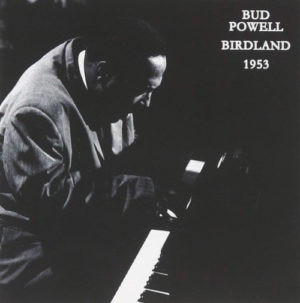
Bud Powell’s life had many ups and downs, and so did his playing. His trio work in the ‘50s ranged from sublime (the Blue Notes and some of the Verves) to dismal. Marc Myers highlights a 3-CD set of Bud live at Birdland issued on ESP-Disk. I haven’t hear the music but this review makes it incredibly enticing. -Michael Cuscuna
Conversation with Richie Beirach & Dave Liebman
One of the latest installments of David Schroeder’s NYU Steinhardt Jazz Studies interviews is with Dave Liebman and Richie Beirach. Dave is well known as one of the great storytellers, but Richie has always been his equal and steps in on this in-depth conversation. -Michael Cuscuna
In Jazz History, 1957 belongs to
Thelonious Monk and John Coltrane
Bob Blumenthal provides an in-depth look at the special relationship and extraordinary music they produced. Includes the momentous 2005 discovery by the Library of Congress and analysis of the full Carnegie Hall concert.
“Working with Monk brought me close to a musical architect of the highest order I felt I learned from him in every way – through the senses, theoretically, technically. I would talk to Monk about musical problems, and he would sit at the piano and show me the answers just by playing them. I could watch him play and find out the things that I wanted to know. Also, I could see a lot of things that I didn’t know about at all.” – John Coltrane, Down Beat 1960
Chu Berry
Teddy Wilson & His Orchestra
Roy Eldridge (tp), Benny Morton (tb), Chu Berry (ts), Teddy Wilson (p), Dave Barbour (g), John Kirby (b), Cozy Cole (d), Billie Holiday (vcl). NYC, October 25, 1935
There’s no mistaking Chu Berry’s influence on Charlie Parker (who named his first son for Berry) and every other bebopper, John Coltrane, and a host of other saxophonists today who may not even know from whom the ideas originated.
Spirits, Ghosts, Witches & Devils
The Life and Death of Albert Ayler
Magnet has republished Mitch Myers’ 2004 superb, well-researched story of the life and death of Albert Ayler, a musician who drew his inspirations from the early 1900s and created a unique path into the future. His life and his music remain mysterious and otherworldly.
-Michael Cuscuna
Best Jazz Recordings
Louis Armstrong
Hotter Than That
December 13, 1927
By Ricky Riccardi
By the time we get to “Hotter Than That” from late 1927, the New Orleans ensemble sound is mostly gone. It is now a string of solos from start to finish, Armstrong opening the proceedings and setting the bar high on this romp based on the chord changes to “Bill Bailey.” Clarinetist Dodds and trombonist Ory contribute exciting outings but both sound primitive after Armstrong’s seamless brand of swing.
In the middle of the record, we hear Armstrong’s distinct voice for the first time in a stunning display of scat singing. Armstrong had put scat on the map with his 1926 record of “Heebie Jeebies” but he turns the “nonsense singing” into high art here during his duet with special guest Lonnie Johnson, another New Orleans native and a pioneer guitarist.
In the final chorus, Armstrong uncorks a spiraling ascending phrase before hammering home a two-note riff over and over, foreshadowing a decade’s worth of big band writing that would follow in the 1930s.
Armstrong’s playing was now stimulated by younger contemporaries who grasped his concept on how to solo and how to swing. Having transformed jazz from an ensemble-based music into a soloist’s art, Armstrong bid adieu to the original Hot Five shortly after this session.
Blue Train
“We’re listening to Blue Train, which to me is one of the most beautiful pieces on one of the most beautiful records that Coltrane recorded in the fifties. – Michael Cuscuna, Traneumentary podcast
Christian McBride: How Jazz Will Return
Before the world went into lockdown, few musicians could match the Christian McBride for the sheer range and ferocity of his activity. Eric Easter of the Washington Post elicited some of McBride’s thoughts on what will happen in jazz, and in particular, live jazz, as the world braces to return to normal — or whatever normal will mean– and what will be different. -Nick Moy
Read from the Washington Post…
Julius Hemphill
A Blues Surrealist
Adam Shatz has researched and written a brilliant essay on the life and music of Julius Hemphill, an extraordinary composer and alto saxophonist who never really attained the level of acceptance that he so richly deserved. -Michael Cuscuna
Donald Byrd
Royal Flush
By Bob Blumenthal
Among its many exceptional qualities, it marks the first Blue Note appearance of the Butch Warren/Billy Higgins rhythm section that would also be heard on the label behind Jackie McLean, Sonny Clark, Hancock, Don Wilkerson and Dexter Gordon.
Count Basie Kansas City Seven
Lester Leaps In
September 5, 1939
By Loren Schoenberg
Lester Leaps In became the saxophonist’s own signature number for the remaining two decades of his life. It is based on I Got Rhythm a composition that he had already long used as a showcase. Here we get a glimmer of what John Hammond was referring to when he wrote:
Duke Ellington
La Plus Belle Africaine, 1969
Thanks to Scott Yanow and Jazz on the Tube for bringing this Ellington gem to the forefront: the band’s performance of La Plus Belle Africaine, from Tivoli Gardens in Copenhagen. Russell Procope’s clarinet kicks off the solos, Victor Gaskin adds an arco bass solo, Ellington comments and Harry Carney sums it up. -Nick Moy
The Thelonious Monk Orchestra
At Town Hall
By Bob Blumenthal
Unlike fellow modern pioneers Dizzy Gillespie and Charlie Parker, Thelonious Monk did not pay substantial dues in the big bands. While Monk held the piano chair briefly in Gillespie’s orchestra, and had heard his “Round Midnight” introduced by Cootie Williams’ band, his music seemed resolutely small group oriented.
At the close of 1958, however, with his quartet disbanded and yet another licensing hassle temporarily keeping him out of New York City clubs, Monk embraced his advisors’ idea of presenting a concert featuring both a reorganized quartet and a larger ensemble.
Lee Morgan
The Rajah Reviewed
LondonJazzCollector does an excellent review of Lee Morgan’s The Rajah, now released on the Blue Note Tone Poet audiophile LP series. Unfortunately, they make one bizarre assumption that the catalog number of its first release in 1985 (BST 84426) was assigned in 1972 when Lee Morgan was killed. Actually we assigned the number in 1985 when we were still able to carry on the BST 84400 series in releases. -Michael Cuscuna
Clifford Brown & Max Roach
Joy Spring
By Michael Cuscuna
Although he had only three years on the national jazz scene before his tragic death in an automobile accident in June, 1956, Clifford Brown managed to cast a large presence as a trumpeter and composer. His originals like “Minor Mood,” “Tiny Capers,” “Daahoud” and “Joy Spring” signified the arrival of a composer of substance with his own identity.
Much like Benny Golson, he had an enormous melodic gift and structural sense. Most of the tunes that he introduced during his all too short recording career have become jazz standards.
Thelonious Monk
Three of his Greatest Compositions
By Michael Cuscuna
Misterioso has been one of Monk’s most influential recordings, and small wonder. It is a summation of Monk’s work up to that time, and, in both composition and solo, a wondrous example of his artistic maturity and his awareness of the challenge of discipline and economy.
Count Basie And His Orchestra w/Lester Young
February 4, 1939
This is the Birth of Something New
A musical analysis of Lester Young’s famous solo would include his use of fourths, an unusual choice of interval for the time and one that presages much of later jazz; Gunther Schuller has noted Young’s scalar approach set the stage for what has been called “modal jazz,” as well as for George Russell’s various theories of tonal organization. Furthermore, there is the sheer “coolness” of his sound and general approach to what had been a “hot” art form. – By Loren Schoenberg
Thelonious Monk
Columbia Records (1962–1968)
By Bob Blumenthal
While Thelonious Monk had not brought a working band into a recording studio since 1959, his current quartet of Charlie Rouse, John Ore and Frankie Dunlop on drums had been together for two years, including a European concert tour. In contrast to the practices of independent jazz labels, where budgets dictated that entire albums be taped in one or two sessions, Columbia employed an approach more to Monk’s liking, scheduling several visits to its famed studios and settling for one or two master takes per visit, with any additional material saved for future release.
This is how Criss-Cross, Monk’s second Columbia album, was assembled from four sessions in November 1962 and February 1963. It became one of Monk’s most popular titles, and remains the best overview of what his music had been about to that point in his career.

